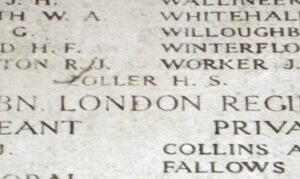The County Town of Carmarthen has a rich military history, dating back to the Roman invasion, and the establishment of the town of Maridunum. The Normans built on this, establishing a castle lower down the River Towy, then building the castle which can be seen today, overlooking Towy Bridge. During the wars which followed, Carmarthen men rose to the call of their country, but none was to match the effort of Carmarthen during the Great War of 1914-1918, when it became an important recruitment, training and billeting centre for West Wales. The town was home to two famous battalions of the war; the 1/4th Battalion (Territorial), and the 15th Battalion (Service) of the Welsh Regiment, both proudly bore the Carmarthen title; also the Pembroke Yeomanry were billeted at the town.
The men of Carmarthen who fell during the Great War were commemorated on the 1922 published Carmarthen County War Memorial roll, which was a pamphlet which accompanied the unveiling of the County War Memorial at Priory Street. Many of these men are commemorated on various memorials throughout the town, for example at Christ Church and St. Peters Church, but this page serves to bring all of these men together in one place. In addition, many men have been added who seem to have somehow been missed from the original roll, but who have strong links to the town, as they were either born there or had resided there. Many more men from the surrounding county enlisted at Carmarthen into the forces, but to add them all would be impossible.
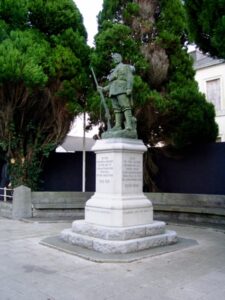
Carmarthen War Memorial, The Great War, 1914-1918
Frederick Gwynne Adams, Private, 202156, Welsh Regiment. Frederick was the son of Thomas and Alice Anne Adams, of 14, Morley Street, Carmarthen. He enlisted at Carmarthen into the 1/4th Battalion, Welsh Regiment, and was posted to Egypt in June 1916, after the battalion had been evacuated from Gallipoli. The battalion was attached to 159 Brigade, 53rd (Welsh) Division, and in March 1917 took part in the advance into Palestine. Frederick probably fought at the First Battle of Gaza, but soon took ill, and was hospitalised at Port Said. He died there on 4 November 1917, aged 23, and is buried at Port Said War Memorial Cemetery, Egypt.
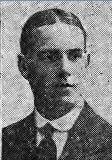
Thomas Michael Baker, Sapper, 448432, Royal Engineers. Thomas was born at Waterford, in about 1871, the son of John and Catherine Baker. The family moved to Swansea prior to 1873. Thomas married Mary Anne Thomas on 10 October 1897, and the couple lived with her parents at 58, Lammas Street, before setting up home at 15, Union Street. Thomas enlisted at Carmarthen on 19 May 1915 into the Welsh Field Company, Royal Engineers, which was attached to the 53rd (Welsh) Division and knocked four years off his age. Thomas embarked for Gallipoli with the division in July 1915 but soon contracted dysentery and returned to Britain on 5 December 1915. Upon recovering, he was posted back out to France on 25 April 1917 and remained there working as a telegraph linesman until embarking for England on 23 January 1919. He had survived the war, but his health had deteriorated, and he was discharged from the army as physically unfit on 16 February 1919. He died at Carmarthen on 31 August 1919, aged 48. Thomas is buried at Swansea (Danygraig) Cemetery.
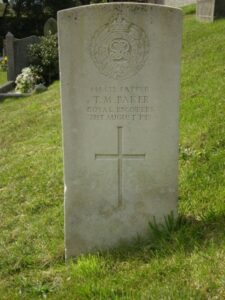
Charles Owen George Bard, Private, 28592, Welsh Regiment. Charles was the son of Charles and Alice Bard, of 33 Kimberley Road, Walthamstow. He was living in Carmarthen at the outbreak of war and enlisted there into the Welsh Regiment. He was posted to the 18th Battalion, Welsh Regiment (2nd Glamorgan), which was attached to 119 Brigade, 40th (Bantam) Division. The battalion landed in France on 3 June 1916 and moved to positions in the Loos area for initiation into trench warfare. Charles was badly wounded within weeks of arriving in France, and died in hospital at St. Omer on 9 July 1916, aged 19. He is buried in Longuenesse (St. Omer) Souvenir Cemetery, France. Charles is not commemorated locally.
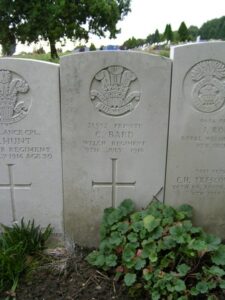
Adler Baritz, Acting Corporal, 39575, South Wales Borderers. Adler was born in 1896, the son of David and Leah Baritz, of 8, Hodgson Street, Waterloo Road, Cheetham, Manchester. He must have lived in Carmarthen prior to the war, and enlisted there into the army. He was posted to France, where he joined the 2nd Battalion, South Wales Borderers, which was attached to 87 Brigade, 29th Division. The Division had fought at Gallipoli, before being evacuated to Egypt, moving to the Western Front on 15 March 1915. The Division took part in its first major action in France during the 1916 Somme Offensive, and fought at the Battles of Albert and Le Transloy, suffering heavy casualties. In the spring of 1917 they fought at the Battle of the Scarpe, which was part of the Arras Offensive. Adler was wounded during an attack near Monchy-le-Preux, and died on 27 April 1917. He was 21 years old, and is buried at Duisans British Cemetery, Etrun, France.
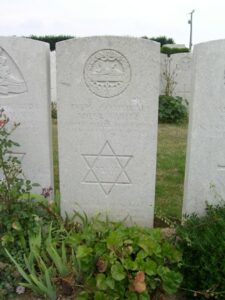
Albert Morgan Barnett, Private, 2022, Welsh Regiment. Albert was the son of Josepha and Anne Barnett, of Carmarthen. He married Margaret Jennet Thomas in 1899, and the couple resided at 3, Island Row, The Quay, Carmarthen. Albert was probably an army reservist, and went to France soon after the outbreak of war with the 2nd Battalion, Welsh Regiment. The battalion was attached to 3 Brigade, 1st Division, and took part in the retreat from Mons to the Marne. After playing an important part in the stemming of the German drive on Paris, the Division moved to Ypres, and the Welsh again saw heavy fighting, helping stop the German drive to the Channel. After a terrible first winter in France the 2nd Welsh were at La Bassée in February 1915. Albert was riding a horse near the front, when a shell exploded, scaring the horse. Albert was thrown off, and received injuries to his head. He died on 3 February 1915, aged 39, and is buried at Boulogne Eastern Cemetery, France.
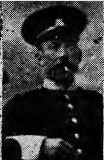
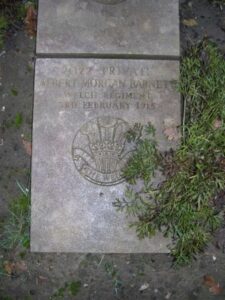
Thomas Bona, Private, 38147, Welsh Regiment. Thomas was the son of Ann Bona, of Danybank, Carmarthen, and worked as a Striker for the GWR prior to the war. He enlisted in the town into the Welsh Regiment, joining the 9th Battalion, which was attached to 58 Brigade, 19th (Western) Division. The Division assembled around Bulford during September 1914, and trained near Tidworth, from March 1915, before moving to France during July 1915, taking up positions near Loos. The Division fought during the opening attack of the Battle of Loos on 25 September 1915 and it was on this first charge that Thomas was killed. He was 23 years old and is commemorated on the Loos Memorial, France.

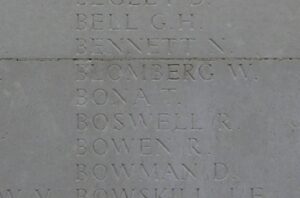
Thomas Henry Bowen, Private, 8357, South Staffordshire Regiment. Very little is known about Thomas, but he seems to have been born at Wigan. He enlisted into the 1st Battalion, South Staffordshire Regiment at Wolverhampton, which had been at Pietermaritzburg, South Africa at the outbreak of war, before returning to England, and joining 22 Brigade, 7th Division. The Division had landed at Zeebrugge on 6 October 1914, before moving to Ypres, where it helped stop the German drive to the Channel Ports. On 20 December 1915 the 1st South Staffs transferred to 91 Brigade, 7th Division. Thomas probably fought at the Battle of Loos in September 1915, and was with the Division when it moved to the Somme in the summer of 1916. Thomas was killed in action during the Battle of Delville Wood on 25 September 1916. For some strange reason, he is commemorated on the Ploegsteert Memorial, Belgium.
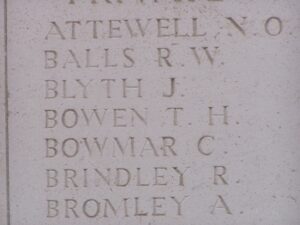
Thomas John Bowen, Corporal, 200942, Welsh Regiment. Thomas was the son of Thomas and Elizabeth Bowen, of Carmarthen. He enlisted there into the 1/4th Battalion, Welsh Regiment. On 4 August 1914 the Battalion formed at Carmarthen, as part of South Wales Brigade, Army Troops, then joined 159 Brigade, 53rd (Welsh) Division, before sailing from Devonport on 19 July 1915 for Mudros. From here the Division was landed at Suvla Bay on 9 August. Here they were plunged into the thick of the fighting and suffered terrible casualties over the coming months. Thomas was captured by the Turks at Gallipoli, and was sent to a POW Camp at Damascus, where the British POW’s were used as forced labour. Thomas died of sickness in captivity on 9 May 1917, and is buried at Damascus Commonwealth War Cemetery, Syria. His brother, William Henry Bowen, was taken prisoner at the same time, and died in captivity on 2 April 1917.
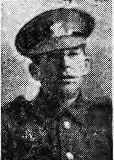
William Bowen, Chief Stoker, 276237, Royal Navy. William was born in Carmarthen on 8 March 1873, the son of George and Mary Bowen, of 86, Priory Street, Carmarthen. He enlisted into the Royal Navy several years prior to the war, and was married to Amelia Bowen, of Whitfield Farm, Poundbury, Dorchester, Dorset. At the outbreak of war William served aboard HMS Amphion, which was an ‘Active Class’ Cruiser, that had been built at Pembroke Dockyard. In the afternoon of 5 August 1914, Amphion, with the Third Flotilla, chased down a suspicious boat, which had been spotted throing things overboard. This ship turned out to be a German Minelayer, and she was chased and sunk by the Flotilla. They then raced to intercept another suspicious ship, which turned out to be the St. Petersburg, which was carrying the German Ambassador back to Germany from England. The Flotilla moved back to their search area, and at 6.30 am Amphion struck one of the mines that had been laid by the German Minelayer. Badly damaged, and with heavy casualties onboard, Amphion stopped, and the escorting destroyers closed in and took off her surviving crew. The current carried her back into the minefield, and just three minutes after the last boatload of survivors were taken off, she again struck the same row of mines, and exploded, with debris striking the rescue boats and destroyers, sinking within 15 minutes. Around 150 British sailors were killed in the sinking, as well as 18 of the crew rescued from the SMS Königin Luise. The war was only 36 hours old, and the Amphion had been the first Royal Naval Ship sunk. William was killed during the initial explosions, and is now remembered on the Plymouth Naval Memorial, Devon.
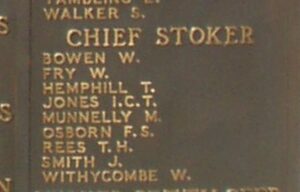
William Henry Bowen, Private, 200943, Welsh Regiment. William was the son of Thomas and Elizabeth Bowen of Carmarthen. He enlisted at Carmarthen into the 1/4th Battalion, Welsh Regiment. On 4 August 1914 the Battalion formed at Carmarthen, as part of South Wales Brigade, Army Troops, then joined 159 Brigade, 53rd (Welsh) Division, before sailing from Devonport on 19 July 1915 for Mudros. From here the Division was landed at Suvla Bay on 9 August. Here they were plunged into the thick of the fighting and suffered terrible casualties over the coming months. Thomas was captured by the Turks at Gallipoli, and was sent to a POW Camp at Damascus, where the British POW’s were used as forced labour. WIlliam died of sickness in captivity on 12 April 1917, aged just 20. He has no known grave, and so is remembered on the Jerusalem Memorial, Israel. His brother, Thomas John Bowen, was taken prisoner at the same time, and died in captivity on 9 May 1917.

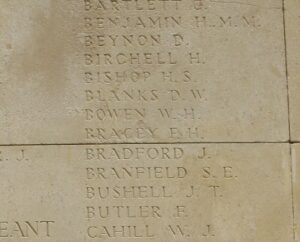
Frances Ethel Brace, Staff Nurse, Queen Alexandra’s Imperial Military Nursing Service. Frances was born early in 1886, the daughter of William and Jane Brace of Beaver’s Hill, Manorbier. By 1901, Jane had passed away, and the family lived at Great Honeyborough Farm, at Neyland, where Frances worked for her father. She then trained as a nurse, obtaining a post at Carmarthen Infirmary at sometime in 1912. After four years at Carmarthen, Frances then volunteered for service with Queen Alexandras Imperial Military Nursing Service on 16 June 1916, and was posted to a Field Ambulance in Salonika. The British had opened up a front in Salonika late in 1915 to aid the Serbian Army against an attack by Austro-Hungarian troops. The campaign became better known for the disease and suffering in the taxing conditions the troops faced there. Frances was one of many to succumb to illness at Salonika. She contracted malaria, and was evacuated to the Military Hospital at Malta, where she died on 21 September, 1916, just three months into her military service. She was by then 30 years old, and is buried at Pieta Military Cemetery, Malta. Her Memorial Plaque, together with its Buckingham Palace accompanying slip and envelope, two contemporary photographs of Frances at a field hospital, another of her grave, and another of the Cosheston Memorial, together with related newspaper cuttings and a silk memorial cloth, printed with her photograph and an epitaph, were sold at Sotheby’s in 2000 for £770. Many thanks to Garth McGowan for the photograph of Frances’ grave.
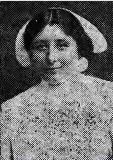
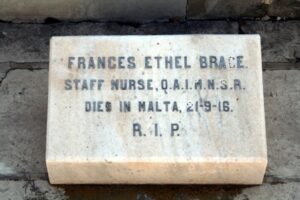
Harry Brown, Private, 56949, Welsh Regiment. Harry was the son of Edley and Angelina Brown, of 29, Bedford Street, Darlington. He moved to Carmarthen several years prior to the war, where he worked as a hairdresser at King Street. Harry enlisted at Carmarthen on 21 March 1916 into the Pembroke Yeomanry. Harry was sent to France on 4 August 1916, where he was posted to the 13th Battalion, Welsh Regiment, who had just moved to Boesinghe with 114 Brigade, 38th (Welsh) Division, after their part in the capture of Mametz Wood. Early on the morning of 22 November 1916, the 13th Welsh sent a four man patrol out into No Man’s Land, where they came across a German patrol, and exchanged fire. The Germans retaliated with bombs. The war diary shows that one man was killed, one wounded, and two became missing. Harry must have been one of these men. He was 34 years old, and is buried at Essex Farm Cemetery, Belgium. Harry is not listed on the Carmarthen County War Memorial Roll.
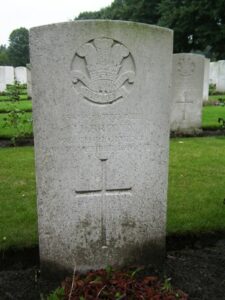
Thomas John Buckingham, Private, 3813, Welsh Regiment. Thomas was the son of John and Elizabeth Buckingham, of 31, Tony Terrace, Llandeilo, and the Husband of Elizabeth Buckingham. He had enlisted at Carmarthen into the 4th Battalion, Welsh Regiment, which had formed there on 4 August 1914. Sadly Thomas died at Pembroke on 11 October 1914, aged 22 and is buried at Carmarthen (St. Mary) Roman Catholic Churchyard.
George Thomas Carpenter, Private, L/7233, Royal West Kent Regiment. George was born in Dalston, London on 6 October 1881, the son of Richard and Margaret Carpenter. He had enlisted at Stratford, London in March 1903 into the 1st Battalion, Royal West Kent Regiment, and served for several years in South Africa, before returning to Britain, where he married Miss Sage Richards, of Carmarthen, at Shoreditch on 8 April 1912. At the outbreak of the Great War, the 1st Royal West Kent’s were attached to 13 Brigade, 5th Division and moved to France, landing at Havre on 15 August 1914. They fought at the Battle of Mons, and during the retreat south, fighting at Le Cateau, then down to the Marne where the German attack was halted. They took part in the push back to the Aisne, before moving to Flanders, where they fought at the Battle of La Bassée, where George was wounded. George died of wounds on 27 October 1914 and is buried at Bethune Town Cemetery, France.
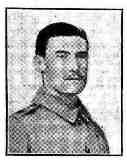
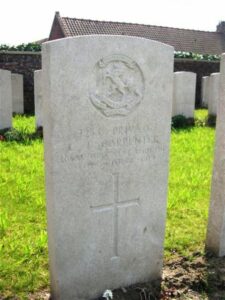
George Harold Chadwick, Private, 38660, Royal West Kent Regiment. George was the son of Thomas James and Hannah Chadwick of Manchester. He had moved to Carmarthen prior to the war, and had married Mary Elizabeth Jones, of 24, Woods Row, setting up home at 6, Parade Road, Carmarthen, where the Mary gave birth to the couple’s two children. George found work as a chauffeur with Mr. Bradbury Jones of the West Wales Garage, and worked in that capacity for three years before joining the Army Service Corps in 1917, serving as a Driver. In March 1918 the Germans launched a massive offensive on the Somme, and George was transferred to the infantry, who had suffered terrible losses in the opening weeks of the German attack. George joined the 8th Battalion, Royal West Kent Regiment, attached to 72 Brigade, 24th Division. The Division was north of St. Quentin over the winter of 1917/18, and were here when the Germans launched their Offensive on 21 March 1918, fighting a famous defence of the village of Le Verguier. They then fought a brave rearguard action at the Somme Crossings, and then at the Battle of Rosieres and the Battle of the Avre, before being moved to Flanders. Here the Division saw heavy fighting at the First Battle of Kemmel, before moving south again, where they fought at the Battle of Cambrai, part of the Battle of the Hindenburg Line. After the German defences had been breached, the Division pushed on, taking part in the Pursuit to the Selle, which is where George was killed on 26 September 1918. He was 30 years old, and is buried at Aix-Noulette Communal Cemetery Extension, France. George had a brother, Thomas Louis Chadwick, who was killed in France on 18 April 1918.
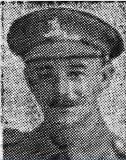
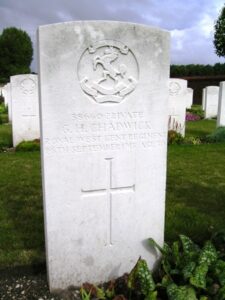
George Ernest Vernon Champion, Sergeant, 33268, King’s Liverpool Regiment. George was born at Middlesex in 1879. He enlisted at Haverfordwest on 15 September 1914 into the 7th Battalion, King’s Shropshire Light Infantry. A year later he transferred to the King’s Liverpool Regiment, and was stationed with the battalion at Carmarthen before it embarked for Salonika. He had served there for almost two years before being invalided home through the effects of malarial fever. He was subsequently discharged and went to a sanatorium at Neath, and returned from to his home at 19, Hawthorne Cottage, Johnstown about two weeks before his death from tuberculosis on 6 June 1918, aged 40. He is buried in Carmarthen Cemetery. A contemporary newspaper report mentioned his funeral: ‘The funeral took place on Thursday, the 6th, at the Cemetery. The Rev. Father Nicholas officiated throughout. A party of the Labour Battalion acted as bearers. The mourners were: Mrs. Champion (widow); Mr. Russel, Milford Haven (brother-in-law) Miss Summers and Master H. Summers, Haverfordwest (nephew and niece); Miss Summers, Haverfordwest (cousin); and Miss Griffiths, Haverfordwest. Beautiful wreaths were sent by the following – Widow and niece Mrs. Murphy, Haverforwest; Mr. and Mrs. Summers; Kathleen, May & Annie (Mental Hospital); all at Laurel Cottage; Mr. and Mrs. Pugh; Mrs. Rogers, Lammas-street. Mrs. Champion wishes to thank all those who sympathised with her in her sad bereavement.’ George is not commemorated locally.
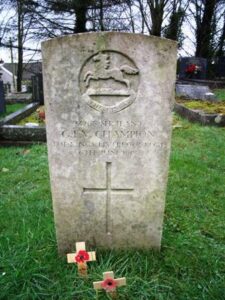
Albert Harry Chappell, Private, 1194, Royal Army Medical Corps. Albert was the son of William and Eliza Ann Chappell, of Aylesford Row, Eccles, Maidstone, Kent. He enlisted at Chatham into the Royal Army Medical Corps, and moved to France with their 10th Field Ambulance, which was attached to the 4th Division, and then took part in the epic retreat to the Marne, where the German Offensive was halted, and in the advance to the Aisne. The Division was then moved north to Flanders, and took part in the Battle of Messines, where Units of 4th Division took part in the famous Christmas Truce while they were still in this area, in trenches near Ploegsteert Wood. In 1915 the Division fought at the Second Battle of Ypres, and in the summer of 1916 were on the Somme, where they fought at the Battle of Albert and the Battle of Le Transloy. In April 1917 they were at Arras, and fought at the First Battle of the Scarpe. Albert was killed here on 12 April 1917, aged 29. He is commemorated on the Arras Memorial, France.
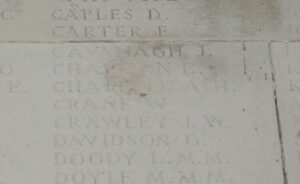
Ivor Thomas Charles, Private, 39247, South Wales Borderers. Ivor was the son of David and Mary Ann Charles, of Llanarthney. He resided at Carmarthen prior to the war and enlisted there into the Monmouthshire Regiment. Sometime later he was transferred into the 6th Battalion, South Wales Borderers, Pioneers to the 25th Division. The Division moved to France in September 1915 and moved to the Vimy sector. They fought in every major battle thereafter and took part in some of the terrible fighting during the German Spring offensive of 1918 before being moved to the Soissons Sector. On 27 May 1918 a German attack hit them again, and during the coming days the Division was virtually annihilated. By 9 June, a decision had been taken to break up what was left of the Division to reinforce other formations. The core of the Division returned to England to rebuild, and returned to the front in September 1918, moving at first to St Riquier near Abbeville. Late in the month, it entrained for Fourth Army, coming under XIII Corps which was by now engaged in the more or less continuous and eventually victorious advance across Picardy, fighting at the Battle of Beaurevoir. They then fought during the remainder of the great offensive, at the Battle of Cambrai, the Pursuit to the Selle, the Battle of the Selle, and the Battle of the Sambre. Ivor was taken ill and died during the final offensive, and he died on 29 October 1918, aged 30. He is buried at Pont-De-Nieppe Communal Cemetery, France.

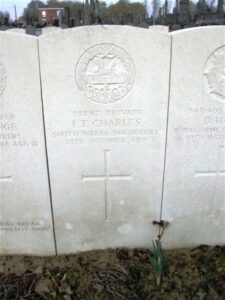
Thomas Clarke, Private, 14211, Devonshire Regiment. Thomas was born at Carmarthen in 1896, the son of Henry and Sarah Ann Clarke. The family later moved to 12A, Rock St., Waun Wen, Swansea, and Thomas enlisted at Swansea into the 2nd Battalion, Devonshire Regiment. The battalion was a regular army unit, attached to 23 Brigade, 8th Division. The Division moved to the Western Front in November 1914, a badly-needed reinforcement to the BEF which had been all but wiped out at Ypres. They saw their first major action at the Battle of Neuve Chapelle, and then at the Battle of Aubers. They then saw further fighting at the Action of Bois Grenier, before moving to the Somme in 1916, where they fought at the Battle of Albert. Thomas was killed on the opening day of the Battle of the Somme, on 1 July 1916. He was 21 years old, and is commemorated on the Thiepval Memorial, France. Thomas is not commemorated locally.
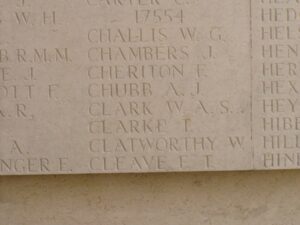
David Cleaver, Gunner, 206097, Machine Gun Corps. David was the son of Francis and Rachel Cleaver, of Llanllwch Mill, Johnstown, Carmarthen. He worked at Towy Works prior to joining the Machine Gun Corps in 1916, and was posted to the Heavy Branch, which was the fore-runner to the Tank Corps. David became ill during his training, and was admitted to Hospital at Bovingdon. He died there of pneumonia on 5 March 1917, aged 19, and his body was brought back home, where he was buried with full military honours at Llanllwch (St. Luke) Churchyard.

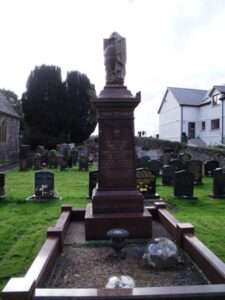
Herman Isaac Collyer, Private, 10873, Welsh Regiment. Herman was the son of Herman and Alice Collyer, of 121, Globe Rd., Mile End, London. He was living at Carmarthen by 1911, working as a farm labourer at Penlan and enlisted there into the 2nd Battalion, Welsh Regiment, which was attached to 3 Brigade, 1st Division. The Division had been one of the first to arrive in France, fighting at the Battle of Mons, and taking part in the retreat to the Marne, where the Germans were stopped. They then fought at the Aisne, and at Chivy, before being moved north to Ypres. Here they fought at the First Battle of Ypres, where they again stopped the German Offensive, before wintering in Flanders. The following year saw them in action again at the Battle of Aubers. Herman was taken ill around this time, and died in hospital at St. Omer on 11 April 1915. He was 21 years old, and is buried at Longuenesse (St. Omer) Souvenir Cemetery, France. Herman is not commemorated locally.
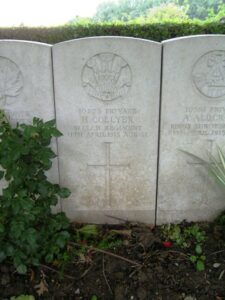
Arthur Trevor Cooke, Rifleman, 556802, London Regiment. Arthur was the son of Charles Alfred and Annie Cooke, of 52, Lammas Street, Carmarthen. He worked at Westcliffe-on-Sea, and enlisted there into the 2/11th Battalion (Finsbury Rifles), London Regiment, which was attached to 175 Brigade, 58th (2/1st London) Division. On 4 February 1917 the Battalion landed at Havre, and followed the German Retreat to the Hindenburg Line in March. They then took part in the Flanking Operations Round Bullecourt. Later that year they moved north to Ypres, and took part in the Battle of the Menin Road, the Battle of Polygon Wood and the Second Battle of Passchendaele. Arthur was killed in action when his battalion was moving into the line on 4 November 1917. He was 36 years old. A letter sent to his mother stated that Arthur had been buried where he fell, but his grave was lost during further fighting in the area, and Arthur is commemorated on the Tyne Cot Memorial, Belgium.
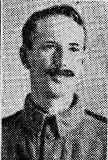
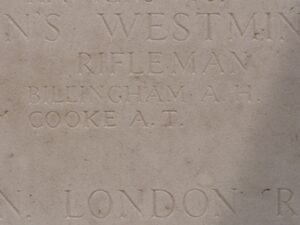
Cyril Crane, Private, 13698, Welsh Regiment. Cyril was born at Ipswich in 1896, the son of Harry and Harriet Crane. By 1911 he was working at Trelech as a farm labourer, and enlisted at Carmarthen into the 9th Battalion, Welsh Regiment, which was attached to 58 Brigade, 19th (Western) Division. The Division moved to France during July 1915, and moved to positions near Loos, where it took part in the opening attack of the Battle of Loos on 25 September 1915. The following year the Division moved to the Somme, where it took part in the second wave of the attack on Ovillers-La Boiselle on 1 July, capturing the village at heavy cost. It then fought through the Somme Battles of Poziéres and the Ancre in 1916. In 1917 the Division moved north to Ypres, taking part in the Battle of Messines, and fought on the Menin Road and at Polygon Wood, before moving up to Broodseinde, Poelcappelle and Passchendaele Village itself. In 1918 they were caught up in the German Spring Offensive near St. Quentin, where they suffered terrible casualties, and fought at the Battle of Bapaume. They moved to Ypres, but were caught up in the German attack at Messines, and at Bailleul, and Kemmel. After suffering terribly again, they moved south to the quieter French sector to rebuild, but were caught up in the German offensive on the Aisne. Cyril was killed here on 25 August 1918. He was 22 years old, and is buried at Vieille-Chappelle New Military Cemetery, Lacouture, France. Cyril is not commemorated locally.
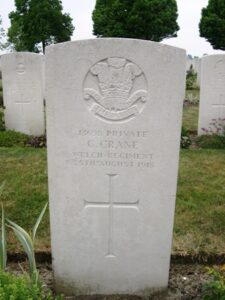
O’Moore Charles Creagh, Second Lieutenant, Royal Field Artillery. O’Moore was born at Southsea on 7 December 1896, the younger son of Charles Vandaleur Creagh, C.M.G., of Cahirbane, Co. Clare, former Governor of British North Borneo and Governor and Commander-in-Chief of Labuan, and of Blanche Francis Creagh (nee Edwardes), of 32, Charlton Road, Blackheath, S.E. He was grandson of the late Capt. Frederick Augustus Edwardes, 30th Foot, of Rhyd-y-gors, Carmarthen, and nephew of General Sir O’Moore Creagh, V.C., G.C.S.I., late Commander-in-Chief in India. He was educated at Cheltenham College, and passed into the Royal Military Academy, Woolwich, and obtained his commission on 10 February 1915 into the Royal Field Artillery. O’Moore served with the Expeditionary Force in France and Flanders from 17 April 1915 following being appointed to the 117th Battery, R.F.A. He then volunteered for the Trench Mortars, and when in command of the 67th Trench Mortar Battery was wounded in the head, and invalided from November 1915. On his recovery he returned to the Western front in July 1916, and joined the 96th Brigade, C Battery, but was later transferred to the 108th Army Brigade, R.F.A. He was killed in action during the German Spring offensive at Fevillacourt, near Mont St. Quentin, on 23 March 1918, aged 21. He has no known grave, and is commemorated on the Arras Memorial, France. His Major, writing to his parents, said: ‘I can honestly say I know of no one whose loss I should feel more, and the battery as a whole feel the same, both officers and men. He was one of the best officers I have ever met.’ O’Moore had been mentioned in Despatches in the London Gazette of 21 May 1918, by Sir Douglas Haig, for gallant and distinguished service in the field. On his mother’s side he was related General Sir Thomas Picton. O’Moore is not listed on the Carmarthen County War Memorial Roll.
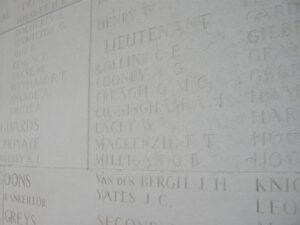
Lionel Gordon Crossman, Captain, Royal Army Medical Corps. Lionel was the son of John and Mary Crossman, of Ar-y-bryn, Carmarthen. He was educated at Queen Elizabeth Grammar School, Carmarthen, and at the Medical School, Cardiff University, where he obtained his B.Sc. degree (Wales) in 1910. He became a student at Bartholomew’s Hospital in 1910, and after graduating, was appointed house-physician to Dr James Calvert at St Bartholomew’s Hospital. Lionel gained a commission within the Royal Army Medical Corps, and joined the staff of the 1st London General Hospital. In 1916 he went to Mesopotamia serving under the rank of Captain, and joined the staff of the 40th British General Hospital, before being put in charge of the Pathological Laboratory. Lionel acquired a mild form of dysentery, which became complicated by pneumonia, and died of pleurisy and pneumonia on 11 December 1917, aged 29. Lionel is buried at Basra War Cemetery, Iraq.
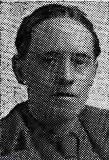
Thomas George Daniel, Leading Seaman, R/3441, Hawke Battalion, Royal Naval Division. Thomas was born on 17 November 1889, the son of Henry and Sarah Daniel, of Gwynondale, Barn Road, Carmarthen. He originally enlisted into the Pembroke Yeomanry, but subsequently transferred into the Hawke Battalion of the 63rd (Royal Naval) Division on 23 October 1917. Thomas probably joined the Division at Ypres, where they took part in the Second Battle of Passchendaele. Their next major action was at Cambrai, during the Action of Welch Ridge. Thomas was wounded and invalided home on 22 December 1917.He rejoined the RND on 7 April 1918, but was gassed during the Battle of Albert on 22 August 1918, and again invalided home. Thomas was sent back out to France, and rejoined the RND on 1 October 1918, while the Division was taking part in the Battle of Cambrai, 1918. This is where Thomas was killed in action, on 8 October 1918. He was 28 years old, and is buried at Anneux British Cemetery, France.
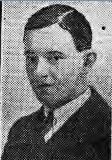
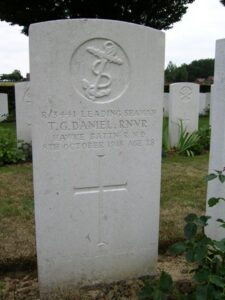
Albert Ivor Davies, Corporal, 203004, Welsh Regiment. Albert was the son of George and Sarah Davies, of Glyn Cottage, Crumlin, Mon. He had resided at Hafodyrynys, Carmarthen prior to the war, and had studied at Trinity College, Carmarthen before becoming a schoolteacher. Albert enlisted at Carmarthen on 5 October 1912 into the 4th Battalion, Welsh Regiment, and served with the T.A. until being discharged into the regular army in 1915. Albert was then posted to Salonika to join the 1th Battalion, Welsh Regiment, known as the Cardiff Pals, which was attached to 67 Brigade, 22nd Division. He was killed in action at Salonika on 14 June 1918, aged 25, and is buried in Doiran Military Cemetery, Greece.
Arthur Davies, Corporal, 5101, Welsh Regiment. Arthur was the son of Henry and Mary Ann Davies, of 38, Water Street, Carmarthen. He enlisted at Carmarthen into the 1/4th Battalion, Welsh Regiment, which was the local Territorial Battalion, attached to 159 Brigade, 53rd (Welsh) Division. The Division landed at Cape Helles, Gallipoli, on 9 August 1915, and was immediately thrown into action, spending the next few days in isolated pockets, fighting against a Turkish counter-attack during the Battle of Sari Bair. Arthur was killed here on 10 August 1915. He was 29 years old, and is commemorated on the Helles Memorial, Gallipoli. His brother James Davies also fell.
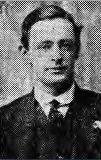
Clifford Davies, Private, 202574, Oxfordshire and Buckinghamshire Light Infantry. Clifford was the only son of Herbert Davies, of the Half Moon Hotel, Carmarthen. The family had moved to the Hotel York at Bridgend prior to the war, and Clifford enlisted at Cardiff into the Welsh Cyclists. He was later posted to the 2/4th Battalion, Ox and Bucks Light Infantry, who landed in France on 24 May 1916 attached to 184 Brigade, 61st (2nd South Midland) Division. The Division took part in the abortive attack at Fromelles on 19 July 1916. After suffering terrible casualties, it did not see serious action until taking part in the Battle of Langemarck in 1917. Clifford was killed by a shell here on 22 August 1917, and buried on the battlefield. He was 26 years old. His grave was never identified, so Clifford is commemorated on the Tyne Cot Memorial, Belgium. Clifford is not commemorated locally.
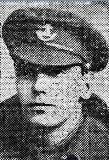
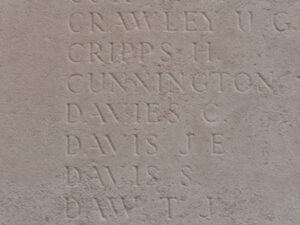
David Davies, Corporal, 8254, South Wales Borderers. David was born at Carmarthen, the son of Evan and Ann Davies. The family later moved to 16, Winifred Road, Skewen. David then married, and lived with his wife, Mary Hannah Davies, at 3, Railway Terrace, Skewen. David enlisted at Neath into the 1st Battalion, South Wales Borderers, which moved to France at the outbreak of war attached to 3 Brigade, 1st Division. The Division had been one of the first to arrive in France, fighting at the Battle of Mons, and taking part in the retreat to the Marne, where the Germans were stopped. They then fought at the Aisne, and at Chivy, before being moved north to Ypres. Here they fought at the First Battle of Ypres, where they again stopped the German Offensive, before wintering in Flanders. The following year saw them in action again at the Battle of Aubers Ridge. David was killed here on 9 May 1915. He was 41 years old, and is commemorated on the Le Touret Memorial, Richebourg L’Avoue, France. David is not commemorated locally.
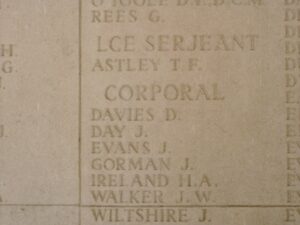
David Davies, Private, 200279, Welsh Regiment. David was born at Newchurch in 1896, the son of William and Elizabeth Davies. He had been raised at St. Clears before the family moved to 79, Priory Street, Carmarthen. He had worked as a miner at Senghenydd prior to the war, and returned to Carmarthen to enlist into the 1/4th Battalion, Welsh Regiment, which was the local Territorial Battalion, attached to 159 Brigade, 53rd (Welsh) Division. The Division landed at Cape Helles, Gallipoli, on 9 August 1915, and was immediately thrown into action, spending the next few days in isolated pockets, fighting against a Turkish counter-attack during the Battle of Sari Bair, and then at the Attack on Scimitar Hill. The Division remained here throughout the coming months, and suffered severe losses in manpower strength during the great November 1915 blizzard on Gallipoli, when its total strength was reduced to less than that of a full-strength Brigade. On 11 December 1915 the Division was evacuated to Mudros, and by 23 December 1915 were moved to Egypt. They remained on the Suez Canal Defences for the next twelve months, where it took part in operations against the Sultan of Darfur, and in March 1917 took part in the advance into Palestine. David was wounded during the First Battle of Gaza, and died on 29 March 1917. He was 20 years old, and is buried at Deir El Belah War Cemetery, Egypt. David is not commemorated locally.
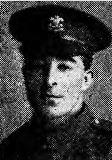
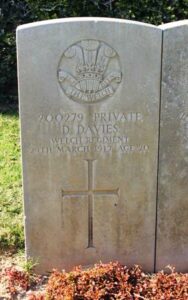
David Davies, Private, 22652, Wiltshire Regiment. David was the son of Ann Davies, of 40, Francis Terrace, Carmarthen. He worked at the Capital and Counties Bank at Swindon prior to the war, and enlisted there into the 1st Battalion, Wiltshire Regiment, which was attached to 7 Brigade, 25th Division. The Division landed in France on 26 September 1915, and were posted to the Vimy area, where they defended Vimy Ridge against a German attack in May 1916. They then moved to the Warloy area and attacked on 3 July near Thiepval. They remained in the line over the coming days, and David was wounded in the head while in the line on 8 July 1916. He was evacuated to the Base Hospital at Boulogne, where he died of his wounds on 11 July 1916, aged just 20. David is buried at Boulogne Eastern Cemetery, France.
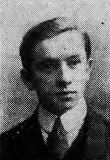
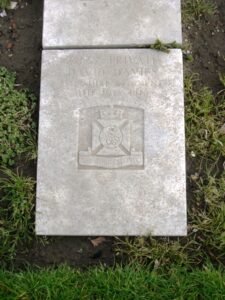
David George Davies, Stoker 1st Class, K/27472, Royal Navy. David was the son of Evan and Margaret Davies, of 112, Priory Street, Carmarthen. He served with the Royal Navy, and was based at HMS Vivid, the Naval Barracks at Devonport, when he became ill and died on 2 May 1917. David was 21 years old, and is buried at Llandyfriog (St. Tyfriog) Churchyard. David is not commemorated at Carmarthen, but at Aberbanc, near Newcastle Emlyn, as he had lived at 10, Railway Terrace, Henllan.
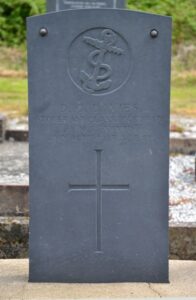
David John Davies, Lance Corporal, 39870, Welsh Regiment. David was the son of John Davies, of 16, Chapel Street, Carmarthen. He worked as a Postman at Rhandirmwyn prior to the war, and enlisted at Llandovery into the army. He was posted to France, where he joined the 2nd Battalion, Welsh Regiment, attached to 3 Brigade, 1st Division, and would have joined them at Ypres around May 1915. The Division fought during the Battle of Loos on 25 September 1915, and remained in the Loos sector before moving south to the Somme in 1916, where they fought during the opening of the Somme Offensive at the Battle of Albert, then at Bazentin and Pozières. David was wounded while fighting near Contalmaison, and was evacuated to the Casualty Clearing Station at Heilly, where he died on 24 July 1916. He was 30 years old, and is buried at Heilly Station Cemetery, Mericourt-L’Abbe, France.
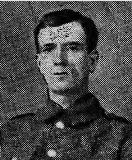
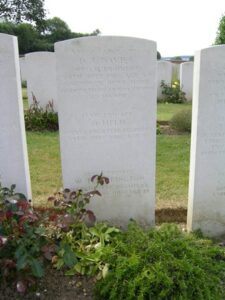
Ernest Glyn Davies, Captain, Royal Welsh Fusiliers. Ernest was the son of David and Rachel Davies, of Eryl, The Avenue, Carmarthen. He worked in London before the war, and enlisted there into the London Welsh Battalion of the Royal Welsh Fusiliers. The battalion moved to France in December 1915 attached to 113 Brigade, 38th Welsh Division. Ernest was soon picked out as a leader, and was promoted Sergeant before gaining a commission into the 19th Battalion, Royal Welsh Fusiliers, part of 119 Brigade, 40th (Bantam) Division. The Division moved to France in the first week of June 1916, taking up positions near Loos. Ernest was killed in action here while leading a wiring party on 5 July 1916. He was 27 years old, and was buried at Loos British Cemetery, France.
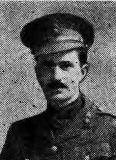
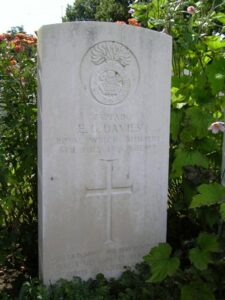
Evan Davies, Lance Corporal, S/10652, Rifle Brigade. Evan was born at Glangwili, the son of Daniel and Rosamond Davies. The family later moved to 65 Lowe Street, Whitmore Reans, Wolverhampton, and Evan enlisted at Birmingham on 10 May 1915 into the Rifle Brigade. Hon 1 June 1916 Evan landed in France, and was posted to the 9th Battalion, Rifle Brigade, which was attached to 42 Brigade, 14th (Light) Division. The Division saw its first action during the Action of Hooge, where the Division were the first to be attacked by the German use of flamethrowers. In July 1916 it moved to the Somme, and fought at the Battles of Delville Wood, and Flers-Courcelette, then in March 1917 followed the German Retreat to the Hindenburg Line. May saw them take part in the Battle of Arras, and then they were sent to Ypres, where they fought at the Battles of Langemarck, and at Passchendaele. In the Spring of 1918 the Division was near St. Quentin, and was hit there by the German Spring Offensive, launched on 21 March 1918. Evan was killed in action on 21 March 1918. He was 29 years old, and is buried at Chauny Communal Cemetery, British Extension, France. His brother, Thomas Davies, also fell.
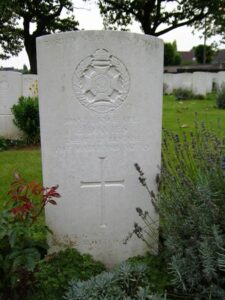
Evan Henry Davies, Private, 1753, Welsh Guards. Evan was born at Carmarthen, and prior to the war lived at Emlyn Villa, Pencader. He served in the 1st Battalion, Welsh Guards, which had moved to France in August 1915 where it became attached to the 3rd Brigade, Guards Division. The Division had a distinguished career during the Great War, fighting at the Battle of Loos, and through the Somme Offensive at the Battles of Flers-Courcelette and Morval. In 1917 they followed the German retreat to the Hindenburg Line, and then fought later that year at Third Ypres, before moving south, and fought at the Battle of Cambrai. In 1918 they were near Gouzeaucourt when the area was hit by the German Spring Offensive of 21 March 1918. The Guards, as indeed were all of the British Divisions in the area, were pushed back over the coming days, when the German Offensive stagnated. The war turned on 8 August 1918, after a brilliant Australian success at Villers Brettoneux, was followed by a successful British breakthrough on the old Somme Battlefields on 21 August, when the Battle of Albert saw the Germans pushed back beyond Bapaume in a few terrible days fighting. Evan was wounded around this time, and brought back to the Base Hospital at Rouen, where he sadly died of wounds on 22 September 1918. He is buried at St. Sever Cemetery Extension, Rouen.
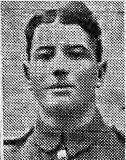
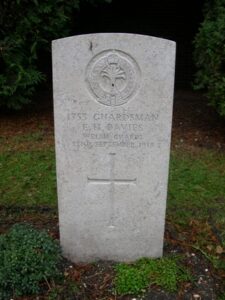
Evan Joseph Davies, Private, 22639, Royal Welsh Fusiliers. Evan was born at Carmarthen. He lived in London prior to the war, and was the Husband of Eliza Ella Davies, of 10, Kender Street, New Cross Road, New Cross, London. He enlisted there into the 15th Battalion, Royal Welsh Fusiliers, the London Welsh Battalion, which was moved to France in December 1915 attached to 113 Brigade, 38th (Welsh) Division. After several months in the Flanders trenches near Fleurbaix, the Division marched south to the Somme in June 1916, where it moved into positions south of Mametz Wood on 7 July 1916. Over the coming days, the division took part in a brutal assault on the strongly defended wood. Evan was killed during the fighting in the wood on 10 July 1916. He was 31 years old, and is commemorated on the Thiepval Memorial, France.
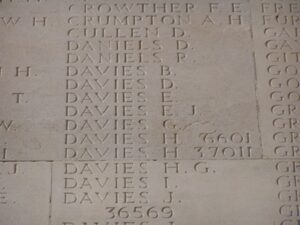
Evan Thomas Davies, Private, 54551, Welsh Regiment. Evan was the son of David and Lydia Davies, of Penybryn, Philadelphia, Llangunnor, Carmarthen. He enlisted at Carmarthen into the Pembroke Yeomanry, but was sent to France, probably in August 1916, to join the 15th Battalion, Welsh regiment, known as the Carmarthen Pals, who were attached to 114 Brigade, 38th (Welsh) Division. The division had just moved to Boesinghe after its successful capture of Mametz Wood, and remained at Boesinghe until taking part in the Battle of Pilckem Ridge on 31 July 1917. The 15th Welsh also fought at Langemarck alongside the 20th (Light) Division, before the entire 38th Division moved to the Armentieres sector in September 1917. In April 1918 the Division moved to positions north of Albert, to reinforce the decimated British forces which had fought there during the German Spring offensive of 21 March 1918 onwards. On 10 May 1918 the 15th Welsh were tasked with the capture of the German lines within Aveluy Wood, but the range of their artillery support had been miscalculated, and fell short onto the Welshmen, causing heavy casualties. Evan was killed in Aveluy Wood that day. He was 31 years old, and is buried at Martinsart British Cemetery, France. Evan is listed among the Llangunnor men on the County War Memorial roll.
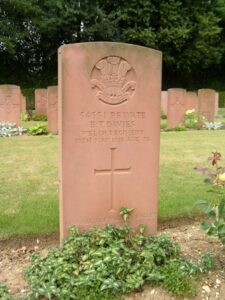
James Davies, Private, 4843, 16th Battalion, London Regiment (Queen’s Westminster Rifles). James was the son of Henry and Mary Ann Davies, of 38, Water Street, Carmarthen. He worked as a waiter at the Langham Hotel in London, and enlisted at Westminster into the Queen’s Westminster Rifles, part of 169 Brigade, 56th (London) Division. The Division was initially used to reinforce other Divisions, but reformed in France in January 1916, seeing their first major action at Gommecourt, as part of the Diversionary attack on the Somme. They then fought at Ginchy, before taking in the Battle of Flers-Courcelette, where James was Killed in Action on 19 September 1916, aged 23. He is remembered on the Thiepval Memorial. His brother Arthur Davies also fell.

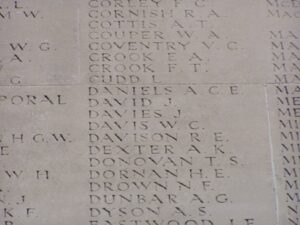
John Davies, Lance Corporal, 15859, Welsh Regiment. John was born at Carmarthen in 1870, and resided at 35, Bush Houses, Cwmclydach prior to the war with his wife Catherine and their six children. He enlisted at Tonypandy into the 1st Battalion, Welsh Regiment, which was attached to 84 Brigade, 28th Division. The Division formed in England between December 1914 and January 1915 from regular units returning from India, Singapore and Egypt. During January 1915 it moved to France, landing at Le Havre and moved to the Western Front, where it saw its first major action during the Second Battle of Ypres. John was killed here, during an assault at Bellewaarde, on 25 May 1915, aged 44. He is commemorated on the Ypres (Menin Gate) Memorial, Belgium. John does not seem to be commemorated locally.
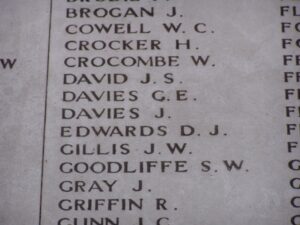
John Claude Davies, Private, 2216, London Regiment. John was the son of James Richard Davies, of 123, Jemingham Road, New Cross, London. He enlisted at Clapham Junction into the 23rd Battalion, London Regiment, which was attached to 142 Brigade, 47th (2nd London) Division. The battalion moved to France in March 1915, and fought at the Battle of Aubers, and the Battle of Festubert during May 1915. John was wounded at Festubert, and died on 23 May 1915, aged 23. He is buried at Bethune Town Cemetery, France.
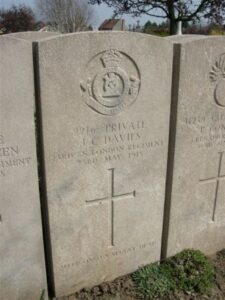
John Elwyn Davies, Private, 4299, Welsh Regiment. John was the eldest son of Evan George and Elizabeth Davies, of 8, Union Street, Carmarthen. He worked as a Solicitor’s Clerk before enlisting at Carmarthen into the 1/4th Battalion, Welsh Regiment, which was the local Territorial battalion, attached to 159 Brigade, 53rd (Welsh) Division. In July 1915 the Division embarked at Avonmouth for the Mediterranean, and landed on the Gallipoli beaches on 8 August 1915. Here, the 4th Welsh were thrown into desperate fighting over the coming days. John was wounded soon after landing, and died aboard a Hospital Ship on 13 August 1915, aged 19. He was buried at sea, and is commemorated on the Helles Memorial, Gallipoli.

John Graham Davies, Acting Corporal, 200838, Welsh Regiment. Graham was the son of Lewis and Esther Davies, of 23a, King Street, Carmarthen. He enlisted there into the 1/4th Battalion, Welsh Regiment, which was the local Territorial Battalion, attached to 159 Brigade, 53rd (Welsh) Division. The Division landed at Cape Helles, Gallipoli, on 9 August 1915, and was immediately thrown into action, spending the next few days in isolated pockets, fighting against a Turkish counter-attack during the Battle of Sari Bair, and then at the Attack on Scimitar Hill. The Division remained here throughout the coming months, and suffered severe losses in manpower strength during the great November 1915 blizzard on Gallipoli, when its total strength was reduced to less than that of a full-strength Brigade. On 11 December 1915 the Division was evacuated to Mudros, and by 23 December 1915 were moved to Egypt. They remained on the Suez Canal Defences for the next twelve months, where it took part in operations against the Sultan of Darfur, and in March 1917 took part in the advance into Palestine. Graham was killed during the First Battle of Gaza, on 26 March 1917, aged 20, and is commemorated on the Jerusalem Memorial, Israel.
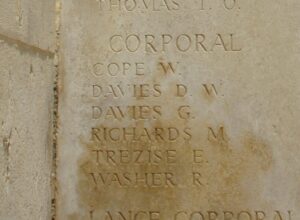
John Henry Davies, Acting Corporal, 16493, Kings Own Yorkshire Light Infantry. John was the son of John and Ann Davies, of Quay Street, Carmarthen. He must have been working in Yorkshire prior to the war, as he enlisted at Doncaster into the 9th Battalion, King’s Own Yorkshire Light Infantry, which formed part of 64 Brigade, 21st Division. The Division crossed to France in September 1915, and was immediately thrown into action at Loos on 26 September 1915, whereupon it suffered over 3,800 casualties for very little gain. They remained in the Loos sector over the coming winter, and were still there in the spring of 1916 when John was wounded. He died as a result of his wounds on 30 April 1916, aged 32, and is buried at Bois Guillaume Communal Cemetery, France.
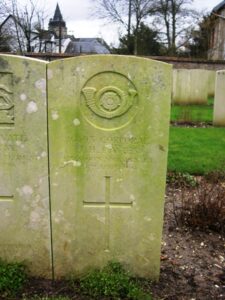
John Idris Davies, Sergeant, 54512, Machine Gun Corps (Infantry). John was the son of the Rev. Edward and Mary Davies, of Carmarthen. He lived with his wife, Grace Catherine Davies, at 18, Broughton Road, West Ealing, London. John enlisted at Harrow into the Royal Welsh Fusiliers, but was later posted to the 232nd Company, Machine Gun Corps, which was attached to the 51st (Highland) Division. John joined his unit at Ypres in June 1917, when it was preparing for its part in the assault on Pilckem Ridge, alongside the Welsh Division. John was killed on 3 August 1917, during the Battle of Pilckem. He was 36 years old, and is buried at Artillery Wood Cemetery, Belgium. John is not commemorated locally.

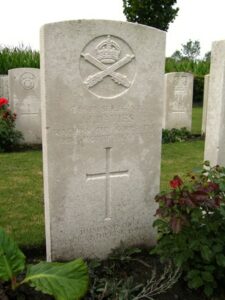
Thomas Davies, Sergeant, 58684, Royal Field Artillery. Thomas was born at Carmarthen, the son of Daniel and Rosamond Davies. The family later moved to 65, Lowe Street, Whitmore, Reans, Wolverhampton. Thomas enlisted at Birmingham on 2 September 1909 into the Royal Artillery, and served continuously to the outbreak of war. Early in 1916 Thomas embarked at Marseilles for Basra, and upon arrival was posted to the 66th Battery, Royal Field Artillery. The battery served in the Middle East, and took part in the advance into Mesopotamia, and Thomas was wounded in the head on 17 April 1916. He returned to duty and was wounded again during February 1917. Thomas rejoined the battery from hospital in India during August 1917 and was killed during the Battle of Tikrit, on 5 November 1917. He is commemorated on the Basra Memorial, Iraq. His brother, Rifleman Evan Davies, S10652, Rifle Brigade, also fell.
Thomas Davies, Sapper, 194689, Royal Engineers. Thomas was born in Pentrecourt, and was the Husband of Beatrice Alice Davies, of 9, Glannant Road, Carmarthen. He was a Postman at Carmarthen prior to the war and enlisted there on 30 November 1915 into the Royal Engineers. Thomas served with the Postal Section, before being posted to the 35th Airline Section. The Section worked with a Tunnelling Company, and was stationed at Arras, during the Third Battle of the Scarpe, during July 1917. At roll call on the morning of 15 July 1917, Thomas was found to be missing. He was found hanging in his billets by some friends, a subsequent Court of Enquiry finding that he committed suicide, although no reason could be found. He was 38 years old, and is buried at Ecoivres Military Cemetery, Mont-St-Eloi, France. Thomas is also commemorated on the Newcastle Emlyn War Memorial.
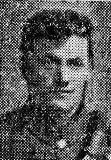
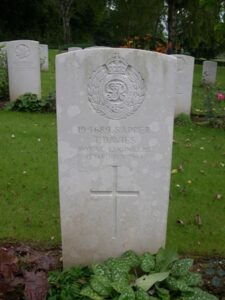
Thomas Ernald Davies, Corporal, 203565, Welsh Regiment. Thomas was born at Carmarthen on 31 May 1897. He was adopted by Thomas Vicary Rees and Annie Mary Davies, of Llanllwch. Thomas resided at Penygroes prior to the war, returning to Carmarthen to join the 9th Battalion, Welsh Regiment. The Battalion formed part of 58 Brigade, 19th (Western) Division, and had fought during the opening attack of the Battle of Loos, and then moved to the Somme, where they took part in the second wave of the attack on Ovillers-La Boiselle on 1 July 1916, capturing the village at heavy cost, and fought through the Somme Battles of Pozières and the Ancre in 1916. They then moved North, taking part in the Third Battle of Ypres. In 1918 they were caught up in the German Spring Offensive near St. Quentin, where they suffered terrible casualties, and fought at the Battle of Bapaume. They moved to Ypres, but were caught up in the German attack at Messines, and fought a stubborn rearguard action over the coming days. After suffering terribly again, they moved South to the quieter French sector to rebuild, but were caught up in the German offensive on the Aisne, where Thomas was killed on 2 June 1918, aged 21. He has no known grave, and so is commemorated on the Soissons Memorial, France.

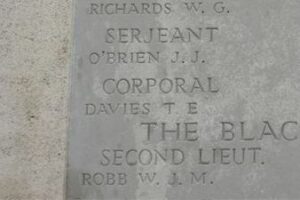
Thomas Evan Davies, Private, 200636, Welsh Regiment. Thomas was the son of Benjamin and Sarah Davies, of Carmarthen, and the husband of Margaret Davies of 98, Lammas Street, Carmarthen. He had originally served with the 4th Welsh in Gallipoli and also during their campaign in Palestine in 1917/1918 when they fought successfully as part of the 53rd (Welsh) Division. At the end of the war he remained in the Middle East, transferring to the 802nd Area Employment Company, Labour Corps. From there, Thomas attended the Navy and Army Canteen Board, which was the entertainment branch of the army, and died in Egypt of sickness on 11 August 1919. Thomas was 39 years old, and is buried at Haifa War Cemetery, Egypt.
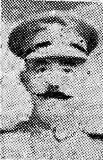
Thomas Henry Davies, Private, 47676, Northumberland Fusiliers. Thomas was born as Thomas Henry Davies on 4 April 1889, the illegitimate son of Caroline Davies. Caroline married his father, Thomas Price, on 14 September 1889, at Christ Church, Carmarthen. Thomas was raised as Thomas Henry Davies, at 13, Blue Street, Carmarthen. On 28 August 1912 he married Minnie Lewis at St. David’s Church, Carmarthen, and the couple set up home at 34, Hawkes Villas, Carmarthen. He enlisted at Carmarthen into the Royal Field Artillery under the name Thomas Henry Price, and was later transferred into the 21st Battalion (Tyneside Scots), Northumberland Fusiliers, which was attached to 102 Brigade, 34th Division. The Division moved to France between 7 and 15 January 1916, and saw its first major action on the Somme, during the Battle of Albert, where it suffered very severe casualties during its part in the attack on La Boiselle. It then took part in the Battle of Bazentin, Battle of Pozières and the Battle of Flers-Courcelette. The following year saw them fighting at the Battle of Arras. Thomas was killed on 28 December 1917, and is buried at St. Martin Calvaire British Cemetery, St. Martin-Sur-Cojeul, France. His brother, Arthur James Price, also fell.
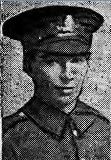
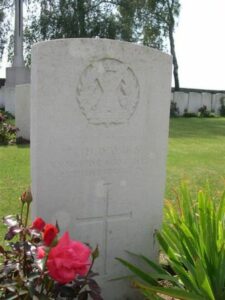
Thomas John Davies, Private, 912, Welsh Regiment. Thomas was the son of Mr. and Mrs. John Davies, of Roger’s Cottages, Mill Street, Carmarthen. He married prior to the war, and lived with his wife, Annie Jane at Roger’s Cottages, Mill Street, Carmarthen. (She later remarried, becoming Mrs. Treharne, of 6, Brynallt Terrace, Marble Hall, Llanelli). Thomas enlisted at Carmarthen into the 1/4th Battalion, Welsh Regiment, which was the local Territorial Battalion, attached to 159 Brigade, 53rd (Welsh) Division. The Division landed at Cape Helles, Gallipoli, on 9 August 1915, and was immediately thrown into action, spending the next few days in isolated pockets, fighting against a Turkish counter-attack during the Battle of Sari Bair, and then at the Attack on Scimitar Hill. Thomas was killed at Gallipoli on 20 September 1915. He was 23 years old, and is buried at Azmak Cemetery, Suvla, Gallipoli.

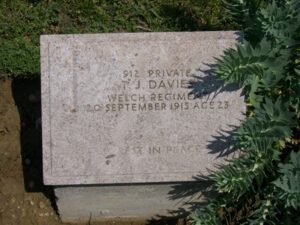
William Davies, Private, 33854, Welsh Regiment. William was born at Carmarthen, and enlisted at Cardiff into the army. He was posted to the 8th Battalion, Welsh Regiment, which was in Egypt, attached to the 13th (Western) Division. On 12 February, 1916 the Division began to move to Mesopotamia, to strengthen the force being assembled for the relief of the besieged garrison at Kut al Amara. William took ill, and died in Mesopotamia on 7 July 1916. He is buried at Amara War Cemetery, Iraq.
William Evan Morgan Davies, Lance Corporal, 44146, South Wales Borderers. William was the son of John and Margaret Davies, of 30, Richmond Terrace, Carmarthen. He originally enlisted into the Royal Welsh Fusiliers at Carmarthen, but was sent to France to join the 10th Battalion, South Wales Borderers, part of 115 Brigade, 38th (Welsh) Division. William probably fought with the Division at Pilckem Ridge in July 1917, and was with the Division during its move to the Armentieres sector weeks later. In April 1918 the division was sent to the Somme, to take over the line at Aveluy, north of Albert, and remained here until taking part in the great advance from 21 August 1918 onwards. William was wounded before the great offensive, and died of his wounds on 2 July 1918. He was 24 years old, and is buried at Varennes Military Cemetery, France.
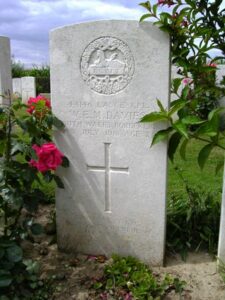
William Howard Davies, Private, 116422, Machine Gun Corps. William was born in Kidwelly, the son of William and Elizabeth Davies, and resided in Carmarthen prior to the war. He originally served with the 5th Battalion, South Wales Borderers, but transferred into the Machine Gun Corps, serving with their 21st Company, attached to the 30th Division. The Division had been in France since November 1915, and had fought at the Battle of the Somme in 1916. In 1917 it fought at Arras, and later that year moved north to Ypres, and fought at the Battle of Pilckem. At the beginning of 1918 the Division was stationed near St. Quentin, and when the Germans launched their Offensive here on 21 March 1918, the Division took part in heavy fighting over the coming days. They were then pulled from the line to rest and rebuild, and moved to Flanders, but were caught up in the action again here when the Germans launched a fresh offensive along the Lys, fighting at the First and Second Battles of Kemmel. William must have been taken prisoner by the Germans during this time, and he died as a Prisoner of War in Germany on 15 October 1918. He is buried at Cologne Southern Cemetery.
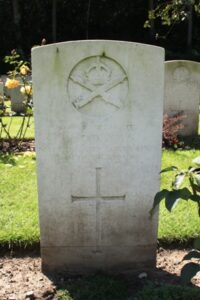
William Joseph Davies, Gunner, 150471, Royal Garrison Artillery. William was the son of William and Elizabeth Davies, of 3, Castle Mount, Carmarthen. He originally enlisted at Carmarthen into the 4th Welsh in 1910, and served at Gallipoli in 1915 before being wounded and returning home. William was discharged from the 4th Welsh on 25 January 1916, then worked on munitions for a year before re-enlisting into the Royal Garrison Artillery. He embarked for France in June 1917, and was posted to the 294th Siege Battery, Royal Garrison Artillery. The Battery was in positions at Ypres during the Battle of Passchendaele in 1917 when William was killed by German counter battery shellfire on 7 October 1917 while in his battery dugout. He was 27 years old, and is buried at Vlamertinghe New Military Cemetery, Belgium.
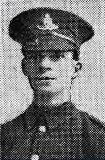
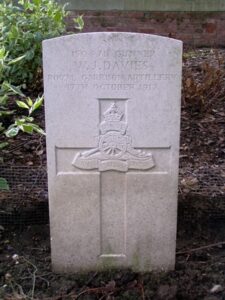
W. T. Davies, Gunner. This man is listed on the Carmarthen County War Memorial Roll, but cannot be identified.
Daniel J. Donoghue, Private, 13101, Welsh Regiment. Daniel was the son of Patrick and Catherine Donoghue of Carmarthen. He probably served with the 9th Battalion, Welsh Regiment during the war. Daniel survived the war, but died of phthisis at Carmarthen on 21 February 1920, aged 37. He is buried at Carmarthen (St. Mary) Roman Catholic Churchyard.
Ernest Malcolm Duckfield, Company Quarter Master Sergeant, 21, Royal Engineers. Ernest was the son of Alfred and Martha Duckfield, of 31, Spilman Street, Carmarthen. He enlisted at Carmarthen with his brother Alfred into the 1/1st Welsh Field Company, Royal Engineers, attached to the 53rd (Welsh) Division. The 53rd Division moved to the Mediterranean, sailing from Devonport in July 1915 arriving at Mudros by 5 August 1915. From here they moved to Gallipoli, landing on 9 August. Here the Division was flung into a suicidal attack on strongly defended Turkish positions, and spent the next few days in isolated pockets, fighting against a Turkish counter-attack during the Battle of Sari Bair, and then at the Attack on Scimitar Hill. Ernest was killed during the chaotic fighting that reigned during those terrible days, on 20 August 1915. He was 30 years old, and is buried at Hill 10 Cemetery, Gallipoli.

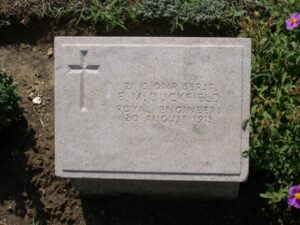
Charles Lewis Duff, Gunner, 178118, Royal Garrison Artillery. Charles was the Husband of Mary Ann Duff, of 1, Arch Parade, Parade Road, Carmarthen. He was a long serving soldier, and the holder of the Long Service Medal when the Great War broke out. Charles served in the Middle East with the Royal Garrison Artillery. He became ill, and died at Khartoum on 23 June 1917. He was 56 years old, and is buried at Khartoum War Cemetery, Sudan. Charles is not listed on the Carmarthen County War Memorial Roll.

Gwynne Rhys Edmunds, Lieutenant, Royal Welsh Fusiliers. Gwynne was the son of Emily Edmunds, of Llangadog. He was commissioned into the 18th Battalion, RWF, but was later attached to the 2nd Battalion, Royal Welsh Fusiliers, which had been in France since September, 1914 as part of 19 Brigade, and had fought at Mons, Le Cateau and the retreat to the Marne and the Battle of the Aisne. On 12 October the Brigade transferred to the 6th Division and fought at Hooge, east of Ypres, where they transferred to the 27th Division on 31 May 1915. Here they fought at Second Ypres, and then transferred again, to the 2nd Division on 19 August 1915, and fought with them at Loos. Again the 2nd RWF moved, joining the 33rd Division on 25 November 1915. They remained in the Loos sector for the coming months, and took place in a bloody action when their lines were mined by the Germans, and blown on 21 June 1916, causing heavy loss in life. In July the 33rd Division moved to the Somme, and marched past Mametz Wood, where the 38th Division had suffered so badly. The Division was tasked with the capture of High Wood, but was decimated during the attack. Gwynne was killed at High Wood on 20 July 1916, aged 20. He is remembered on the Thiepval Memorial, France.
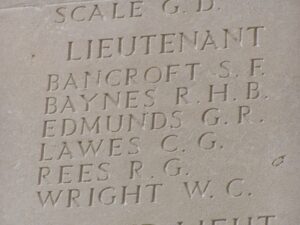
Edgar Edwards, Private, 2100, Welsh Regiment. Edgar was the son of Owen and Elizabeth Edwards, of 7, Water Street, Carmarthen. He enlisted at the outbreak of war into the 2nd Battalion, Welsh Regiment, and went to France in November 1914, joining the battalion at Ypres, where it was attached to 3 Brigade, 1st Division. Edgar saw heavy fighting at Ypres, and was hospitalised in January 1915 with frost bite. He returned to the battalion at Loos, where he suffered from gas, and was again invalided. Edgar rejoined the battalion in time for the Somme offensive, and was badly wounded on 23 August 1916, while fighting near Contalmaison. He was hospitalised again, being moved to a Hospital at Glasgow, where his leg was amputated. Edgar never recovered from this, and died in hospital on 2 March 1917, aged 37. His body was brought home to Carmarthen, and he was given a military funeral at Carmarthen (Water Street) Calvinistic Methodist Burial Ground.
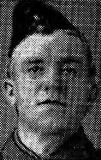
David Henry Elias, Private, 54127, Welsh Regiment. David was the son of John and Sarah Elias, of 1, Towy Side, Carmarthen. He was employed at the Remount Depot at Carmarthen, before enlisting into the Welsh Regiment, and was posted to their 18th Battalion (2nd Glamorgan), attached to 119 Brigade, 40th (Bantam) Division. This Division moved to France between in June 1916, and moved to the front near Loos. Late in 1916 they moved south to the Somme, and fought at the Battle of the Ancre, and remained in the area over the winter. In March 1917 the Germans withdrew to their shortened line, called the Hindenburg Line, and the 40th Division was one of the Divisions that followed the withdrawal. David was killed in action during the German retreat on 21 April 1917. He was 19 years old, and is commemorated on the Thiepval Memorial as his grave could not be located after the war.
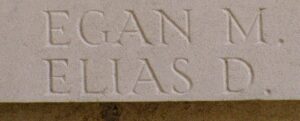
Frederick Elias, Lance Corporal, 201346, Welsh Regiment. Fred was the son of David and Mary Elias, of 2, Station Road, Carmarthen. Fred worked as a fisherman with his father prior to the war, before getting married to Sophia Narbett, and moving with his wife to Bridge Street, St. Clears, where the young couple had their only child. At the outbreak of war Fred enlisted into the 1/4th Battalion, Welsh Regiment, which was the local Territorial Battalion, attached to 159 Brigade, 53rd (Welsh) Division. The Division landed at Cape Helles, Gallipoli, on 9 August 1915, and was immediately thrown into action, spending the next few days in isolated pockets, fighting against a Turkish counter-attack during the Battle of Sari Bair, and then at the Attack on Scimitar Hill. The Division remained here throughout the coming months, and suffered severe losses in manpower strength during the great November 1915 blizzard on Gallipoli, when its total strength was reduced to less than that of a full-strength Brigade. On 11 December 1915 the Division was evacuated to Mudros, and by 23 December 1915 were moved to Egypt. They remained on the Suez Canal Defences for the next twelve months, where it took part in operations against the Sultan of Darfur. Fred was wounded soon after returning to Egypt, and died of his wounds on 9 March 1916, aged 25. He is buried at Jerusalem War Cemetery, Israel.
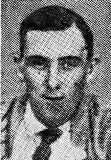
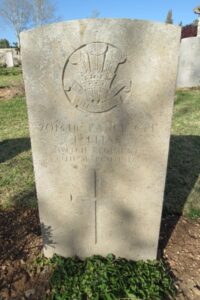
John Elias, Gunner, 43998, Royal Garrison Artillery. John was born at Llangunnor, the son of Hannah Elias. He had served with the 3rd Carmarthen Volunteers prior to the war, and resided with his wife, Nellie Elias, at 1, Osborne Terrace, Penrhiwceiber. John enlisted at Mountain Ash on 1 September 1914, and was posted to the 51st Siege Battery, Royal Garrison Artillery, moving to France on 17 March 1917. The battery moved to Ypres, where it was in support of the British offensive, called the Third Battle of Ypres, which began after a successful attack at Messines Ridge. John was killed during the Battle of the Menin Road on 24 September 1917. He was 35 years old, and is buried at The Huts Cemetery, Belgium. John is not commemorated locally.

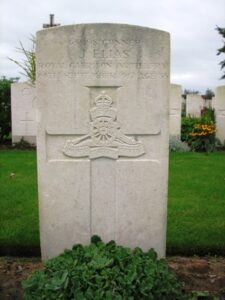
Andrew Arthur Evans, Private, 1084, Welsh Regiment. Arthur was the son of Margaret Evans of 3, Chapel Street, Carmarthen. He enlisted at Carmarthen into the 1/4th Battalion, Welsh Regiment, which was the local Territorial Battalion, attached to 159 Brigade, 53rd (Welsh) Division. The Division landed at Cape Helles, Gallipoli, on 9 August 1915, and was immediately thrown into action, spending the next few days in isolated pockets, fighting against a Turkish counter-attack during the Battle of Sari Bair, and then at the Attack on Scimitar Hill. The Division remained here throughout the coming months, and suffered severe losses in manpower strength during the great November 1915 blizzard on Gallipoli, when its total strength was reduced to less than that of a full-strength Brigade. Arthur was evacuated from Gallipoli to hospital at Malta, after becoming ill with enteric fever, but died there on 22 November 1915, aged just 19. He is buried at Pieta Military Cemetery, Malta.

Arthur Howie Evans, Private, 288032, Welsh Regiment. Arthur was the son of David and Eliza Ann Evans, of 18, Parcmain Street, Carmarthen. He enlisted at Carmarthen into the Welsh Regiment, and saw action at Gallipoli, before being evacuated home suffering from frostbite and dysentery. He was then posted to the 6th Battalion, Welsh Regiment, which was the Pioneer Battalion to the 1st Division, and had been in France almost since the outbreak of war. The Division was stationed on the Flanders Coast. While training on the coast, the Battle of Third Ypres had stalled in the mire, and the Division were recalled to Ypres, where they fought at the Battle of Passchendaele. Arthur was wounded at Ypres, and brought back to a Casualty Clearing Station near Proven, where he died of wounds on 24 October 1917. He was 21 years old, and is buried at Dozinghem Military Cemetery. His brothers William Archibald Evans and David George Evans also fell.

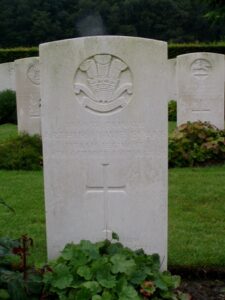
Benjamin Evans, Private, 1348, Welsh Guards. Benjamin was born at Carmarthen in 1890, the son of David and Annie Evans. The family later moved to Byrgwm Mawr, Goytre, Abergavenny. Benjamin enlisted at Cardiff into the 1st Battalion, Welsh Guards upon its formation in February 1915, and the battalion moved to France on 18 August 1915, where it was attached to the 3rd Guards Brigade, Guards Division. The Welsh Guards saw their first major action at the Battle of Loos, and it was here, on 27 September 1915, that Benjamin was killed. He was 25 years old, and is commemorated on the Loos Memorial, France. Benjamin is not commemorated locally.
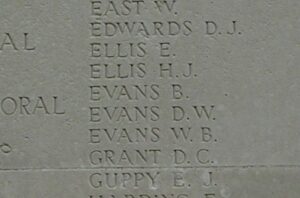
David Evans, Private, 538601, Royal Army Medical Corps. David was born at Talley, the son of Rees and Jemima Evans. The family moved to 1, Danybank, Carmarthen prior to 1901. David originally enlisted into the 4th Welsh, but was transferred to the Rifle Brigade, before being re-attached to the 17th General Hospital, Royal Army Medical Corps. David survived the war, but became ill, and died in hospital at Alexandria on 22 November 1918. He was 34 years old, and is buried at Alexandria (Hadra) War Memorial Cemetery, Egypt. David is not commemorated locally.
David Evans, MM, Gunner, 1256, Royal Garrison Artillery. David was the son of Eleazer and Mary Ann Evans, of 6, Prospect Place, Carmarthen. He enlisted at Tumble into the Royal Garrison Artillery, and was posted to France in August 1915, joining ‘X’, 47th Trench Mortar Battery, which was attached to the 47th (2nd London) Division. David saw his first action at the Battle of Loos in September 1915, and the subsequent Action of Hohenzollern Redoubt. The Division was north of Arras when the Germans attacked Vimy Ridge, and then moved south to the Somme, where they fought at the Battle of Flers-Courcelette. David gained the Military Medal for his bravery around this time, but became ill with appendicitis, and was hospitalised at Rouen. He died there on 18 September 1916, aged 42, and is buried at St. Sever Cemetery, Rouen, France.
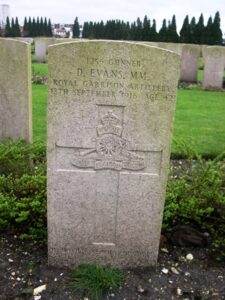
David George Evans, Sapper, 79487, Royal Engineers. David was the son of David and Eliza Ann Evans, of 18, Parcmain Street, Carmarthen. He originally enlisted at Pentre into the Dorsetshire Regiment, moving to France soon after the outbreak of war, but was wounded by shrapnel and hospitalised. David was later transferred into the Royal Engineers, where he was attached to their 174th Tunnelling Company. The Company was on the Somme from mid 1916 onwards, and after the Somme Offensive had been closed down, were in the Beaumont Hamel area. David was killed in action here by heavy German shellfire on 24 August 1917, aged 38, and is buried at Croisilles British Cemetery, France. His brothers Arthur Howie Evans and William Archibald Evans also fell.

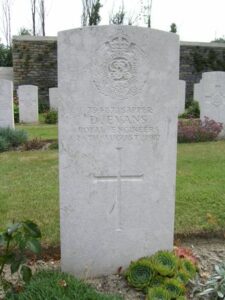
David John Evans, Private, 2023, Welsh Regiment. David was born at Carmarthen, and enlisted there into the 2nd Battalion, Welsh Regiment. The battalion moved to France at the outbreak of war, attached to 3 Brigade, 1st Division. . The Division had been one of the first to arrive in France, fighting at the Battle of Mons, and taking part in the retreat to the Marne, where the Germans were stopped. They then fought at the Aisne, and at Chivy, before being moved north to Ypres. Here they fought at the First Battle of Ypres, where they again stopped the German Offensive, before wintering in Flanders. The following year saw them in action again at the Battle of Aubers Ridge. David was killed here on 25 May 1915. He is commemorated on the Le Touret Memorial, Richebourg L’Avoue, France. David does not seem to be commemorated locally.
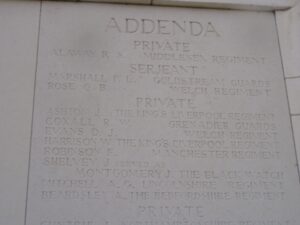
Edward Evans, Private, 9559, Welsh Regiment. Edward was the son of Stephen and Ann Evans, of 1, Clarke’s Buildings, Carmarthen. He lived with his sister at 33, Water Street, Carmarthen prior to enlisting at Swansea into the 2nd Battalion, Welsh Regiment. He had served for several years prior to the outbreak of war, and moved at once to France with his battalion, which was attached to 3 Brigade, 1st Division. The Division fought during the retreat from Mons to the Marne, before being transferred to positions near Gheluveldt, east of Ypres, on the Menin Road. Edward was killed in action during the Battle of Gheluveld, on 31 October 1914. He was 24 years old, and is commemorated on the Ypres (Menin Gate) Memorial, Belgium.
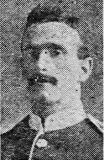
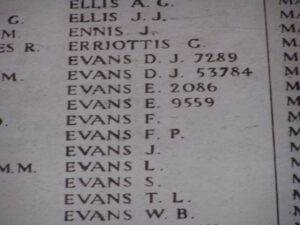
Edward Samuel Evans, Private, 15211, King’s Shropshire Light Infantry. Edward was born in 1876, the son of William and Anna Evans of Liscard Villa, Carmarthen. He married Annie Margaret Williams at Merthyr in 1897, and they lived at 40, Ynysllwyd St., Aberdare. Edward enlisted at Aberdare into the army, and was posted to the 6th Battalion, King’s Shropshire Light Infantry, which was attached to 60 Brigade, 20th (Light) Division. On 26 July 1915 the Division moved to the Fleurbaix Sector for trench familiarisation and training. When the Battle of Loos was launched on 25 September 1915 the Division fought a diversionary attack towards Fromelles. Later that year they moved north, and fought at the Battle of Mount Sorrel alongside the Canadian Corps. They then fought through the Somme Offensive, at the Battles of Delville Wood, Guillemont, Flers-Courcelette, Morval and Le Transloy, and took part in the advance to the Hindenburg Line in March, 1917. Later that year they fought at Third Ypres, and it was here, on 21 September 1917, that Edward was killed, during the Battle of the Menin Road. He was 39 years old, and is commemorated on the Tyne Cot Memorial, Belgium. Edward is not commemorated locally.
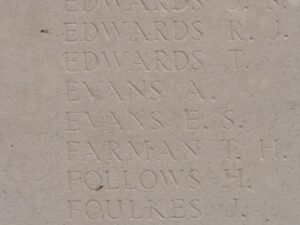
Francis Bernard Evans, Second Lieutenant, Royal Flying Corps. Francis was born on 19 September 1895, the son of Alfred and Florence Evans, of 27, North Side, Clapham Common, London. He served in France from 1915 until 1917 with the Artists Rifles, before volunteering to serve with the Royal Flying Corps, and gaining his pilot’s certificate on 21 October 1917, at the Ruffy-Bauman School, Acton. Francis was then posted to 110 Squadron RFC, based at Sedgeford. He was killed while flying DH4 B9994 on 17 February 1918. The aeroplane had been built from spares and salvaged parts by the 6th Wing Aircraft Repair Section, and caught fire in the air and crashed. Francis was 22 years old, and is buried at Hunstanton (St. Mary) Churchyard, England. His wife Florence Nelson is buried in the same grave. His ties with Carmarthen are unclear, but he is the only Lieutenant F B Evans to have fallen.

Geoffrey Maynard Evans, MC, Lieutenant (Chaplain 4th Class), Army Chaplains Department. Geoffrey was born on 22 June 1882,, the only son of Dr Samuel and Elinor Sophie Evans, of Cartref, Dovercourt, and the Grandson of Samuel Rees Evans, of Cartref, Carmarthen. He served with the Leicestershire Militia during the South African War, before gaining a commission into the 1st Battalion, Welsh Regiment in January 1903. He was advanced to Lieutenant in July 1906, but resigned his commission in 1911, in order to enter the Church. Geoffrey volunteered for service again at the outbreak of the Great War, and was appointed Chaplain 4th Class in the Army Chaplains’ Department on 19 May 1915. Geoffrey was attached to a battalion of the Worcester Regiment, and gained the award of the Military Cross for his courage during the Third Battle of Ypres. He was killed during the Battle of Langemarck on 11 August 1917, aged 35, and is buried at Divisional Collecting Post Cemetery, Belgium. Geoffrey is not commemorated locally.
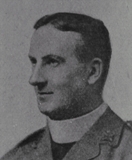
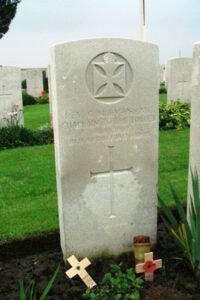
Griffith Walter Evans, Stoker 1st Class, SS/114644, Royal Navy. Griffith was born at Carmarthen on 3 February 1895, the son of James Frederick Evans and Emily Evans (nee Griffiths). His father, a Tailor, moved the family to Narberth by 1901, then by 1911 had moved again to 52, Somerset Street, Grange, Cardiff. Griffith found work as a tram car conductor at Cardiff after leaving school, but on 20 May 1913 enlisted into the Royal Navy. After training at HMS Vivid II, he received his first posting aboard the battlecruiser HMS Indefatigable on 1 March 1914, then a year later spent two weeks aboard its sister ship, HMAS Australia, before rejoining Indefatigable, which was by then based at Edinburgh as part of the 2nd Battlecruiser Squadron. On 31 May 1916, the Squadron put to sea as part of Admiral Beatty’s Battlecruiser Fleet, to intercept a sortie by the German High Seas Fleet into the North Sea. By the afternoon the two fleets came into contact and began firing their huge guns, heralding the opening of the Battle of Jutland. Indefatigable was hit around the rear turret by two or three shells from the SMS Von der Tann and fell out of formation, sinking by the stern. Following further hits, three minutes later her magazines exploded and the doomed battlecruiser sank quickly, with the loss of some 1,106 lives. Griffith was 21 years old when he was killed during the explosion. He has no known grave so is commemorated on the Plymouth Naval Memorial, Devon. He is not commemorated in the Carmarthen County War Memorial Roll. His father died on 14 June 1921, as a result of his own military service with the Welsh Regiment during the war.
Henry Evans, Gunner, 42398, Royal Garrison Artillery. Henry was the son of John and Sarah Evans, of 3, Glannant Road, Carmarthen. He enlisted at Carmarthen on 18 August 1914 into the Royal Garrison Artillery. He was sent to France on 2 June 1915, attached to the 13th Heavy Battery, which soon moved to Salonika. Henry became ill at Salonika, and spent a short period of time recuperating before rejoining his battery. He again fell ill, and was brought back to Britain aboard the Hospital Ship Essequito, and was discharged from Gosport on 18 July 1916 as being deemed unfit for further military service. Henry died as a result of his service overseas on 23 June 1917. He was 25 years old, and is buried at Carmarthen (St. David) Churchyard.
Henry Thomas Evans, Private, 10863, Royal Warwickshire Regiment. Henry was the son of Elizabeth Evans, of Lower Brickyard, Carmarthen. He enlisted at Carmarthen into the Welsh Regiment, but was posted to the 9th Battalion, Royal Warwickshire Regiment, which was attached to 39 Brigade, 13th (Western) Division. On 13 June 1915 the first transports carrying the Division left port, and moved to Alexandria, then by 4 July, all units had moved to Mudros, preparatory for landing on Gallipoli over the coming days. Between 6 and 16 July 1915 the Division landed at Cape Helles and relieved the 29th Division. Henry was wounded on 8 July, and was evacuated to a Hospital Ship. He sadly died of wounds and was buried at sea on 20 July 1915 aged only 19. Henry is commemorated on the Helles Memorial, Gallipoli.

Isaiah Evans, Private, 200228, Welsh Regiment. Isaiah was the son of John and Sarah Evans, of 115, Priory Street, Carmarthen. He worked for Mr. Arthur, Don Stores, Carmarthen prior to the war, before enlisting into the 1/4th Battalion, Welsh Regiment, which was the local Territorial Battalion, attached to 159 Brigade, 53rd (Welsh) Division. The Division landed at Cape Helles, Gallipoli, on 9 August 1915, and was immediately thrown into action. On 11 December 1915 the Division was evacuated to Mudros, and by 23 December 1915 were moved to Egypt. They remained on the Suez Canal Defences for the next twelve months, where they took part in operations against the Sultan of Darfur, and in March 1917 took part in the advance into Palestine. Isaiah was killed at the First Battle of Gaza, on 26 March 1917. He was 22 years old, and is commemorated on the Jerusalem Memorial, Israel. His brother William Evans also fell.
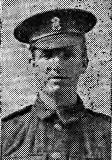
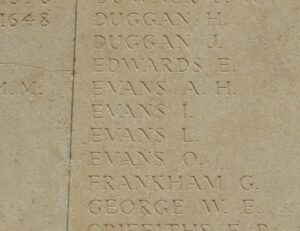
John Evans, Private, 18284, Welsh Regiment. John was born at Carmarthen, the son of Joshua and Sarah Evans. He lived with his wife Louisa Evans, and their five children, at 13, Gelli Road, Ton Pentre. John enlisted at Pentre on 15 October 1914 into the 9th Battalion, Welsh Regiment, which was attached to 58 Brigade, 19th (Western) Division. The Division moved to France during July 1915, and moved to positions near Loos, where it took part in the opening attack of the Battle of Loos on 25 September 1915. The following year the Division moved to the Somme, where it took part in the second wave of the attack on Ovillers-La Boiselle on 1 July, capturing the village at heavy cost. It then fought at the Battle of Poziéres. John was killed here on 21 July 1916, aged 41. He is buried at Dantzig Alley British Cemetery, Mametz, France. Sadly Louisa died on 11 December 1914, so the orphaned children were taken into care, by Mrs. Mary J. Rees, of 14, Gelli Road, Ton Pentre. John is not commemorated locally.
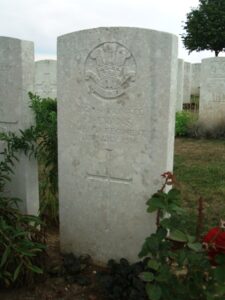
John Stanley Lewis Evans, Private, E/2364, Royal Fusiliers. John was born on 26 April 1896, the son of Alfred Francis Lewis Evans and Margaret Ann Evans, of 10, Shrubland Road, Walthamstow, London, and the Grandson of Mr. J. Patagonia Lewis, of Carmarthen. He enlisted at Walthamstow into the 17th Battalion (Empire), Royal Fusiliers, along with his brother, Albert Laurence Evans. The battalion moved to France on 17 November 1915, joining the 2nd Division. John was killed in action during his first major action, on 27 July 1916. His brother was alongside him when he fell, but had to continue the advance. John was 19 years old, and is buried at Delville Wood Cemetery, Longueval, France. John is not commemorated locally.
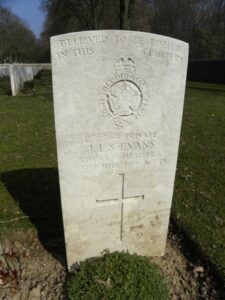
Percy Evans, Private, PO/16455, Royal Marine Light Infantry. Percy was born on 24 July 1895, the son of Walter and Annie Evans, of 63, St. Catherine Street, Carmarthen. He joined the Royal Marines in 1911, and saw action alongside the South Wales Borderers at Tientsin at the outbreak of war. Percy was later posted aboard HMS Hampshire, a Devonshire Class Armoured Cruiser. She had taken part in the battle of Jutland on 31 May 1916, and immediately after was directed to carry Lord Kitchener from Scapa Flow on a diplomatic mission to Russia. Sailing for Arkhangelsk in a gale she struck a mine at around 19.40 on 5 June 1916, and sank quickly. Of the entire crew, only twelve men survived. Lord Kitchener was one of the dead, as was Percy. Percy’s body was recovered from the sea, and buried at Lyness Royal Naval Cemetery, Scotland.
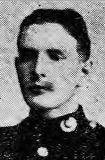
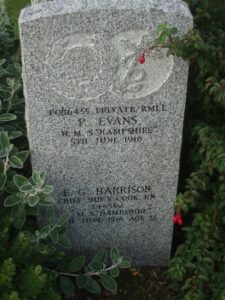
Richard Albert Evans, Sergeant, 200828, Welsh Regiment. Richard was the son of Thomas and Elizabeth Evans, of 29, Catherine Street, Carmarthen. He originally served with the 1/4th Battalion, Welsh Regiment, which was the local Territorial Battalion, attached to 159 Brigade, 53rd (Welsh) Division. He was the Regimental Shoe Maker in the battalion. The Division landed at Cape Helles, Gallipoli, on 9 August 1915, and was immediately thrown into action, spending the next few days in isolated pockets, fighting against a Turkish counter-attack during the Battle of Sari Bair, and then at the Attack on Scimitar Hill. The Division remained here throughout the coming months, and suffered severe losses in manpower strength during the great November 1915 blizzard on Gallipoli, when its total strength was reduced to less than that of a full-strength Brigade. On 11 December 1915 the Division was evacuated to Mudros, and by 23 December 1915 were moved to Egypt. They remained on the Suez Canal Defences for the next twelve months, where it took part in operations against the Sultan of Darfur, and in March 1917 took part in the advance into Palestine. On 30 July 1918 the 1/4th and 1/5th Welsh were again merged, forming the 4/5th Battalion and they remained in Palestine until leaving for the UK on 31 October 1918. Richard took ill whilst aboard ship, and sadly died of disease at home on 6 August 1919. The 27-year-old was buried in St. David’s Churchyard, Carmarthen on the following Saturday, 9 August.
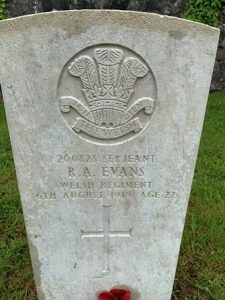
Samuel Evans, Private, 49542, Welsh Regiment. Samuel was the son of Evan and Elizabeth Evans, of 1, Mill Row, Llanllwch, near Carmarthen. Samuel enlisted at Llanelli into the Welsh Regiment, and was posted to the 9th Battalion, Welsh Regiment, which was in France attached to 58 Brigade, 19th (Western) Division. He probably joined the division after it had taken part in the Somme offensive. In 1917 the Division moved north to Ypres, taking part in the Battle of Messines, and fought during the Battles of the Menin Road, Polygon Wood, Broodseinde, Poelcappelle and Passchendaele Village itself. In 1918 they were caught up in the German Spring Offensive near St. Quentin, where they suffered terrible casualties, and fought at the Battle of Bapaume. They moved to Ypres, but were caught up in the German attack at Messines, and fought a stubborn rearguard action. After suffering terribly again, they moved South to the quieter French sector to rebuild, but were caught up in the German offensive on the Aisne, and again suffered terrible casualties. In May 1918 Samuel returned home on leave, and married Catherine Ann Evans, of 2, Llandafen Row, Half Way, Llanelli. He returned to France to rejoin the 9th Welsh after the 19th Division had moved back north to take part in the great offensive of August 1918. It was during the Advance on the Hindenburg Line that Samuel was wounded, and he died on 20 September 1918, aged 28. Samuel is buried at Lapugnoy Military Cemetery, France.

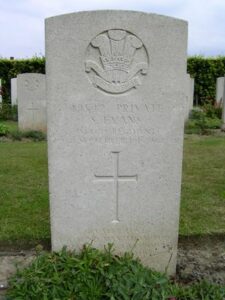
Thomas Evans, Private, 201075, Welsh Regiment. Thomas was the son of Jane Evans, of 12, Cambrian Place, Carmarthen. He enlisted at the outbreak of war into the 1/4th Battalion, Welsh Regiment, which was the local Territorial Battalion, attached to 159 Brigade, 53rd (Welsh) Division. The Division landed at Cape Helles, Gallipoli, on 9 August 1915, and was immediately thrown into action, spending the next few days in isolated pockets, fighting against a Turkish counter-attack during the Battle of Sari Bair, and then at the Attack on Scimitar Hill. The Division remained here throughout the coming months, and suffered severe losses in manpower strength during the great November 1915 blizzard on Gallipoli, when its total strength was reduced to less than that of a full-strength Brigade. On 11 December 1915 the Division was evacuated to Mudros, and by 23 December 1915 were moved to Egypt. They remained on the Suez Canal Defences for the next twelve months, where it took part in operations against the Sultan of Darfur, and in March 1917 took part in the advance into Palestine. Thomas was killed during the Third Battle of Gaza, on 3 November 1917. He was 21 years old, and is buried at Beersheba War Cemetery, Israel. Thomas does not seem to be commemorated locally.

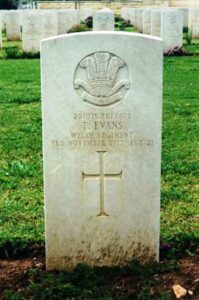
W. Evans, Sapper, Royal Engineers. This man is commemorated at Christ Church, but cannot be positively identified.
William Evans, Private, M2/054303, Army Service Corps. William was born at Blaengwastod, Carmarthen in 1878, the son of John and Eliza Evans. He married Christiana Smith at Taunton in 1902, and the couple resided at No. 1 Court, Paull St., Taunton, Somerset. William served with the Army Service Corps during the war, based at the M.T. Tractor Depot at Avonmouth. He died on 2 December 1916, aged 38, and is buried at Bristol (Arnos Vale) Cemetery. William is not commemorated locally.

William Evans, Acting Corporal, 3692, Welsh Regiment. William was the son of John and Sarah Evans, of 115, Priory Street, Carmarthen. He enlisted at the outbreak of war into the 1/4th Battalion, Welsh Regiment, which was the local Territorial Battalion, attached to 159 Brigade, 53rd (Welsh) Division. The Division landed at Cape Helles, Gallipoli, on 9 August 1915, and was immediately thrown into action, spending the next few days in isolated pockets, fighting against a Turkish counter-attack. William became one of many men to suffer from sickness during the coming months at Gallipoli, and was evacuated to Egypt for treatment. He died of dysentery on 1 December 1915, aged 23, and is buried at Tel El Kebir War Memorial Cemetery, Egypt. His brother Isaiah Evans also fell. William’s medals are held at the Carmarthen Museum at Abergwili.

William Evans, Sergeant, 320117, Welsh Regiment. William was born at Llandeilo, the son of son of Thomas and Mary Evans. The family later moved to 11, West End, Llanelli. William was a horse trainer, and resided at 35, Priory Street, Carmarthen prior to the war. He enlisted at Carmarthen into the Pembroke Yeomanry. William went to Egypt with the Pembroke Yeomanry in 1916, and was transferred to the 24th Battalion, Welsh Regiment the following year, following the merger of the Pembroke and Glamorgan Yeomanry battalions. The new battalion joined 231 Brigade, 74th (Yeomanry) Division, and took part in the advance into Palestine from March 1917. William was killed during operations in the Jordan Valley on 9 March 1918. He was 30 years old, and is buried at Jerusalem War Cemetery, Israel. William isn’t commemorated locally.

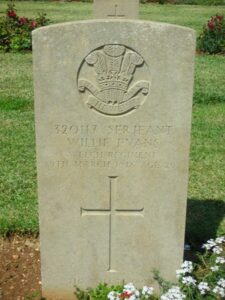
William Archibald Evans, Corporal, 13738, Welsh Regiment. William was the son of David and Eliza Ann Evans, of 18, Parcmain Street, Carmarthen. William enlisted at Swansea into the 9th Battalion, Welsh Regiment, who were attached to 58 Brigade, 19th (Western) Division. The Division assembled around Bulford during September 1914, and crossed to France during July 1915, moving to positions near Loos. The Division fought during the opening attack of the Battle of Loos. They remained in the area during the coming months, and this is where William was taken ill. He died of acute pneumonia on 8 March 1916 aged 31, and is buried at Merville Communal Cemetery. His brothers, Sapper David George Evans, and Private Arthur Howie Evans also fell.

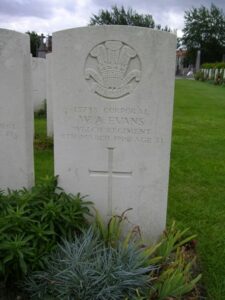
William Henry Evans, Private, 3968, Welsh Regiment. William was the son of Edward and Lizzie Jane Evans, of St. Catherine Street, Carmarthen. He enlisted there into the 1/4th Battalion, Welsh Regiment, which was the local Territorial Battalion, attached to 159 Brigade, 53rd (Welsh) Division. The Division landed at Cape Helles, Gallipoli, on 9 August 1915, and was immediately thrown into action, spending the next few days in isolated pockets, fighting against a Turkish counter-attack during the Battle of Sari Bair, and then at the Attack on Scimitar Hill. The Division remained here throughout the coming months, and suffered severe losses in manpower strength during the great November 1915 blizzard on Gallipoli, when its total strength was reduced to less than that of a full-strength Brigade. On 11 December 1915 the Division was evacuated to Mudros, and by 23 December 1915 were moved to Egypt. They remained on the Suez Canal Defences for the next twelve months, and this is where William was wounded. He was brought to Hospital in Alexandria for treatment, but sadly died there of wounds on 16 September 1915, aged 20. William is buried at Alexandria (Chatby) Military and War Memorial Cemetery, Egypt.

William James Cadwallader Evans, MID, Sergeant, 448309, Royal Engineers. William was the son of Thomas and Mary Jane Evans, of 18, Mansel Street, Carmarthen. He served with the 1/1st Welsh Field Company, Royal Engineers, which was attached to the 53rd (Welsh) Division. William fought at Gallipoli, Egypt in Palestine during the war, and had been Mentioned in Dispatches. He died in Egypt on 15 November 1918, aged 31, and is buried at Alexandria (Hadra) War Memorial Cemetery, Egypt. William is also remembered on the Welsh Field Company, Royal Engineers Memorial in Carmarthen.
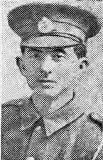
David John Fear, Private, 46280, Notts & Derby (Sherwood Foresters). David was born at Carmarthen in 1880, the son of Frederick and Maria Fear. He married Kate M. Middleton at Burton in 1915, and the couple lived at Mile End, Hilton, nr. Derby. David enlisted at Derby into the army, and was posted to the 11th Battalion, Sherwood Foresters, which was attached to 70 Brigade, 23rd Division. They saw their first major action at the Battle of Albert, where they captured Contalmaison, and then fought at the Battle of Bazentin, the Battle of Pozières, the Battle of Flers-Courcelette, the Battle of Morval and the Battle of Le Transloy, where they captured Le Sars. The division then moved to Ypres, and David was killed in action there on 24 January 1917. He was 36 years old, and is buried at Vlamertinghe Military Cemetery, Belgium. His brother Sydney also fell, but neither are commemorated at Carmarthen.
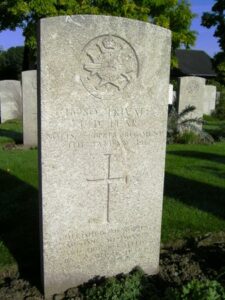
Sydney Fear, Private, 33251, Royal Welsh Fusiliers. Sydney was born at Carmarthen in 1883, the son of Frederick and Maria Fear. He lived at Newcastle Emlyn prior to the war, and enlisted at Aberystwyth into the army. Sydney was posted to France, where he joined the 1st Battalion, Royal Welsh Fusiliers, which was attached to 22 Brigade, 7th Division. Sydney probably joined the battalion early in 1916. In the summer of 1916, the Division was on the Somme, and took part in the Battle of Albert, where they captured Mametz, one of the few successes of 1 July 1916. They then fought at the Battle of Bazentin, and the Attacks on High Wood. The Division then took part in the Battle of Delville Wood, and it was there, on 3 September 1917, that Sydney was killed. He was 33 years old, and is commemorated on the Thiepval Memorial, France. His brother David also fell, but neither are commemorated at Carmarthen.
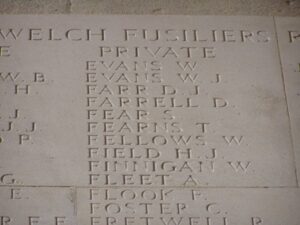
Charles William Finch, Corporal, 10029, South Staffordshire Regiment. Charles was born at Carmarthen in 1894, the son of William and Annie Finch. He enlisted at Wolverhampton into the 8th Battalion, South Staffordshire Regiment, which was attached to 51 Brigade, 17th (Northern) Division. During July 1915 the Division landed in France. They spent their initial period of trench familiarisation in the southern area of the Ypres salient. Here they took part in fighting at the Bluff during February 1916 before moving south, where they fought at the Battle of Albert, where the Division captured Fricourt at heavy cost during the opening of the Somme Offensive. They then saw action during the Battle of Arras, at the First and Second Battles of the Scarpe and the Capture of Roeux. Charles was killed at Roeux on 23 April 1917. He was 23 years old, and is commemorated on the Arras Memorial, France.
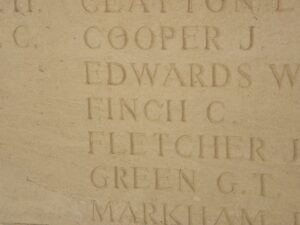
Donald Llewellyn Foster, Private, 2547, Welsh Guards. Donald was born at Carmarthen in 1894, the son of Tom and Fanny Jane Foster. The family later resided at 24, Woodville Rd., Mumbles, Swansea. Donald enlisted at Swansea into the Welsh Guards, which had been formed by Royal Warrant on 26 February 1915, and joined the 1st Battalion, Welsh Guards in France, where it was attached to the 3rd Guards Brigade, Guards Division. Donald would have gone to France after the Battle of Loos, and probably fought on the Somme in 1916. They remained here for the winter, and in March 1917 took part in the advance caused by the German Retreat to the Hindenburg Line. Later that year they moved north to Ypres, where they fought at the Battle of Pilckem, and then at the Battle of the Menin Road, and the Battle of Poelcappelle. Donald was killed at Poelcappelle on 11 October 1917, aged 23. He is commemorated on the Tyne Cot Memorial, Belgium.

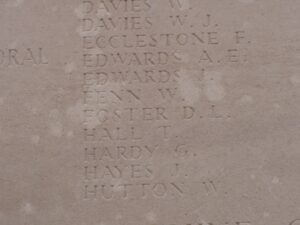
Thomas William Foxwell, Trooper, 2238, Pembroke Yeomanry. Thomas was the son of Thomas and Emily Foxwell, of 7, Tanerdy, Carmarthen. He had enlisted at Carmarthen into the 1/1st Battalion, Pembroke Yeomanry, which was attached to the 1st Mounted Division, Western Frontier Force. The Force had originally moved to the Mediterranean to join the Gallipoli force, but the evacuation of Gallipoli had been decided by the time they arrived, and so they remained in Egypt over the coming months. Thomas died of sickness in Cairo on 26 December 1916, aged 27, and is buried there, at Cairo War Memorial Cemetery, Egypt.
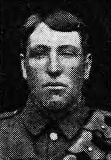
William Ernest Galloway, Second Lieutenant, Welsh Regiment. William was born at 15, Elliston Terrace, Carmarthen in 1896, the son of William Chisholm Galloway and Ellen Galloway. The family later moved to 57, Devonshire Road, Birkenhead. William had reached the rank of Sergeant with the Cheshire Regiment, and had fought with them at Gallipoli, before being commissioned into the 4th Welsh on 19 January 1917. William was posted to the 1/4th Battalion, Welsh Regiment, which was in Palestine attached to 159 Brigade, 53rd (Welsh) Division. He was killed in action in the Judaean Hills, during the Third Battle of Gaza, on 6 November 1917. William was 21 years old, and is buried at Beersheba War Cemetery, Israel. William is not commemorated locally.
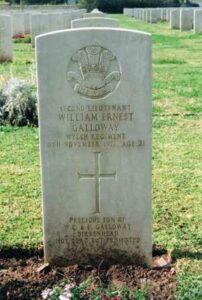
Paul Chancourt Girardot, Second Lieutenant, Oxfordshire and Buckinghamshire Light Infantry. Paul was born at Southampton on 17 November 1895, the son of Lt. Col. John Francis Girardot (43rd Oxf. and Bucks Light Inf.) and Mary Jane Girardot (nee Evans). After his father’s death in 1902, Mary moved her family back to her family home at Trevaughan, Carmarthen. Paul was educated at Cheltenham College and Sandhurst, and was gazetted from there into the 2nd Battalion, Ox and Bucks Light Infantry on 25 February 1914. Paul moved to France with the battalion at the outbreak of war, attached to 5 Brigade, 2nd Division, and fought in the retreat from Mons to the Marne. He was one of ten men killed when a German shell burst amongst them on 17 September 1914. Paul was 18 years old, and is buried at Soupir Churchyard, France. Paul is commemorated on a stained glass window in St. Peter’s Church. There is an oil painting of Paul in Carmarthen Museum, which they had been unable to identify for many years.
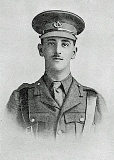
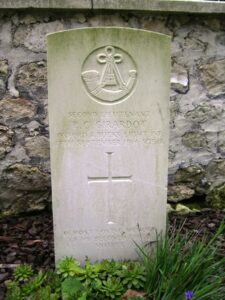
Charles Stewart Glencross, Sergeant, 371034, Royal Garrison Artillery. Charles was born at Carmarthen, the son of Richard and Caroline Glencross. The family later resided at 2, Upper Park Road, Tenby, and enlisted at Tenby into the Royal Garrison Artillery, serving with their 204th Siege Battery. Not much is known of Charles’ war service, but he was killed in action during the opening of the German Spring Offensive during the Battle of Arras on 28 March 1918, aged 26. Charles is buried at Anzin-St. Aubin British Cemetery. Charles is not commemorated on the Carmarthen County War Memorial Roll.
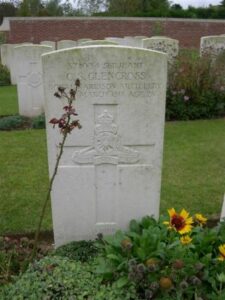
Alfred Goble, Sergeant-Instructor, 16487, Welsh Regiment. Alfred was born at Worthing, Sussex, the son of John and Mary Ann Goble. He was an experienced old soldier, and had taken part in the Retreat to Kandahar in 1880, under Lord Roberts. He married Susan Douglas in 1885, and moved to Carmarthen many years before the Great War, as instructor for the Royal Garrison Artillery. As soon as war broke out, Alfred was anxious to do his bit once again, and after a period at the Army Remount Depot at Carmarthen, he joined the 15th Battalion, Welsh Regiment, the Carmarthen Pals battalion, on 21 February 1915, which was then at Rhyl. Alfred didn’t go to France with the battalion, but remained at Kinmel Park as an Instructor with the 61st Training Battalion. His health deteriorated under the strains however, and he died in Hospital on Thursday 31 May 1917. His body was transported by rail to Carmarthen, where Alfred was buried at St. David’s Churchyard. He was 64 years old, and left a widow, four daughters, and four sons, two of whom were serving with the Army.

Ernest Goldstone, Private, 68864, Royal Welsh Fusiliers. Ernest was the son of James and Ann Goldstone, of 82, Priory Street, Carmarthen. He enlisted at Carmarthen into the army, and was posted to Salonika to join the 11th Battalion, Royal Welsh Fusiliers, which was in Salonika attached to 67 Brigade, 22nd Division. The Division had initially been in France, but moved to Salonika by December 1915. It remained in the theatre for the rest of the war, taking part in the Retreat from Serbia during December 1915, then at the Battle of Horseshoe Hill, the Battle of Machukovo, and the Battles of Doiran. An armistice with Bulgaria was signed on 30 September 1918, and the Division marched back to Stavros, where they embarked on destroyers with the intention of a landing at Dede Agach. After one attempt was called off due to rough weather, the infantry finally landed on 28 October 1918. On reaching Makri, the Division learned that an armistice with Turkey was imminent. Ernest became ill at this time, and died of malarial fever on 22 November 1918. He was 22 years old, and is buried at Kirechkoi-Hortakoi Military Cemetery, Greece.
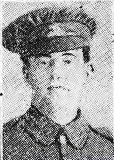
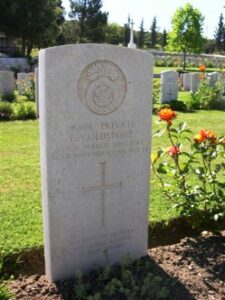
Cyril Mortimer Green, Captain, Royal Sussex Regiment. Cyril was the son of Thomas Mortimer Green and Catherine Green, of Aberystwyth, and the husband of Gwendoline Mortimer Green, of 23, Southwood Court, Golder’s Green, London. Cyril was a native of Denbigh, and had been educated at the University Colleges of Exeter, Carmarthen and Aberystwyth, along with his brother Hugh (see below), before being gazetted as Second Lieutenant into the 2nd Battalion, Royal Sussex Regiment in October 1914. Cyril served in France until he was severely wounded at Festubert on 9 May 1915, and returned home for treatment. Returning to the front, he was attached to the 16th Battalion, Royal Sussex Regiment, who were attached to 230 Brigade, 74th Division. The Division was taking part in the advance into Palestine, and had just successfully fought in the Third Battle of Gaza, when Cyril was killed in action on 6 November 1917. He was 29 years old, and is buried at Beersheba War Cemetery, Israel. Cyril is not commemorated on the Carmarthen County War Memorial Roll, although his brother Hugh is.
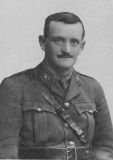
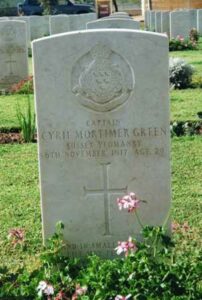
Hugh Mortimer Green, Captain, Welsh Regiment. Hugh was the son of Thomas Mortimer Green and Catherine Green, of Aberystwyth, and the Brother of Cyril Mortimer Green (see above). Hugh was educated at Carmarthen University along with Cyril, and was gazetted into the Welsh Regiment. He was posted to the 1/4th Battalion, Welsh Regiment, which was the local Territorial Battalion, attached to 159 Brigade, 53rd (Welsh) Division. The Division landed at Cape Helles, Gallipoli, on 9 August 1915, and was immediately thrown into action, spending the next few days in isolated pockets. Hugh was killed in action on 10 August 1915 at the Battle of Sari Bair (Attack on Scimitar Hill). He has no known grave, and so is remembered on the Helles Memorial, Gallipoli.
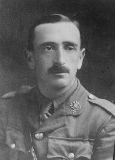
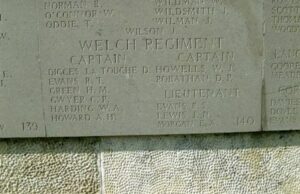
David Griffiths, Sergeant, 200715, Welsh Regiment. David was the son of John and Elizabeth Griffiths, of St. David’s Street, Carmarthen. He enlisted there into the 1/4th Battalion, Welsh Regiment, which was the local Territorial Battalion, attached to 159 Brigade, 53rd (Welsh) Division. The Division landed at Cape Helles, Gallipoli, on 9 August 1915, and was immediately thrown into action, spending the next few days in isolated pockets, fighting against a Turkish counter-attack during the Battle of Sari Bair, and then at the Attack on Scimitar Hill. The Division remained here throughout the coming months, and suffered severe losses in manpower strength during the great November 1915 blizzard on Gallipoli, when its total strength was reduced to less than that of a full-strength Brigade. On 11 December 1915 the Division was evacuated to Mudros, and by 23 December 1915 were moved to Egypt. They remained on the Suez Canal Defences for the next twelve months, where it took part in operations against the Sultan of Darfur, and in March 1917 took part in the advance into Palestine. David was killed in action soon after, during the First Battle of Gaza, on 26 March 1917, aged 34. He has no known grave, and so is remembered on the Jerusalem Memorial, Israel.
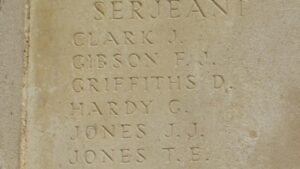
Evan Rowland Griffiths, Private, 200662, Welsh Regiment. Evan was born at Aberystwyth in 1887, the son of Evan and Margaret Griffiths. The family had moved back to Margaret’s native Cardigan prior to 1911, where she ran the family confectionary and tobacconists at Pendre, Cardigan. Evan resided with his wife at the Golden Lion Hotel, Lammas Street, Carmarthen prior to the war, where he worked as a Clerk in the Barracks. He was a serving Territorial with the 1/4th Battalion, Welsh Regiment, and joined the battalion in Egypt, after the evacuation from Gallipoli in January 1915. The battalion spent a year in Egypt on the Suez Canal defences, attached to 159 Brigade, 53rd (Welsh) Division, and in March 1917 took part in the advance into Palestine. Evan was seen to have been wounded in the knees by shrapnel during the First Battle of Gaza, on 26 March 1917. He was never seen again, and was presumed killed on that date, aged 29. He is commemorated on the Jerusalem Memorial, Israel.
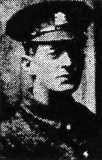
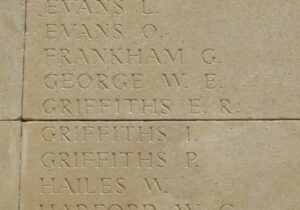
Howell Griffiths, Private, 12911, Welsh Regiment. Howell was born at Carmarthen. He resided at Pensarn prior to the war, and enlisted at Tumble into the 2nd Battalion, Welsh Regiment. The battalion was attached to 3 Brigade, 1st Division, and moved to France at the outbreak of war. The Division had been one of the first to arrive in France, fighting at the Battle of Mons, and taking part in the retreat to the Marne, where the Germans were stopped. They then fought at the Aisne, and at Chivy, before being moved north to Ypres. Here they fought at the First Battle of Ypres, where they again stopped the German Offensive, before wintering in Flanders. Howell was wounded near Givenchy, and died on 6 January 1915, aged 29. He is buried at Boulogne Eastern Cemetery, France.
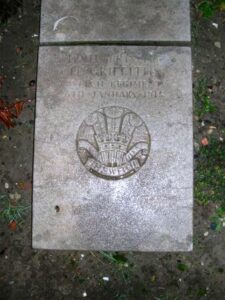
Ivor Monroe Griffiths, Private, 2252, Welsh Regiment. Ivor was the son of John and Hannah Griffiths, of Dryslwyn House, Parcmain Street, Carmarthen. He worked at the GWR Depot at Llanelli prior to the war, and enlisted at Carmarthen into the 1/4th Battalion, Welsh Regiment, which was the local Territorial Battalion, attached to 159 Brigade, 53rd (Welsh) Division. The Division landed at Cape Helles, Gallipoli, on 9 August 1915, and was immediately thrown into action, spending the next few days in isolated pockets, fighting against a Turkish counter-attack during the Battle of Sari Bair, and then at the Attack on Scimitar Hill. Ivor became ill with enteric fever, and was brought by Hospital Ship to Alexandria, where he died on 28 October 1915, aged 19. He is buried at Alexandria (Chatby) Military and War Memorial Cemetery, Egypt.

William Griffiths, Lance Corporal, 522, Australian Imperial Force. William was the son of Thomas and Rachel Griffiths, of Wardwll, Llangunnor. He served with the 7th Welsh Territorials at Swansea for five years, before emigrating to Australia in 1913, where he worked as an outfitter. He enlisted on 20 September 1914 at Helena Vale, WA, into the 16th Battalion, Australian Infantry, which moved to Egypt for training before being landed at Gallipoli on 25 April 1915, attached to the 4th Brigade, 1st ANZAC Division. William was wounded at Gallipoli on 3 May, and sent to Alexandria for treatment. After several months as a storeman on light duties, he rejoined his battalion in France on 25 April 1917. William would have fought at Bullecourt soon after, before the Australians moved to Ypres. He was 27 years old when he was killed during an attack on Polygon Wood on 26 September 1917. His body could not be recovered for burial, so William is commemorated on the Ypres (Menin Gate) Memorial, Belgium. William was due to marry his fiancée, Miss Florence B. Marshall, of New Cross, London. He is not named on the Carmarthen County War Memorial Roll.

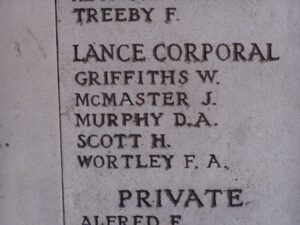
Ernest William Grove, Private, 12622, Welsh Regiment. Ernest was the son of Allen and Annie Grove of Swansea. He married Gertrude Jane Pulson at Neath in 1910, and the couple moved to 14, Avenue, Carmarthen. Ernest enlisted at Swansea into the Welsh Regiment. He was posted to the 19th Battalion, Welsh Regiment, which was attached to the 38th (Welsh) Division. Ernest served throughout the war with the Division, seeing action at Mametz Wood, and Pilckem Ridge. He returned home at some time, and was attached to the Depot Battalion of the Welsh Regiment, when he died on 21 May 1918. Ernest was 32 years old, and is buried at Llantwit (St. Illtyd) Old Churchyard. He is also commemorated on the Screen Wall at Cardiff Western Cemetery, but is not commemorated at Carmarthen.
Albert John Guthrie, Lance Corporal, 36, Australian Engineers. Albert was the son of David and Elizabeth Ann Guthrie, of 471, Newcastle Street, Perth, Western Australia. He served with the 2nd Field Company, Australian Engineers, attached to the 1st Australian Division, and had seen service at Egypt and Gallipoli before taking ill, and being evacuated to Britain, where he was sent to the Red Cross Hospital at Carmarthen. Albert died at Carmarthen on 9 November 1915. He was 25 years old, and was buried with full military honours at Carmarthen Cemetery. A local newspaper contained the following account of his funeral; ‘The funeral of Sergeant A. J. Guthrie, Australian R.E., who passed away at the Red Cross Hospital, Carmarthen, took place on, November 11, the interment being at the cemetery. The Rev. B. Parry Griffiths, vicar of St. Peter’s assisted by the Rev. Itar Edwards, curate, officiated. Despite the rain, large crowds of townspeople watched the mournful cortege on the way to the burial ground, and there were manifestations of genuine sympathy in all quarters. Preceding the hearse was the Boy Scouts Band, under the scoutmaster, Mr. G. Humphreys, and a large number of wounded soldiers. The coffin, which was draped with the Union Jack, was covered with a very large number of beautiful wreaths. The chief mourners were Private H. D. Guthrie, of the A.I.F. (brother of deceased), who has also been wounded; and an uncle of the deceased. Amongst those present were Lieutenant-General Sir James Hills-Johnes, V.C.. G.C.B., Dolaucothy: Mr. Pryse-Rice, Llwynybrain; Revs. A. Fuller Mills, W. D. Rowlands and E. Ungoed Thomas; Drs. Parry, Williams, and Harris; Nurse Ditcham, and a number of other nurses. The Last Post was sounded at the graveside.’ Albert is obviously not named on the Carmarthen County War Memorial roll, but as he is buried in the town, he deserves to be commemorated here.

David Harris, Private, 201687, Welsh Regiment. David was the son of John and Rachel Harris, of Gelliwastod, Swansea. He worked for the Great Western Railways at Carmarthen prior to the war, and enlisted at Carmarthen into the 1/4th Battalion, Welsh Regiment, which was the local Territorial Battalion, attached to 159 Brigade, 53rd (Welsh) Division. The Division landed at Cape Helles, Gallipoli, on 9 August 1915, and was immediately thrown into action, spending the next few days in isolated pockets, fighting against a Turkish counter-attack during the Battle of Sari Bair, and then at the Attack on Scimitar Hill. The Division remained here throughout the coming months, and suffered severe losses in manpower strength during the great November 1915 blizzard on Gallipoli, when its total strength was reduced to less than that of a full-strength Brigade. On 11 December 1915 the Division was evacuated to Mudros, and by 23 December 1915 were moved to Egypt. They remained on the Suez Canal Defences for the next twelve months, where it took part in operations against the Sultan of Darfur, and in March 1917 took part in the advance into Palestine. David became ill early into the expedition, and died on 25 April 1917. He was 25 years old, and is buried at Deir El Belah War Cemetery, Egypt. David is not commemorated at Carmarthen.
David John Harries, Private, 11212, Welsh Regiment. David was the son of John and Elizabeth Harris, of Swansea. He resided at 9, Blue Street, Carmarthen prior to enlisting before the war into the 2nd Battalion, Welsh Regiment. At the outbreak of war, the 2nd Welsh moved to France with 3 Brigade, 1st Division, and took part in the retreat from Mons to the Marne. It then fought at the First Battle of Ypres, where the 2nd Welsh made a gallant stand at Gheluveldt. The following year saw them in action again at the Battle of Aubers, before moving South to Loos, where they fought during the Battle of Loos, and the action at the Hohenzollern redoubt. David was killed while the 2nd Welsh were in the line at Loos on 15 May 1916. He was 22 years old, and is buried at Maroc British Cemetery, Grenay, France.
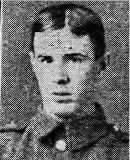
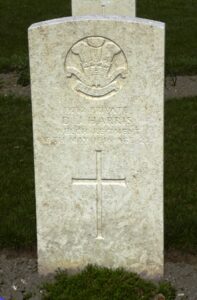
Gilbert James St. Clair Harries, Second Lieutenant, Durham Light Infantry. Gilbert was the younger son of Albert and Ellen Harries of 42, King Street, Carmarthen, and gained a commission into the Durham Light Infantry. He was posted to the 10th Battalion, attached to 43 Brigade, 14th (Light) Division. The Division was to see its first action during the Action of Hooge, where the Division were the first to be attacked by the German use of flamethrowers. They then fought at the Second attack on Bellewaarde. In July 1916 they moved to the Somme, and fought at the Battle of Delville Wood, and then the Battle of Flers-Courcelette, and in March 1917 followed the German Retreat to the Hindenburg Line. May saw them at Arras, where they took part in the First Battle of the Scarpe, and later at the Third Battle of the Scarpe, and then they were sent to Ypres, where they fought at the Battle of Langemarck, successfully capturing the village before handing it on to the 38th (Welsh) Division. They then took part in the Second Attack on Bellewaarde, which is where Gilbert was killed in action on 24 August 1917, aged 24. He has no known grave, and is commemorated on the Tyne Cot Memorial, Belgium.
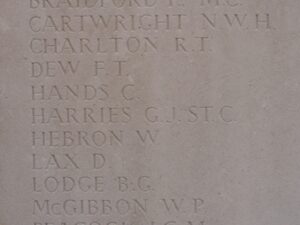
David Owen Harris, Engineman, 1408ES, Royal Navy. David was born on 9 July 1878, the son of John and Magdalen Harris of Carmarthen. He had enlisted into the Royal Navy at a young age, and by 1911 was living with his wife Florence E. Harris, at 53, Waterloo Road, Hakin. David served aboard HM Trawler Blackthorne, which was a hired net drifter. David was accidentally drowned on 21 February 1918. He was 39 years old, and is commemorated on the Plymouth Naval Memorial, Devon. David is not commemorated on the Carmarthen County War Memorial Roll.
Enoch Harris, Gunner, 3715, Royal Garrison Artillery. Enoch was the son of David and Margaret Harris, of Carmarthen. He enlisted at Carmarthen into the Royal Artillery, and was posted to the 57th Brigade, Royal Garrison Artillery. Enoch looks to have remained on home service, and died on 29 December 1915, aged 43. He is buried at Carmarthen (Union Street) Congregational Chapelyard. Enoch is not named on the County War Memorial Roll.
Robert Hugh Harris, Second Lieutenant, West Riding Regiment. Robert was the son of Edward Charles and Emily Charlotte Harris, of Bryn Towy, and the husband of Annette Brown-Clayton. He was living in Canada at the outbreak of war, and returned home to join the Public Schools Battalion, Middlesex Regiment. Made up of well educated men, this battalion proved to be a perfect breeding ground for officers, and so Robert was commissioned into the West Riding Regiment in May 1915, and was posted to the 8th Battalion, which was attached to 34 Brigade, 11th (Northern) Division. On 1 July 1915 the Division sailed from Liverpool, landing at Alexandria, before moving on to Mudros, and landed at Suvla Bay, Gallipoli on 7 August 1915, remaining there until the evacuation to Egypt on 21 December 1915. During July 1916 the Division landed at Marseilles, and then spent remainder of the war on the Western Front. They fought at the Battle of Flers-Courcelette during the Somme Offensive, and it was around this time that Robert was killed, on 28 September 1916. He was 39 years old, and is commemorated on the Thiepval Memorial, France.
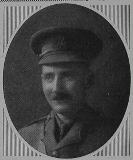
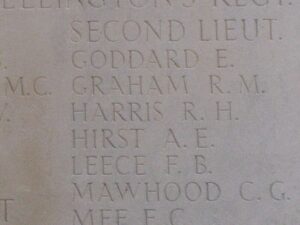
William John Harris, Pioneer, 358857, Royal Engineers. William was born at Carmarthen. He was married to Elizabeth Annie Matilda Watkins at Swansea in 1901, and lived at Swansea prior to the war, with their four children. William had served with the Welsh Regiment during the Boer War of 1899-1902, and was time expires by the end of 1902, joining the reserve. William re-enlisted at Swansea at the outbreak of war, joining the 14th Battalion, Welsh Regiment. He landed in France with the battalion on 2 December 1915, where it was attached to 114 Brigade, 38th (Welsh) Division. He was transferred to the Depot Battalion by May 1916 after being wounded in France, and was posted to the 2nd Battalion, Bedford Regiment, before being re-posted to the 2nd Foreway Company, Royal Engineers in February 1918. William was killed during the German Offensive, on 12 April 1918, aged 36. He is buried at Barly French Military Cemetery, France. William is not commemorated locally.
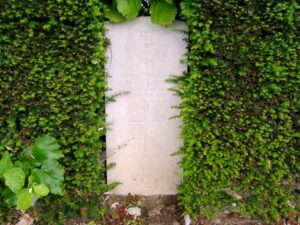
Edgar Adolphus Haselden, Second Lieutenant, West Yorkshire Regiment. Edgar was the son of George Thomas and Mary Ann Maria Haselden, of 90, Elgin Avenue, Maida Hill, London. He trained at Trinity College, Carmarthen. Edgar was commissioned into the West Yorkshire Regiment, and was posted to France on 30 March 1916, where he joined the 11th Battalion, West Yorkshire Regiment, which was attached to 69 Brigade, 23rd Division. They saw their first major action at the Battle of Albert, where they captured Contalmaison. Edgar was wounded here on 4 July, and died in the Casualty Clearing Station at Heilly on 11 July 1916. He was 33 years old, and is buried at Heilly Station Cemetery, Mericourt-L’Abbe, France.
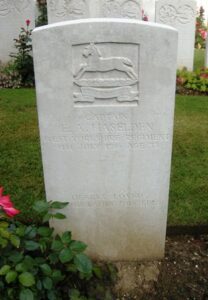
Kirk Hearder, Sergeant, 790, Monmouthshire Regiment. Kirk was born on 9 June 1883, the son of Dr. George Jonathan Hearder and Mrs. Marie Hearder, of 4, Picton Place, Carmarthen. He married Mary Louisa Weights, a Postmistress, at Newport in 1912, and the couple then lived at 83, Clevedon Road, Weston-super-Mare. Kirk was a Clerk at the National Provincial Bank at Newport, and enlisted there into the 1st Battalion, Monmouth Regiment, which were at Stow Hill, Newport as part of the Welsh Border Brigade, Welsh Division. During February 1915 the Battalion left the Welsh Division and landed in France on 13 February, attached to 84 Brigade, 28th Division. The Division saw its first major action at First Ypres in 1914. It was during the Second Battle of Ypres, that Kirk was killed in action, during the Battle of Frezenberg, on 8 May 1915. He was 31 years old, and is commemorated on the Ypres (Menin Gate) Memorial, Belgium. His brother, Major Dixon Hearder, served with the 11th Battalion, Australian Imperial Force.
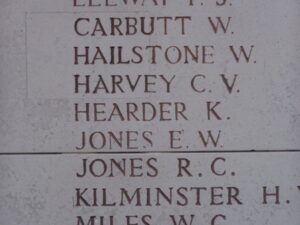
Percy Ward Heaven, Private, 4300, Welsh Regiment. Percy was the son of John and Lucy Heaven, of Bath Road, Stroud, Glos. He married Mary Jane Jones at Newtown in 1908, and the couple then moved to 5, Southern Terrace, Carmarthen. Percy worked at the New Dinant Colliery, at Tumble. He enlisted at Carmarthen into the 1/4th Battalion, Welsh Regiment, which was the local Territorial Battalion, attached to 159 Brigade, 53rd (Welsh) Division. The Division landed at Cape Helles, Gallipoli, on 9 August 1915, and was immediately thrown into action, spending the next few days in isolated pockets, fighting against a Turkish counter-attack during the Battle of Sari Bair, and then at the Attack on Scimitar Hill. Percy was one of many local men killed here on 10 August 1915. He was 26 years old, and is commemorated on the Helles Memorial, Gallipoli. His widow and their four young children later resided at 16, Brook Street, Llanidloes, Mont.
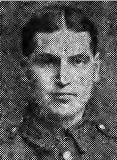
John William Hebb, Private, 235388, West Riding Regiment. John was born at Grantham in 1881, the son of John William and Mary Anne Hebb. He married Mary Sarah James at Carmarthen in 1907, and the couple set up home at 1, Waterloo Terrace, Carmarthen. John enlisted at Chesterfield into the army, and was posted to the 10th Battalion, West Riding Regiment, which was attached to 69 Brigade, 23rd Division. They saw their first major action at the Battle of Albert, where they captured Contalmaison, and then fought at the Battle of Bazentin, the Battle of Pozières, the Battle of Flers-Courcelette, the Battle of Morval and the Battle of Le Transloy, where they captured Le Sars. In May, 1917 they took part in the Battle of Messines, before moving further north to Ypres, and fighting at the Battle of the Menin Road. John was killed here on 20 September 1917, aged 36. He is commemorated on the Tyne Cot Memorial, Belgium. John is not commemorated locally.
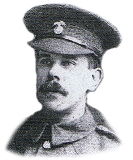
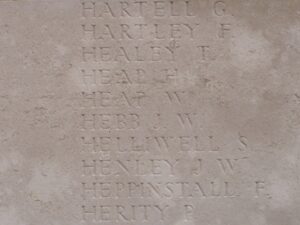
Herbert George Hill, Sick Berth Steward, 351649, Royal Navy. Herbert was born on 9 September 1888, the son of George and Emily Jane Hill, of the Hospital, Picton Place, Carmarthen. He had enlisted into the Royal Navy around 1910, and lived with his wife, Gertrude Louisa Hill (nee Ayling), at Melita, 34, St. Thomas Road, Hardway, Gosport. Herbert served aboard HMS Invincible, which saw plenty of action during the war, fighting at the Battle of Heligoland Bight and the Battle of the Falkland Islands. She was the flagship of the Third Battlecruiser Squadron at the Battle of Jutland on 31 May 1916, when she was attacked by the German Battleships Lützow and Derfflinger, which fired three salvoes each at Invincible and sank her in 90 seconds, with the loss of 1,026 crew. Herbert was one of the dead. He was 28 years old, and is commemorated on the Portsmouth Naval Memorial, Hampshire. Herbert is not listed on the County War Memorial roll.
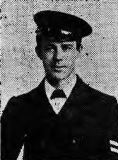
William Pugh Hinds, Lieutenant, Royal Welsh Fusiliers. William was the only son of John Hinds, M.P., and Elizabeth Hinds (nee Powell), of of Neuadd-Deg, Carmarthen, and Blackheath Park. On 1 November 1914 William secured a commission into the 15th Battalion, Royal Welsh Fusiliers, which had been raised as the London Welsh Battalion of the Welsh Army Corps. It moved to France in December 1915 as part of 113 Brigade, 38th (Welsh) Division, and took up positions in the line near Fleurbaix. On 30 January 1916 the 15th RWF were in the trenches at the Boars Head, when William was hit in the head by a sniper, while at No. 2 Post, and fell unconscious to the floor. His men managed to get their revenge on the German, who was killed later that day, but the unconscious William was carried to the Dressing Station at Merville, where he died on 2 February 1916, becoming the first officer casualty of the battalion. While lying in hospital, David Lloyd George paid a visit to check on the young officer, and wrote back to his father, expressing his sympathies. William was 19 years old, and is buried at Merville Communal Cemetery, France.
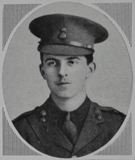
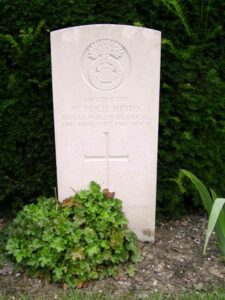
Thomas Hinton, Sapper, 448314, Royal Engineers. Thomas was the son of Tom and Harriet Mary Hinton, of Ewelme, Oxon. He married Mary Elizabeth Morgan, of 34, St. David’s Street, Carmarthen in 1916. He had enlisted at Carmarthen into the Welsh Field Company, and had served with them at Gallipoli before transferring into the 46th H.A.G. Brigade, Signal Sub-Section of the Royal Engineers, and moved to the Western Front. Thomas was wounded during the Kaiserschlacht, The Battle of Hazebrouck. He died on 16 April 1918, aged 28, and is buried at Ebblinghem Military Cemetery, France.
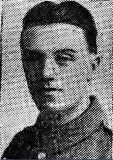
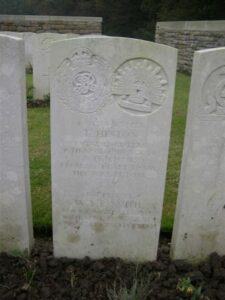
John Graham Parry Horsman, Private, 3152, Australian Imperial Force. John was born at Carmarthen in 1870, the son of Thomas Parry Horsman, and of Elizabeth Horsman (nee Phillips). He had emigrated to Australia with his family prior to the war, and enlisted at Brisbane on 24 November 1916 into the 8th reinforcements of the 47th Battalion, Australian Infantry. He embarked at Sydney on 22 December 1916 aboard HMAT Demosthenes, and arrived at Plymouth on 3 March 1917. He went to France on 14 June 1917, and was taken on strength by the 47th Battalion, AIF on 9 July 1917. The battalion was at Ypres, attached to the 12th Australian Brigade, 3rd Australian Division. Sadly, John was killed just weeks later, during the First Battle of Passchendaele, on 12 October 1917. A mate of his had found him submerged in mud on the battlefield, and had pulled him out, but left him in a weakened state, with a wounded jaw, to find his own way back to the lines. John was never heard from again. He was 47 years old, and is commemorated on the Ypres (Menin Gate) Memorial, Belgium. John is not commemorated locally.
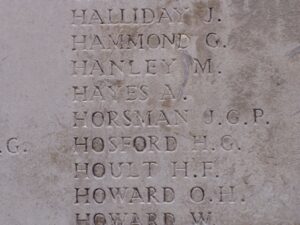
Arthur Ewart Howells, Private, 227534, Monmouthshire Regiment. Arthur was the son of Mary Sarah Howells, of 10, Jacksons Lane, Carmarthen, later of 4, Parade Road, Carmarthen. He worked at Star Supply Stores at Carmarthen and Pembroke Dock prior to the war. He enlisted on 15 November 1916 into the Monmouth Regiment, and on 19 November 1916 was posted to France, joining the 1st Battalion, Monmouth Regiment, which was the Pioneer Battalion to the 46th (North Midland) Division. During March 1917 the Division followed the German Retreat to the Hindenburg Line, and then fought in the Battle of Arras, taking part in the Battle of Hill 70. It remained in this sector over the coming months. Arthur was reported as wounded and missing on 25 November 1917. He was later found by court of enquiry to have been killed on that date. Arthur was 21 years old and is commemorated on the Loos Memorial, France.

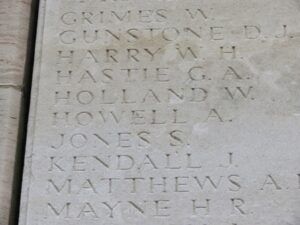
Harry Howells, Company Sergeant Major, 54246, Welsh Regiment. Harry was the son of William and Susannah Howells, of 7, John Street, Carmarthen. He was one of the early volunteers who joined the Carmarthen Pals, the 15th Battalion, Welsh Regiment, which trained at Rhyl before moving to Winchester as part of 114 Brigade, 38th (Welsh) Division. The Division landed in France in December 1915, and were sent to positions around Fleurbaix for familiarisation. In June 1916 the Division marched to the Somme, where it took part in the capture of Mametz Wood. Harry was wounded at Mametz, and sent home to recuperate. He rejoined the battalion at Boesinghe, and soon became promoted CSM. On 26 May 1917, the battalion was in support at the Canal Bank, and Harry was supervising a wiring party, when he was shot in the leg. He was brought to the Canadian Casualty Clearing Station at Mendinghem for treatment, but had to have his leg amputated, and died there on 5 June 1917. He was 23 years old, and is buried at Mendinghem Military Cemetery, Belgium.

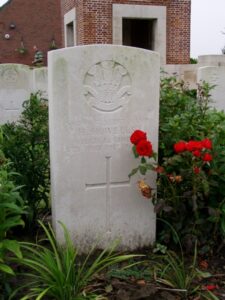
Henry George Howells, Rifleman, 1976, Royal Irish Rifles. Henry was born at Kidwelly in 1896, the son of George and Sarah Ann Howells. The family lived at 7, Francis Terrace for over ten years prior to moving to Pontardawe, and Henry enlisted there into the Welsh regiment. He was then posted to the 6th Battalion, Royal Irish Rifles, which was attached to 29 Brigade, 10th (Irish) Division. The Division embarked at Liverpool on 9 July 1915, and on 6 August 1915 landed on Gallipoli at Suvla Bay, less 29 Brigade, which went to ANZAC Cove. At the end of September the Division evacuated to Mudros, and moved to Salonika, landing there from 5 October 1915. On 18 August 1917 the Division was ordered to concentrate at Salonika for embarkation, and moved to Egypt by 16 October 1917. The Division was then involved in the Palestine campaign. Henry was wounded in Palestine, and died at Jerusalem on 17 June 1918, aged 22. He is buried at Jerusalem War Cemetery, Israel. Henry is not commemorated locally.

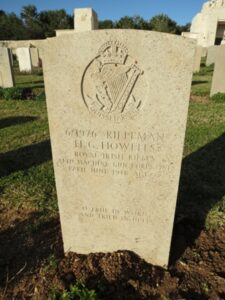
Frederick George Hughes, Private, 1934, Welsh Regiment. Frederick was born at Builth Road, Radnor, the son of Edward Morgan Hughes (Shipbroker), and Maria Hughes. The family moved to 4, Friar’s Park, Carmarthen prior to the war. Frederick had served for ten years with the Carmarthenshire Militia, and at the outbreak of war joined the 2nd Battalion, Welsh Regiment. The Battalion moved to France at the outbreak of war, attached to 3 Brigade, 1st Division, and had fought at the Battle of Mons, and took part in the retreat to the Marne, where the Germans were stopped. They then fought at the Aisne, and at Chivy, before being moved north to Ypres. Here they fought at the First Battle of Ypres, where they again stopped the German Offensive, before wintering in Flanders. The following year saw them in action again at the Battle of Aubers, before moving South to Loos, where they fought during the Battle of Loos, and the action at the Hohenzollern redoubt. Again they were required for a major offensive, moving south to the Somme, where they fought during the opening of the Somme Offensive. Frederick was severely wounded during the Battle of Pozieres, on 27 July 1916, and was brought back to Albert where he died that day. He was 39 years old, and is buried at Albert Communal Cemetery Extension, France.
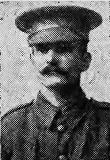
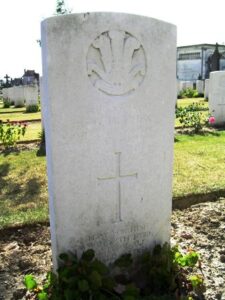
Lewis Hughes, Private, 808644, Canadian Infantry. Lewis was born on 29 October 1885, the son of Dr. William Lewis Hughes and Clementine Letitia Hughes, of 10, Spilman Street, Carmarthen. After his father died, the family moved to Enmore, Cirencester, Gloucester, where Lewis worked at the Capital and Counties Bank. He emigrated to Canada to work as a farmer in 1911, but felt the draw to enlist in the army too strong, so on 18 February 1916 he joined the Canadian Expeditionary Force at Calgary. Lewis was posted to the 31st Battalion (Alberta) upon his arrival in France on 21 January 1917, which was part of the 6th Brigade, 2nd Canadian Division. Lewis fought at the famous Battle of Vimy Ridge in April 1917, and was wounded during the attack. He spent several months in hospital before rejoining his battalion at Ypres, where they took part in the Second Battle of Passchendaele, successfully capturing the village. He was killed at Passchendaele on 6 November 1917, aged 32, and is buried at Passchendaele New British Cemetery, Belgium.
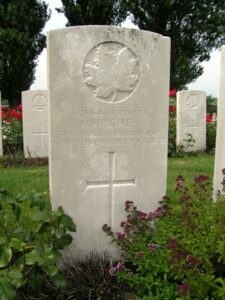
William Hughes, Private, 33853, Welsh Regiment. William was born in Llanelli, the son of William and Elizabeth Hughes. His father moved the family to Mill Street, Carmarthen, where he ran his own plastering business. William was married, and worked in the Rhondda Valley, and enlisted at Cardiff. He was posted to the 9th Battalion, Welsh Regiment, which was attached to 58 Brigade, 19th (Western) Division, and moved to France during July 1915. They saw their first action at the Battle of Loos in September 1915 and remained in the area for the next few months, before moving to the Somme in 1916. Here they were to take part in the follow up assault on the German front line at La Boiselle, where the giant mine crater was blown at 7.30 on the morning of 1 July 1916, and the 9th Welsh attacked as the second wave at La Boiselle. William was killed in action on that first day of the Battle of the Somme, on 1 July 1916, aged 41. His body was lost during the subsequent fighting over the area, and he is commemorated on the Thiepval Memorial, France.
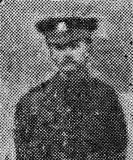
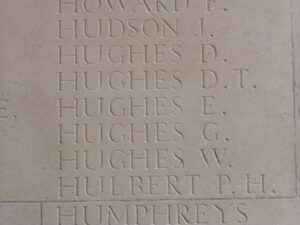
Charles Jenkins, Private, 4173, Welsh Regiment. Charles was the son of Sydney and Mary Ann Jenkins, of The Institution, Eastville, Bristol. He was living with David Hinds, a farmer, at St. Peters, Carmarthen prior to the war, where he worked as a Farm Labourer, before moving to Tumble, and working as a miner. Charles enlisted at Tumble into the 1/4th Battalion, Welsh Regiment, which was the local Territorial Battalion, attached to 159 Brigade, 53rd (Welsh) Division. The Division landed at Cape Helles, Gallipoli, on 9 August 1915, and was immediately thrown into action, spending the next few days in isolated pockets, fighting against a Turkish counter-attack during the Battle of Sari Bair, and then at the Attack on Scimitar Hill. He was killed here on 10 August 1915, aged 22, and commemorated on the Helles Memorial, Gallipoli.

David Benjamin Jenkins, Private, 26423, Royal Welsh Fusiliers. David was born at Carmarthen in 1888, the son of David and Mary Ann Jenkins. The family later resided at 23, Waters St., Briton Ferry. David enlisted at Neath on 9 August 1915 into the 17th Battalion, Royal Welsh Fusiliers, which was attached to 115 Brigade, 38th (Welsh) Division. The Division landed in France during December 1915 and had spent their first winter in the trenches near Armentieres. In June they marched south to the Somme, where they famously captured Mametz Wood. The Division suffered terrible casualties at Mametz, and were taken out of the line, and moved to Ypres to rebuild. Here they fought at the Battle of Pilckem Ridge, and the Battle of Langemarck. They then moved to Armentieres, where they remained from September 1917 until March 1918 when the German Spring Offensive was launched. By now David was attached to the 115th Light Trench Mortar Battery. He was killed in action during a spell in the trenches on 17 March 1918. David was 29 years old, and is buried at Erquinghem-Lys Churchyard Extension, France. David is not commemorated locally.
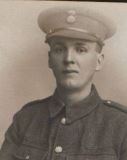
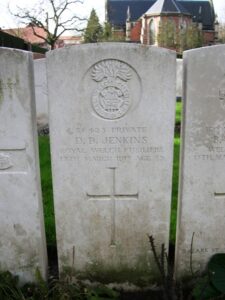
Oliver Jenkins, Stoker 1st Class, K/22735, Royal Navy. Oliver was born in Carmarthen on 29 March 1893, the son of Edward and Margaret Jenkins. The family later moved to 10, Gladys Street, Cathays, Cardiff. Oliver enlisted into the Royal Navy on 8 August 1911, and had been discharged prior to the war. He re-enlisted in August 1914 and was posted aboard the battle-cruiser HMS Indefatigable. She was commissioned in February 1911 and joined the 1st Cruiser squadron. She joined the 2nd battle Cruisers squadron in the Mediterranean at the outbreak of world war one in August took part in the pursuit of Goeben and Breslau and also bombarded Cape Helles. She became the Flagship of Admiral Carden in November 1914 until January 1915. After a refit at Malta she joined the Grand Fleet as part of the 2nd battle Cruiser Squadron and was sunk at Jutland by 11-inch shell fire from the German battleship SMS Van Der Tann. Official reports state she was hit by two shells in the X magazine causing her stagger out of formation sinking by the stern this was followed by another hit on the foredeck causing a much larger explosion which destroyed her. Oliver was killed when Indefatigable blew apart on 31 May 1916. He was 23 years old, and is commemorated on the Plymouth Naval Memorial, Devon. He does not appear to be commemorated locally.
Ralph Vincent Jennings, Private, 27348, Manchester Regiment. Ralph was born in Carmarthen in 1891, the son of James and Fanny Rachel Jennings. The family had moved to Manchester by 1901, and Ralph enlisted there on 17 November 1915 into the 1st Battalion, Manchester Regiment. At the outbreak of war, the battalion was at in Jullundur, India, attached to the 8th (Jullundur) Brigade, 3rd (Lahore) Division. The Division left India on 29 August 1914 as part of the Indian Corps and moved to France, landing at Marseilles on 26 September 1914. It served on the Western Front until leaving France on 10 December 1915, whereupon it moved to Mesopotamia, landing at Basra on 8 January 1916. Ralph embarked for India on 30 June 1916, and joined the battalion in Basra on 16 September 1916. He was killed during the Battle of Mohammed Abdul Hassan, on 9 January 1917. He was 26 years old, and is commemorated on the Basra Memorial, Iraq. Ralph is not commemorated on the County War Memorial roll.
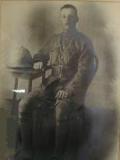
William Jeremy, Private, 56867, Welsh Regiment. William was the son of Stephen and Margaret Jeremy, of Park Lodge, Carmarthen. He enlisted at Carmarthen on 6 December 1915 into the Pembroke Yeomanry, seeing service in Ireland during the Easter rising at Dublin. On 1 September 1916 he transferred to the 13th Battalion, Welsh Regiment, which was attached to 114 Brigade, 38th (Welsh) Division, and had just moved to Boesinghe, after suffering heavy casualties at Mametz Wood in July. For most of March 1917 the 13th Welsh were in the trenches near the Canal Bank, where the Welsh Division had been ordered to carry out more night patrols. William was wounded at Boesinghe, and died of his wounds at 130th Field Ambulance on 27 March 1917, aged just 21. He is buried at Bard Cottage Cemetery, Belgium.
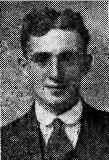
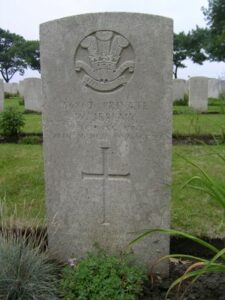
Thomas Jolley, Driver, 3836, Royal Field Artillery. Thomas was the son of Robert and Clarissa Elizabeth Jolley, of 7, Spa Terrace, Askern, Doncaster, Yorks. He had moved to 5, Church Street, Carmarthen several years prior to the war, and worked at the Ivy Bush Royal Hotel. Thomas enlisted at Carmarthen into the 38th Welsh Divisional Royal Field Artillery, and was posted to the 24th Reserve Welsh Battery. He became ill with pneumonia while in training at Swanage, and was discharged from the army as unfit, taking up employment in a munitions factory. Thomas became ill again though, and died of emphysema in Carmarthen Infirmary on 21 April 1917, aged 22. He was buried at Carmarthen Cemetery. Thomas is not commemorated on the County War Memorial roll.
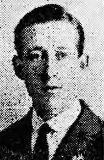
David Jones, Rifleman, 292, Rifle Brigade. David was the son of John and Frances Jones, of 18, Magazine Row, Carmarthen. He worked as a Postman at St. Clears prior to the war, and had served with the Army for several years prior to the war, having enlisted at Carmarthen. At the outbreak of war, he moved to France with the 1st Battalion, Rifle Brigade, part of 11 Brigade, 4th Division, and took part in the Battle of the Aisne. The Division then moved north to Ypres, where it took part in the First Battle of Ypres. David was killed in action whilst the Division was holding the line at Ploegsteert on 19 December 1914, aged 29. He is buried at Rifle House Cemetery inside Ploegsteert Wood. A letter was found in his tunic pocket, which was unfinished, and that he was going to send to Reverend Griffith Thomas, of St. David’s Church. This was forwarded on to his family after his burial, and told of his experiences at the front.
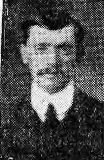
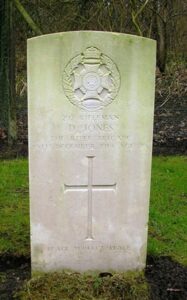
David Jones, Private, SE/14561, Royal Army Veterinary Corps. David was the son of David and Margaret Jones, of Caeuagwynion, Llangunnor. Very little is known of him, but he enlisted at Woolwich into the Royal Army Veterinary Corps. David died on home service on 7 March 1916. He was 33 years old, and is buried at Llangunnor (St. Cynwr) Churchyard. David is not named on the County War Memorial roll.
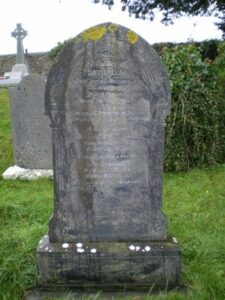
David George Jones, Private, 970, Welsh Regiment. David was the son of George and Sophia Jones, of 4, Shaws Lane, Carmarthen. He served prior to the war, having enlisted at Carmarthen into the 2nd Battalion, Welsh Regiment. The Battalion moved to France at the outbreak of war, attached to 3 Brigade, 1st Division, and had fought at the Battle of Mons, and the retreat to the Marne, where the Germans were stopped. They then fought at the Aisne, and at Chivy. David was killed in action at Chivy, during the same action that saw William Fuller of the 2nd Welsh win the first Welsh V.C. of the war, on 26 September 1914. His remains were never found, so David is commemorated on the La Ferte-Sous-Joarre Memorial, France. His brother John Daniel Jones also fell.
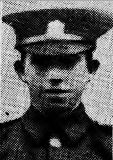
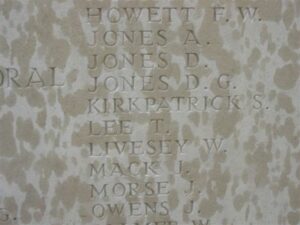
David Rees Jones, Gunner, 371088, Royal Garrison Artillery. David was the son of Thomas and Mary Jones, of Carmarthen. By 1911 the family had moved to 42, Plasygammil Road, Goodwick, and David enlisted at Fishguard into the Royal Garrison Artillery. He was posted to their 182nd Siege Battery in France. The battery had been in France since 28 September 1916, and had seen much action during the war. David was killed during the Battle of Albert, on 23 August 1918. He was 23 years old, and is buried at Bac-Du-Sud British Cemetery, Bailleulval, France.
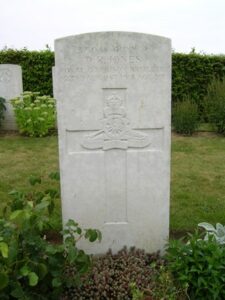
Edward Owen Jones, Lance Corporal, 2471, Royal Gloucester Hussars. Edward was the son of Robert Owen Jones and Elizabeth Jones, of Oak House, Carmarthen. He had studied at Carmarthen Grammar School and at the School of Art, gaining a post later as Art Master at Sir Thomas Richards School in Gloucester. In September 1914 Edward volunteered into the Royal Gloucester Hussars, which moved to Gallipoli in mid July 1915 attached to the Imperial Mounted Division. After two months at Suvla, they were evacuated to Egypt, and took part in operations against the Sultan of Darfur, which saw Edward being killed during a battle against Turkish troops on 23 April 1916. Edward was 29 years old, and like so many men who died during the fighting in the Middle East during the Great War, his grave could not be located, and so he is commemorated on the Jerusalem Memorial, Israel. His brother Frederick Walwyn Jones also fell.
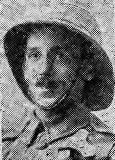
Evan Richard Jones, Private, 320242, Welsh Regiment. Evan was the son of Evan J. Jones and Anne Jones, of 3, Spring Gardens, Trefechan, Aberystwyth. He lived at Carmarthen prior to the war, and enlisted there into the Pembroke Yeomanry. During March 1916 the 1/1st Pembroke Yeomanry moved to Egypt, where it merged with the Welsh Border Mounted Brigade and formed the 4th Dismounted Brigade. On 2 February 1917 it merged with the 1/1st Glamorgan Yeomanry to form the 24th Battalion, Welsh Regiment, and became attached to 231 Brigade, 74th (Yeomanry) Division. The Division had formed in Egypt in January 1917 and had fought through the Palestinian Campaign, at the Battles of Gaza and the Battle and capture of Jerusalem. Evan was killed during the Third Battle of Gaza, on 6 November 1917. He was 24 years old, and is buried at Beersheba War Cemetery, Israel. Photograph courtesy of Avril Marks.
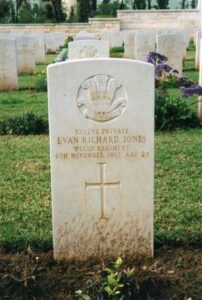
Fanny Irene Sprake Jones, Nurse, Queen Alexandrias Imperial Nursing Service. Fanny was the youngest daughter of Dr William Jones, ARCA London, and Mrs. Henrietta Jones of 7, Quay Street, Carmarthen. Little else is presently know of her, but she died on 11 July 1919, aged 36, and is not commemorated by the CWGC.
Frederick Charles Jones, Private, 1914, Welsh Guards. Frederick was son of John and Emiah Jones, and the Husband of Mary M. Jones, of 17, Margam Terrace, Port Talbot, late of 2, Gloucester Street, Aberdare. He was a nephew of Mrs Evans, of 11, St. Peter’s Street, Carmarthen, and of Councillor Morgan, of Blue Street, and enlisted at Carmarthen into the 1st Battalion, Welsh Guards upon their formation in February 1915. Frederick went to France in January 1916, where he joined the battalion, which was attached to the 3rd Guards Brigade, Guards Division. The Division moved to the Somme that summer, and took part in the Battle of Flers-Courcelette. Frederick was wounded at Flers, and died on 16 September 1916. He was 30 years old, and is buried at Corbie Communal Cemetery Extension, France. Frederick is not listed on the County War Memorial Roll.
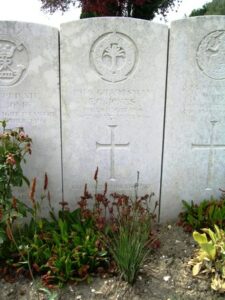
Frederick Walwyn Jones, Gunner, 696305, Royal Field Artillery. Frederick was born in Carmarthen on 24 July 1890, the son of Robert Owen Jones, later of the Bath Hotel, Folkestone. He was educated at Carmarthen grammar School, and had married Sybil Byers at Southgate Church, London, on 6 April 1915. Frederick enlisted at Finchley in Middlesex into the Royal Field Artillery in November 1916. He was posted to ‘A’ Battery, 298th Brigade, who were attached to the 58th (2/1st London) Division. The Division moved to France by February 1917, and followed the German Retreat to the Hindenburg Line in March. They then took part in the Flanking Operations Round Bullecourt. Later that year they moved north to Ypres, and took part in the Battle of the Menin Road, the Battle of Polygon Wood and the Second Battle of Passchendaele. Frederick was killed in action at this time, on 29 November 1917. He is buried at Vlamertinghe New Military Cemetery, Belgium. His brother, Edward Owen Jones, also fell.
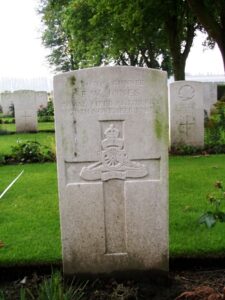
Henry Jones, Private, G/3774, Royal West Kent Regiment. Henry was the son of Mr. and Mrs. Jones, of 6, Fountain Hall Terrace, Carmarthen. The family moved to Coronation Terrace, Nantyfyllon prior to the war, and Henry enlisted at Pentre into the army. Henry was posted to France where he joined the 1st Battalion, Royal West Kent Regiment, which was attached to 13 Brigade, 5th Division, joining the battalion at Ypres in January 1915. The Division had fought here through First Ypres, and took part in the capture of Hill 60, before taking part in the Second Battle of Ypres in April 1915. March 1916 saw the Division moving to positions between St. Laurent-Blangy and Vimy, near Arras, and the Division saw plenty of action during its spell here. On the morning of 23 May 1916, Henry was with seven comrades, when they were overcome with gas, after the Germans shelled the area. He died later that day, and was buried with full military honours at a small cemetery near Arras. Henry was 31 years old. His grave was lost during further fighting in the area, so Henry is commemorated on the Arras Memorial, France.
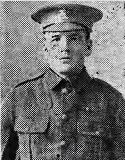
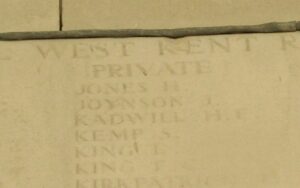
J. Jones, Private. This man is listed on the Carmarthen County War Memorial Roll, but cannot presently be identified.
J. Jones, Sergeant. This man is listed on the Carmarthen County War Memorial Roll, but cannot presently be identified.
John Jones, Private, 355164, Royal Welsh Fusiliers. John was the son of David and Mary Jones, of Dussil House, Spilman Street, Carmarthen. He enlisted at Llandrindod Wells on 28 April 1914 into the Montgomery Yeomanry, and went to Egypt with them in March 1916. After a year on the Suez Canal defences, the Montgomery Yeomanry and the Welsh Horse merged to form the 25th Battalion, Royal Welsh Fusiliers, and became attached to 231 Brigade, 74th (Yeomanry) Division. The Division took part in the advance into Palestine, and John saw action at the Second and Third Battles of Gaza, and the capture of Jerusalem in 1917. Due to the terrible casualties suffered by the British on the Western Front in March and April 1918 the Division was recalled to the Western Front, and arrived at Marseilles during May 1918. They then fought at the Second Battle of Bapaume during the great offensive, and fought in Flanders before returning to the Somme and fighting at the Battle of Épehy, as part of the offensive towards the Hindenburg Line. John was killed near Gillemont Farm on 21 September 1918. He was 22 years old, and is buried at Unicorn Cemetery, Vendhuile, France.
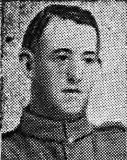
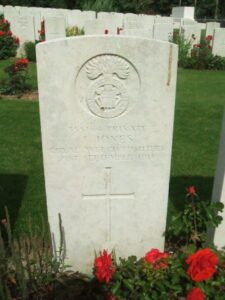
John Jones, Private, 368134, Royal Army Medical Corps. John was the son of Richard and Mary Jones, of Cwmffrwduchaf, Carmarthen. He enlisted at Swansea on 20 October 1914 into the 3rd Welsh Field Ambulance, Royal Army Medical Corps, which was attached to the 53rd (Welsh) Division. He did not embark for Gallipoli with the division in 1915 however, rand remained in Britain for almost three years. John was posted to France on 4 August 1917, and served there on Lines of Communication with the 2/3rd London Field Ambulance for just three months before returning to Britain after injuring his knee. He died on 14 February 1918, aged 22, and is buried at Merthyr (Cana) Congregational Chapelyard, Wales.
John Daniel Jones, Private, 1210, Welsh Regiment. John was the son of George and Sophia Jones, of 4, Shaws Lane, Carmarthen. He enlisted at Carmarthen into the 1st Battalion, Welsh Regiment, who were stationed in India at the outbreak of war. They were rushed back to the UK, where they joined 84 Brigade, 28th Division and landed at Havre on 18 January 1915. They moved into positions near Ypres, where they took part in the Second Battle of Ypres, and remained here during the following months, defending the Salient against further German attacks. John was killed in action at Ypres on 5 September 1915. He was only 18 years old, and is buried at Kemmel Chateau Military Cemetery, Belgium. His brother David George Jones also fell.

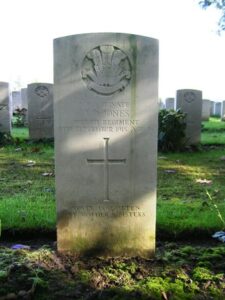
John Ernest Jones, Lance Corporal, 39780, Welsh Regiment. John was the son of George Jones, of 19, Parade Road, Carmarthen. He enlisted there into the Welsh Regiment, being posted to their 8th Battalion (Pioneers), attached to 40 Brigade, 13th (Western) Division. On 13 June 1915 the first transports carrying the Division left port, and moved to Alexandria, and landed at Cape Helles, Gallipoli, between 6 and 16 July 1915, relieving the 29th Division. They were were evacuated to Egypt on 8 January 1916, and concentrated at Port Said, where they held forward posts in the Suez Canal defences. On 12 February 1916 the Division began to move to Mesopotamia, to strengthen the force being assembled for the relief of the besieged garrison at Kut al Amara, coming under orders of the Tigris Corps, and took part in the attempts to relieve Kut. However these efforts failed, and Kut fell, so the British force in the theatre was built up and reorganised. John was one of the many men of the Division who fell ill during the epic advance through the desert, and he died of fever as a result on 3 July 1916. He was 24 years old, and is buried at Amara War Cemetery, Iraq.

Moses Jones, Private, 320224, Welsh Regiment. Moses was born at Llanfynydd, the son of Moses and Harriet Jones, and later moved with his parents to 75, Water Street, Carmarthen, where he worked as a Painter and Decorator. Moses married Hannah Jeremy in 1902, and the couple had two children. He had joined the Pembroke Yeomanry prior to the outbreak of war. In March 1916 Moses sailed for Egypt with the Yeomanry, and spent the next twelve months fighting against Senussi Tribesmen in Egypt. In March 1917 the Pembroke and Glamorgan Yeomanry merged to form the 24th Battalion (Pembroke and Glamorgan Yeomanry), Welsh Regiment, which became attached to 231 Brigade, 74th (Yeomanry) Division. The Division took part in the Palestinian campaign, and it was here, during the Third Battle of Gaza, that Moses was killed on 6 November 1917. Moses was 37 years old, and is commemorated on the Jerusalem Memorial, Israel.

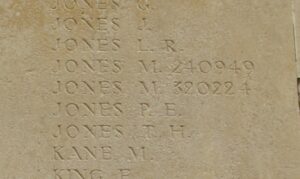
Robert Jones, Gunner, W4445, Royal Field Artillery. Robert was the son of Thomas and Catherine Jones, of Railway Street, Adamstown, New South Wales. He was living in South Wales prior to the war, and enlisted at Cardiff into the Welsh Divisional Royal Field Artillery. He was sent to France to join ‘D’ Battery, 74th Brigade, RFA, which was attached to the Guards Division. The Division was situated to the left of the 38th (Welsh) Division at Boesinghe, when Robert was killed, during counter-battery work, on 26 July 1917, aged 29. He is buried at Poperinghe New Military Cemetery, Belgium. (The County Roll shows R Jones, RFA, and this is the only man who is anywhere near to matching).
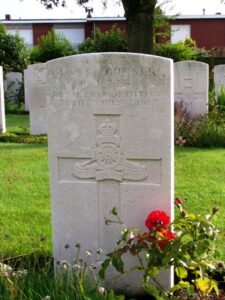
Robert John Howells Jones, Sergeant, 54560, Welsh Regiment. Robert was the son of John and Jane Jones, of Glanmorlais, Spilman Street, Carmarthen. He originally served with the Pembroke Yeomanry, before being sent to France, where he joined the 13th Battalion, Welsh Regiment, which was attached to 114 Brigade, 38th (Welsh) Division. Robert probably joined the battalion at Boesinghe in 1916, after it had been pulled out of Mametz Wood in July. He would have taken part in the famous capture of the Pilckem Ridge on 31 July 1917, and moved with the battalion the following month, when it was sent to positions near Armentieres to rebuild. In April 1918 the Division was sent to positions north of Albert, on the Somme, and it held these positions until it took part in the great advance across the old Somme Battlefields from 21 August 1918. Robert was to have returned home after being granted a commission, but was fatally wounded during the attempt to take Morval, and died on 4 September 1918. He was 27 years old, and is buried at Varennes Military Cemetery, France.
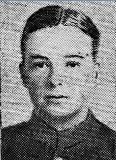
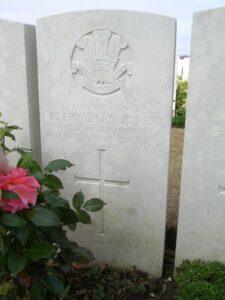
Seymour Cadvan Jones, Sergeant, 182, Australian Imperial Force. Seymour was the son of David and Margaret Jones, of Cash Boot Stores, Hall Street, Carmarthen. Seymour emigrated to Australia from London, but when war erupted, volunteered at Rosehill, NSW to serve with the 13th Battalion, Australian Infantry on 27 September 1914. On 22 December 1914 Seymour embarked at Melbourne with the battalion, and moved to Egypt. The battalion landed at Anzac Cove on 25 April 1915, and took part in heavy fighting. On 20 May 1915 Seymour was evacuated sick, spending several months in and out of hospital with various ailments. He landed in France on 8 June 1916, but was soon in Hospital in England. Finally on 19 January 1917 Seymour returned to duty, joining the 45th Battalion, which was still on the Somme, attached to the 3rd Australian Division. On 21 February 1917 a party of the battalion attacked the German lines opposite Stormy Trench, near Gueudecourt, promoting a heavy bombardment on their positions by the Germans. Seymour was killed during the bombardment. He was 29 years old, and is commemorated on the Villers Brettoneaux Memorial, France. Seymour is not listed on the County War Memorial roll.

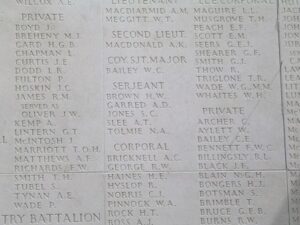
Thomas Jones, Private, 16337, Somerset Light Infantry. Thomas was the son of David and Hannah Jones, of 1, John Street, Carmarthen. He joined the Dorset Regiment at Tonypandy at the outbreak of war, and was posted to France in May 1915, where he was transferred to the 6th Battalion, Somerset Light Infantry. The battalion was attached to 43 Brigade, 14th (Light) Division, and was in positions at Hooge. Thomas was killed at Hooge on 25 September 1915. He was 28 years old, and is commemorated on the Ypres (Menin Gate) Memorial, Belgium.

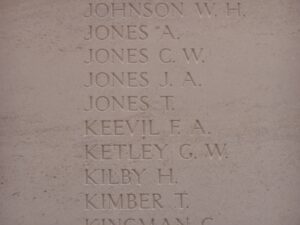
Thomas Jones, Private, 33328, King’s Liverpool Regiment. Thomas was born at Everton in 1874. He enlisted at Salford on 4 September 1914 into the 4th Battalion Lancashire Fusiliers. On 4 November 1915 he was transferred to the 2nd Garrison Battalion, King’s Liverpool Regiment. He became ill, and was discharged from the army as medically unfit on 17 January 1916 after suffering a series of epileptic fits and being diagnosed with dementia. Thomas died at Carmarthen on 26 February 1916, aged 42, and is buried at Carmarthen Cemetery. Nothing more is known of him, and he does not seem to be commemorated locally. His effects were sent to his sister, Mrs Mary Gray, at 69, Chepstow Street, Walton, Liverpool.
Thomas Jones, Sapper, 448578, Royal Engineers. Thomas was the son of Margaret Jones, of 9, Parcmaen Street, Carmarthen. He served with the Welsh Field Company Royal Engineers, which was attached to the 53rd (Welsh) Division, and took part in the Gallipoli campaign before the Division moved to Egypt. The Welsh Field Company was then renamed the 437th Field Company, and took part into the advance into Palestine in 1917. Thomas became ill, and died of malaria on 17 October 1918. He was 34 years old, and is buried at Alexandria (Hadra) War Memorial Cemetery, Egypt.
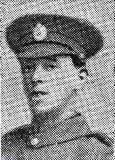
Thomas Arthur Jones, Private, 38219, Welsh Regiment. Thomas was the son of Thomas and Sarah Jones, of 62, Little Water Street, Carmarthen. He originally served with the 5th Lancers, before being posted to the 2nd Battalion, Welsh Regiment, possibly after having been wounded during the retreat from Mons to the Marne. The 2nd Welsh was in France attached to 3 Brigade, 1st Division. Thomas would have joined the battalion at Loos, and was killed in action during the Battle of Loos, on 28 November 1915. He was 24 years old, and is commemorated on the Loos Memorial, France. Thomas seems to be shown as Driver A. Jones on the County War Memorial roll.

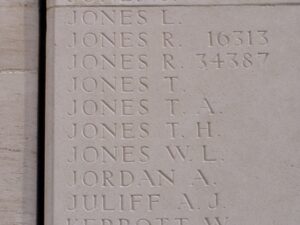
Thomas Elwyn Jones, BSc, Naval Instructor, Royal Navy. Thomas was the son of Rev. Samuel Thomas Jones and Mary Jones, of Rhyl. He was Maths Master and Drill Instructor at Carmarthen Grammar School prior to the war. He left the Grammar School after three years service, in July 1915 to serve with the Royal Navy. He was appointed Naval Instructor aboard HMS Defence, a Minotaur Class Armoured Cruiser, which had been built at Pembroke Dock. During the Battle of Jutland on 31 May 1916, she was the flagship of Rear-Admiral Sir Robert Arbuthnot, leading the First Cruiser Squadron. Escorting the main body of the Grand Fleet, Defence was fired upon by one German battle-cruiser (SMS Derfflinger) and four dreadnoughts as she attempted to engage a disable German light cruiser, the SMS Wiesbaden. Defence exploded, and sank within fifteen minutes, with the loss of around 900 men. Thomas was 26 years old when he died in the explosion, and is commemorated on the Plymouth Naval Memorial, Devon.
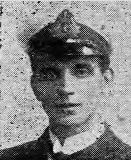
Thomas Penry Jones, Private, 83826, Machine Gun Corps (Infantry). Thomas was born at Carmarthen, possibly in 1889, the son of John and Sarah Jones. The family had moved to 109, Larkhall Lane, Clapham, London prior to 1911, and Thomas enlisted at Wandsworth into the East Surrey Regiment on 27 January 1916. On 30 January 1917 he was transferred to the 272nd Company, Machine Gun Corps, which was attached to XIX Corps. The Corps fought in the Mesopotamian Campaign. On 4 December 1917, Thomas was found dead, with his throat cut, at Magil Camp. A subsequent court of enquiry discounted reports of him being murdered by Arab horse thieves, and gave a verdict of suicide. Thomas was 28 years old, and is buried at Basra War Cemetery, Iraq. He is not commemorated locally.
W. Jones, Private. This man is listed on the Carmarthen County War Memorial Roll, but cannot presently be identified.
William Anthony Jones, Private, 56883, Royal Welsh Fusiliers. William was the son of David and Jane Jones, of The Black Lion Inn, Cwmffrwd, Carmarthen. He enlisted at London into the Welsh Regiment, and later transferred into the 14th Battalion, Royal Welsh Fusiliers, who were attached to 113 Brigade, 38th (Welsh) Division. The Division had landed in France during December 1915 and had spent their first winter in the trenches near Armentieres. In June they marched south to the Somme, where they were tasked with the capture of Mametz Wood. The attack on the wood began on 7 July 1916, but met with fierce resistance, and it took almost a week to clear the wood. The Division suffered terrible casualties at Mametz, and were taken out of the line, and moved to Ypres to rebuild, and William was killed in action here on 1 October 1916. He was 22 years old, and is buried at Essex Farm Cemetery, Belgium.
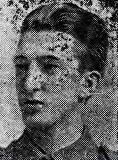
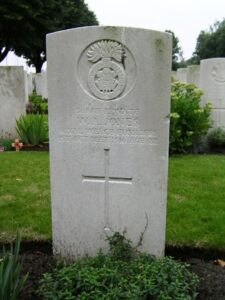
William James Jones, Private, 65190, South Wales Borderers. William was the son of Thomas and Mary Jane Jones, of 6, Chapel Street, Carmarthen. He enlisted in August 1914, but was discharged as unfit after nine months service. He was called up again in May 1916, after the lowering of the medical standards, and joined a Labour Company before transferring to the 3rd Battalion, South Wales Borderers. William took ill around the time of the Armistice, and was sent to Stanley Hospital at Liverpool. He died there of emphysema on 3 January 1919, aged 25, and was brought home for burial at Carmarthen (Tabernacle) Baptist Chapelyard.
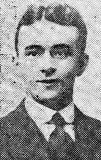
Thomas John Joshua, Private, 200403, Welsh Regiment. Thomas was the son of William and Mary Anne Joshua, of 19, Quay Street, Carmarthen. He enlisted at the outbreak of war into the 9th Welsh, but was discharged as being unfit. He re-enlisted, and joined the 4th Battalion, Welsh Regiment, stationed at Penally Camp. On the night of 26 January 1917, Thomas and a friend, Private Edward Alcroft, were returning from a night out in Tenby, and were walking along the railway line to Penally Camp when they were struck by a train. Thomas was killed instantaneously, while Edward clung onto life for several days before passing away. Thomas was 21 years old, and is buried at Carmarthen (Water Street) Calvinistic Methodist Burial Ground.

Archibald Walter Kettley, Private, 39521, South Wales Borderers. Archibald was the son of John and Mary Kettley, of 24, Parcmain Street, Carmarthen. He enlisted at Abertillery into the Monmouth Regiment, but later transferred into the 2nd Battalion, South Wales Borderers. The Battalion had begun the war in China, and had defeated the German garrison at Tientsin, before taking part in the Gallipoli campaign, attached to 87 Brigade, 29th Division. They remained there until evacuation to Egypt on 11 January 1916 and then moved to the Western Front on 15 March 1916. The Division took part in its first major action in France during the 1916 Somme Offensive, and fought at the Battles of Albert and Le Transloy, suffering heavy casualties. In the spring of 1917 they fought at the Battle of the Scarpe, which was part of the Arras Offensive, and then moved further north to Ypres. Here they fought at the Battle of Langemarck, and this is where Archibald was killed in action on 16 August 1917. He was 28 years old, and is commemorated on the Tyne Cot Memorial, Belgium.


David King, Second Lieutenant, Royal Welsh Fusiliers. David was the son of William and Elizabeth King, of Frondeg, Carmarthen, and the Husband of Ethel Collins King (nee Davies), of Llwyncelyn, Picton Terrace, Carmarthen. He was a Solicitor at Carmarthen, practising at the family business of Ungoed-Thomas and King. He enlisted as a Private, but was soon commissioned, and joined the 15th Battalion, Royal Welsh Fusiliers. The battalion was raised as the London Welsh Battalion, and was in France attached to 113 Brigade, 38th (Welsh) Division. David probably fought with the Division at Mametz Wood in July 1916. He moved with the Division to Boesinghe, where they took up positions along the Canal Bank. On 31 July 1917, 113 Brigade was allocated the left of the 38th Divisions line, and were to assault positions at Pilckem Ridge, which had been marked on trench maps as the Green Line. David was killed during stubborn fighting near Battery Copse on 31 July 1917. He was 32 years old, and is commemorated on the Ypres (Menin Gate) Memorial, Belgium.

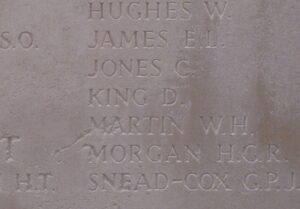
Samuel Collis Lane, Private, 9874, Somerset Light Infantry. Samuel was the son of Samuel and Mary Lane, of 7, Spring Gardens, Carmarthen. He worked as a collier at Porth, and enlisted at Pontypridd into the army just a few days prior to the outbreak of war, and went to France after two weeks training, with the 1st Battalion, Somerset Light Infantry. Samuel took part in the retreat from Mons to the Marne, where he was slightly wounded. He moved with the battalion to Ypres, and was gassed on 22 April 1915, at the Second Battle of Ypres. After recovering, Samuel was posted back to France with the 6th Battalion, Somerset Light Infantry, which moved to the Western Front attached to 43 Brigade, 14th (Light) Division, and moved to positions at Hooge, ground which Samuel knew well from the months before. Samuel came through the horrific German flamethrower attacks on the 14th Division in July 1915, and the following year the Division moved to the Somme. Samuel was killed during the Battle of Flers-Courcelette, on 16 September 1916. He was 24 years old, and is commemorated on the Thiepval Memorial, France. His step-brother, Patrick Sullivan, also fell.
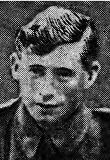
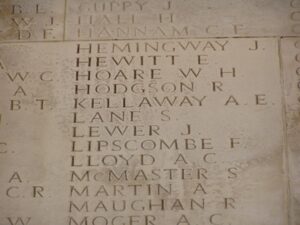
William Lyttleton Lawrence, DSO, MID, Major, South Wales Borderers. William was born on 4 September 1873, the son of Arthur Garnons Lawrence, and Edmundtina Lawrence (nee Snead), of The Cedars, Chepstow. His father was originally from Carmarthen, and William was well known in the town, spending many of his holidays there visiting family. He was gazetted to the 2nd Battalion, South Wales Borderers in July 1893, becoming Lieutenant in January 1896, and Captain in September 1904, when he became Adjutant of the battalion, and in December 1907, was appointed A.D.D. to a Divisional Commander in India. He then joined the 1st Battalion, South Wales Borderers, which embarked for France in August 1914 attached to 3 Brigade, 1st Division, and took part in the epic retreat from Mons to the Marne. William was mentioned in Sir John French’s Despatch of 8 October 1914, but was killed in action during the Battle of Gheluveld on 31 October 1914, aged 41. He has no known grave, and is commemorated on the Ypres (Menin Gate) Memorial, Belgium. William was created a Companion of the Distinguished Service Order [London Gazette, 9 December 1914]: ‘William Lyttleton Lawrence, Major, 2nd Battn. The South Wales Borderers (deceased). For gallantry and ability in repelling the enemy on 28 Sept.’ William does not appear to be commemorated locally.
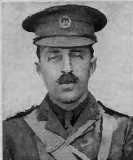
Brighty Thomas Lewis, Private, 201128, Welsh Regiment. Brighty was the son of David and Jane Lewis, of Carmarthen. In 1912 he married Florence Evans, of 47, Mill Street, Carmarthen. He enlisted at Carmarthen into the 1/4th Battalion, Welsh Regiment, which was the local Territorial Battalion, attached to 159 Brigade, 53rd (Welsh) Division. The Division landed at Cape Helles, Gallipoli, on 9 August 1915, and was immediately thrown into action, spending the next few days in isolated pockets, fighting against a Turkish counter-attack during the Battle of Sari Bair, and then at the Attack on Scimitar Hill. The Division remained here throughout the coming months, and suffered severe losses in manpower strength during the great November 1915 blizzard on Gallipoli, when its total strength was reduced to less than that of a full-strength Brigade. On 11 December 1915 the Division was evacuated to Mudros, and by 23 December 1915 were moved to Egypt. They remained on the Suez Canal Defences for the next twelve months, where it took part in operations against the Sultan of Darfur, and in March 1917 took part in the advance into Palestine. Brighty served throughout the war, and returned home safely, but like many other men of the Division was sadly to suffer from illness as a result of his time abroad. He died in Carmarthen on 22 February 1919, aged 28. Brighty is buried at Carmarthen (St. David) Churchyard.
David Lewis, Private, 13098, Welsh Regiment. David was the son of Hannah Lewis, of 50, Richmond Terrace, Carmarthen. He enlisted at the outbreak of war into the 1st Welsh, but was sent to France with the 2nd Battalion, Welsh Regiment, which was attached to 3 Brigade, 1st Division. He took part in the retreat from Mons to the Marne, and then during the First and Second Battles of Ypres. The Division then moved to the Loos sector, and took part in the Battle of Loos, which was launched on 25 September 1915. David was posted as missing, believed killed, on 2 October 1915, during an attack on the Hohenzollern Redoubt, near Loos. He was 35 years old. No trace of him was ever found, so David is commemorated on the Loos Memorial, France.

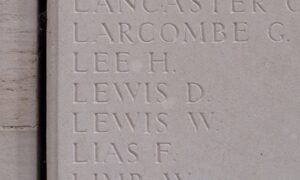
David George Lewis, Corporal, 19043, Welsh Regiment. David was born on 4 April 1887, the son of David and Ellen Lewis, of 83, Priory Street, Carmarthen. He worked in the Rhondda for the GWR prior to the war, and enlisted at Bargoed into the 13th Battalion, Welsh Regiment. The battalion trained at Rhyl, before moving to Winchester in 1915 as part of 114 Brigade, 38th (Welsh) Division, and the entire Division moved to France in the first week of December 1915. After several months familiarising itself with trench warfare in the Fleurbaix and Givenchy Sectors, the Division marched south to the Somme in June 1916. There it took part in the assault on the fortified German positions at Mametz Wood from 7 July 1916 onwards. David was killed in the wood on 10 July 1916, aged 29. His grave is one of a minority from the battle that was identified, and he is buried at Flatiron Copse Cemetery, Mametz, France. For some reason all of his military records show him as David Benjamin Lewis.
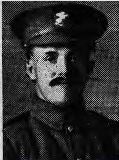
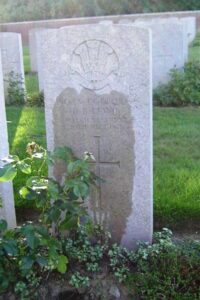
John Lewis, Fireman, Mercantile Marine. John was born at Carmarthen, the son of William and Elizabeth Lewis. He married Sarah Bragg at Swansea in 1889, and the couple resided at 37, Orange St., Swansea. John served in the Mercantile Marine, as a Fireman aboard the SS Cottingham. Cottingham famously became the first British Merchant ship to sink a German submarine, when she rammed the German UC-2 on 2 July 1915, and sent her to the bottom. On 26 December 1915, SS Cottingham was on a voyage from Rouen to Swansea in ballast, when she was sunk by gunfire from the German submarine U-24, 16 miles off Lundy Island. Seven of her crew were killed, including John. He was 60 years old, and is commemorated on the Tower Hill Memorial, London.
John Stuart Lewis, Private, 82947, Welsh Regiment. John was the son of Lewis Bishop Lewis and Mary Emma Lewis, of Redhill, Sketty, Swansea. He resided at Capel Dewi Hall, Carmarthen prior to the war, and enlisted at Carmarthen into the Pembroke Yeomanry on 3 October 1914. John was then posted to the 3rd Welsh, and was sent to France on 5 October 1916, joining the 18th Battalion, Welsh Regiment. Just two months later, John was posted back to the 3rd Welsh, and was discharged on 5 November 1917, suffering from bronchitis. John re-enlisted into the 7th Battalion, Welsh Regiment in August 1918, but died from pneumonia in the Middlesbrough Military Hospital on 14 October 1918, aged 29. He is buried at Swansea (Oystermouth) Cemetery. John is not commemorated at Carmarthen.
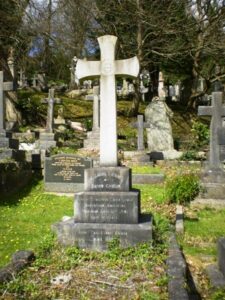
William Cooper Lewis, Private, 137, Welsh Horse. William was the son of William and Sophia Lewis, of Carmarthen. He married Rhoda Jane Edwards, of St. Catherine Street, Carmarthen in 1910. William enlisted at Cardiff into the 1/1st Battalion, Welsh Horse Yeomanry, which moved early 1915 to the 1/1st North Midland Mounted Brigade of 1st Mounted Division in the Diss area of Norfolk. During September 1915 the Battalion dismounted and sailed from Liverpool in the SS Olympic on 25 September, landing at Anzac Cove, Gallipoli on 10 October 1915. The Welsh Horse were utilised as miners during their stint at Gallipoli, and it was during the explosion of a Turkish Mine on 20 November 1915 that William was killed. He was 34 years old, and was buried at the 7th Field Ambulance Cemetery, Gallipoli. His grave was subsequently lost, and so he is remembered by a Special Memorial there. His widow Rhoda, who was left alone to raise their two young children, later remarried William Henry Langford in 1916, and moved to Yew Tree Cottage, Leaton Heath, Shrewsbury.

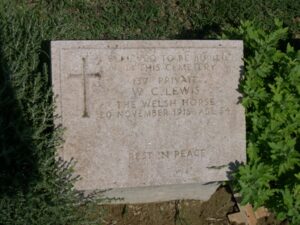
William David Lewis, Private, 117864, Labour Corps. Listed on the County Roll as W. T. Lewis, this is probably the correct man. William was born at Carmarthen, the son of William and Susannah Lewis. His parents later moved to 32, Devon Place, Newport, Mon, but William married the widowed Mary Jane Bourne on 22 November 1913, and the couple lived at 87, Old Castle Road, Llanelli, where William worked in the Tinplate Works. He enlisted at Llanelli on 10 June 1915 into the13th Battalion, Welsh Regiment, but later transferred to the 7th Battalion, Inniskilling Fusiliers, landing in France on 16 February 1916. By March 1917 William was suffering from severe dental problems, and was transferred to the 137th Company, Labour Corps. William was wounded during the German offensives of 1918, and was brought to Hospital at Blargies, where he died on 19 May 1918, aged 39. William is buried at Blargies Communal Cemetery Extension, France.
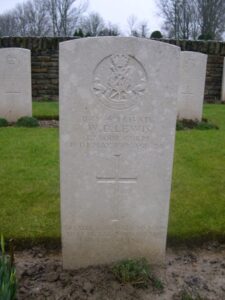
William John Lewis, Private, 200629, Welsh Regiment. William was the son of James and Jennet Lewis, of 78, Priory Street, Carmarthen. He had enlisted at Carmarthen into the 1/4th Battalion, Welsh Regiment, which was the local Territorial Battalion, attached to 159 Brigade, 53rd (Welsh) Division. The Division landed at Cape Helles, Gallipoli, on 9 August 1915, and was immediately thrown into action, spending the next few days in isolated pockets, fighting against a Turkish counter-attack during the Battle of Sari Bair, and then at the Attack on Scimitar Hill. The Division remained here throughout the coming months, and suffered severe losses in manpower strength during the great November 1915 blizzard on Gallipoli, when its total strength was reduced to less than that of a full-strength Brigade. On 11 December 1915 the Division was evacuated to Mudros, and by 23 December 1915 were moved to Egypt. They remained on the Suez Canal Defences for the next twelve months, where it took part in operations against the Sultan of Darfur, and in March 1917 took part in the advance into Palestine. William was last seen alive during the First Battle of Gaza, on 29 March 1917. He had been shot in the leg, and was carried to the Dressing Station by CSM Daniel Peters of Carmarthen. No more was heard of him, and he was posted as missing, believed killed on that date. William was 30 years old, and is commemorated on the Jerusalem Memorial, Israel.
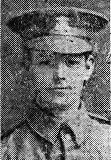
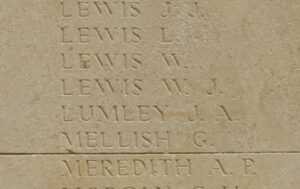
Frederick Vaughan Lloyd, Private, 91160, Machine Gun Corps. Frederick was born at Carmarthen in 1889, the son of Frank Meyrick Lloyd and Elizabeth Lloyd. He married Gertrude Owen at Cardiff in 1911, and the couple lived in Cardiff. Frederick enlisted there into the Army Service Corps, but was later transferred into the 70th Company, Machine Gun Corps, which was attached to the 23rd Division. He was killed during the Battle of Messines, on 9 July 1917. Frederick was 28 years old, and is buried at Dickebusch New Military Cemetery Extension, Belgium.
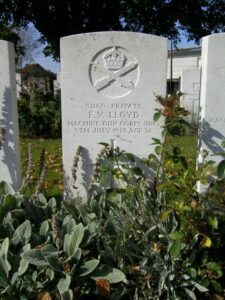
Walter Henry Lloyd, Captain, Royal Army Medical Corps. Walter was the son of Walter and Sarah Lloyd, of 12, Lammas Street, Carmarthen. He had trained as a Surgeon at London, gaining the M.B., and B.S., London, and had served at the Wandsworth Military Hospital for nine months, prior to volunteering to serve on the Western Front. He was commissioned as lieutenant in the 3rd London General Hospital in August 1915, and in June 1916, went to France as a Captain, serving as surgeon to a casualty clearing station with the Royal Army Medical Corps, attached to the 1/20th Battalion, London Regiment. The battalion was attached to 5 Brigade, 2nd (London) Division. The division was on the Somme throughout the summer of 1918, and it was here that Walter was killed on 4 August 1918. He was 27 years old and is buried at Contay British Cemetery, France.
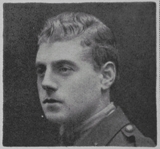
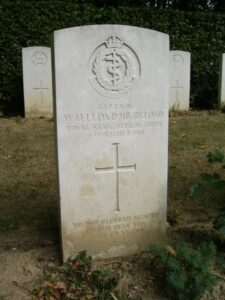
William Goater Lloyd, Lance Corporal, 731, Welsh Guards. William was the son of Richard and Elizabeth Lloyd, of St. Peter’s, Carmarthen. He enlisted there into the 1st Battalion, Welsh Guards, who had been raised by Royal Warrant of 26 February 1915, and formed at White City. On 18 August 1915 they landed at Havre, attached to 3rd Guards Brigade, Guards Division. This new Division saw its first major action during the Battle of Loos on 25 September 1915, remaining in the area during the coming months, where they also fought in the subsequent Action of Hohenzollern Redoubt. In July 1916 the Division moved to the Somme, where they fought at the Battle of Flers-Courcelette, and then at the Battle of Morval, capturing Lesboeufs Village. William was killed in action here on 24 September 1916, aged 20. He is commemorated on the Thiepval Memorial, France.
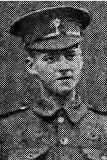
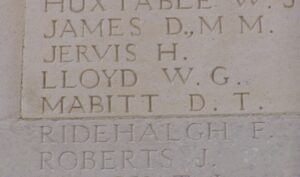
Ernest Reginald Lock, Private, 62774, Welsh Regiment. Ernest was the son of John and Mary Lock, of 94, Sydney Mews, Bath. He worked as a hairdresser at Carmarthen prior to the war and married Beatrice Gwendoline Astley, of 41, Lammas Street, Carmarthen in 1912. Ernest enlisted at Carmarthen on 30 March 1917 into the Royal Welsh Fusiliers, and on 26 August 1918 was posted to the 15th Battalion, Welsh Regiment, the Carmarthen Pals battalion, which was attached to 114 Brigade, 38th (Welsh) Division. Ernest was one of a batch of recruits who joined the Carmarthen Pals after they had successfully crossed the River Ancre, and captured the heights of Thiepval Ridge and Pozieres in August 1918. Over the coming weeks, the Division advanced towards the Hindenburg Line. On the night of 17 September 1918 the 15th Welsh took part in a bloody assault on Gauche Wood, near Gouzeaucourt. Ernest was wounded during the ensuing fighting, and died of his wounds at 43 Casualty Clearing Station on 21 September 1918. He was 29 years old, and is buried at Thilloy Road Cemetery, Beaulencourt, France.
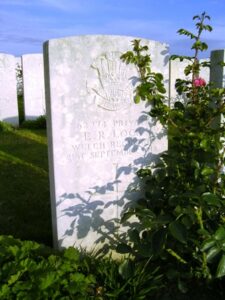
William Lodwick, Driver, T4/123188, Royal Army Service Corps. William was the son of Timothy and Margaret Lodwick, of Brynmeurig, Parcmaen Street, Carmarthen. Timothy later moved to 63, Princess Street, Llanelli. William had enlisted at New Tredegar in July 1915 into the Royal Army Service Corps, and moved to France shortly after. He became ill with fever, and was invalided home from France in September 1915, and was sent to King’s Heath Hospital at Birmingham. William died there on 31 December 1916, after a long illness. He was 28 years old, and was brought home to be buried at Carmarthen (Union Street) Congregational Chapelyard.
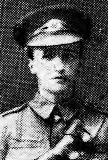
Wallis Austin Jonathan Marsden, Lieutenant, Royal Field Artillery. Wallis was the eldest son of the Rev. Jonathan Marsden and Emmeline Marsden, of Llanllwch. He was commissioned into the Territorials prior to the war, and was posted to France with the 2nd London Brigade, Royal Field Artillery. Wallis was wounded during the Battle of the Somme, on 21 September 1916 and was brought back to England for treatment at the Empire Hospital, Westminster. He died of his wounds on 20 July 1917 and was brought home for burial at Llanllwch (St. Luke) Churchyard.
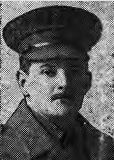
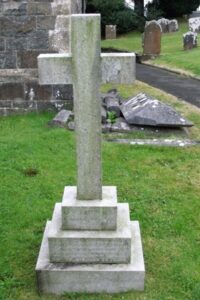
Ralph Maynard, Private, 202630, Royal Welsh Fusiliers. Ralph was the son of Frederick and Fanny Maynard, of 6, Old Priory, Carmarthen, and he enlisted there into the 4th Welsh. He later transferred into the Royal Welsh Fusiliers, and was posted to their 2nd Battalion who had been in France since the outbreak of war. In March 1918, the 2nd RWF became attached to 115 Brigade, 38th (Welsh) Division, and took part in the great offensive, which was launched from the Welshmen’s positions near Martinsart on the Somme on 22 August 1918. Ralph was killed in the fighting which followed the Divisions move back across the old Somme battlefield, during the advance near Bazentin-le-Petit on 25 August 1918, aged 20. He is buried at Caterpillar Valley Cemetery, Longueval, France.
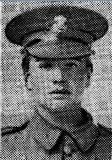
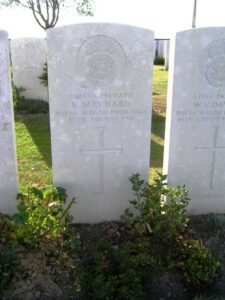
Frederick Aylward McDermott, Private, 857, Australian Infantry. Frederick was born at Rhyd-y-Gors Mansion, Carmarthen on 29 June 1876, the son of Paymaster Chief Cornelius William McDermott and Mary Ann McDermott. He was educated at Richomnd Grammar School, Yorkshire, and at Mannamead College Plymouth prior to emigrating to Australia in 1910, after having served for six years in the British army. Frederick enlisted at Kensington, NSW on 1 September 1914 into the 1st Battalion, Australian Imperial Force. The battalion formed part of the 1st Brigade, 1st Australian Division, and sailed for Egypt in October 1914. The Australians were supposed to train for service in France, but instead were diverted to Gallipoli, landing on the Peninsula on 25 April 1915. Frederick was killed by a shell which landed at Courtney’s Post on 7 July 1915. He was 38 years old, and was buried by his comrades at Shrapnel Gulley. His grave couldn’t be located after the war, so Frederick is commemorated on the Lone Pine Memorial, Gallipoli. Fred’s belongings were collected by his Commanding Officer, Captain Alfred Shout, who was later to win the Military Cross and Victoria Cross at Lone Pine. Frederick is not commemorated locally.
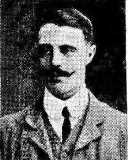
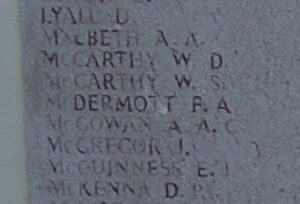
George Meyrick, Private, 282101, Lancashire Fusiliers. George was born at Swansea in 1876, the son of Richard and Ann Meyrick. He was working as a Postman at Talog prior to the outbreak of war, and lived with his wife Anne Meyrick, at 22, Parcell Terrace, Priory Street, Carmarthen. George enlisted at Carmarthen into the Army, and was posted to France after training, where he joined the 2/7th Battalion, Lancashire Fusiliers, which formed part of 197 Brigade, 66th (2nd East Lancs) Division. The Division concentrated on the Western Front by 16 March 1917 and moved to the Flanders Coast. At the end of September 1917 they moved to Ypres, and took part in the Battle of Poelcapelle. They then moved south to the Somme, and on 21 March 1918 were hit by the German Spring Offensive at the Battle of St Quentin. George was killed during the terrible fighting that followed, on 22 March 1918, aged 42. He is buried at Templeux-Le-Guerard British Cemetery, France.

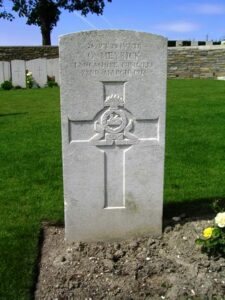
John Rees Morgan, Private, 2118, Welsh Guards. John was the son of David and Rachel Morgan, of Peniel Road, Carmarthen. He enlisted at Carmarthen into the 1st Battalion, Welsh Guards, which was raised in February 1915, and moved to France in August 1915, attached to 3rd Guards Brigade, Guards Division. The Welsh Guards saw their first major action during the Battle of Loos on 25 September 1915, and remained in the area during the coming months. In July 1916 the Division moved to the Somme, where they fought at the Battle of Flers-Courcelette, and then at the Battle of Morval, capturing Lesboeufs Village. The Guards stayed on the Somme over the winter, and it was here that John was killed, on 10 December 1916, aged 29. He is commemorated on the Thiepval Memorial, France.
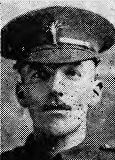
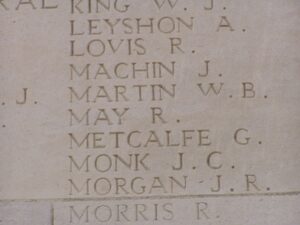
Thomas Cyril William Morgan, Second Lieutenant, Cheshire Regiment. Thomas was born in Blue Street, Carmarthen in 1897, the son of Stephen and Mary Elizabeth Morgan. The family later resided at Wooda, Parkwern Road, Sketty, Swansea. Thomas was commissioned into the Cheshire Regiment, and was posted to the 11th Battalion, Cheshire Regiment, which was attached to 75 Brigade, 25th Division in France. The Division had landed in France on 26 September 1915, and was posted to the Vimy area, where it defended Vimy Ridge against a German attack in May 1916. It then moved to the Warloy area and attacked on 3 July near Thiepval. It fought throughout the Battle of the Somme, and then moved to Ploegsteert, holding the line for the months leading up the Battle of Messines in June 1917. After fighting at Messines, the Division moved north, and fought at Pilckem Ridge. Thomas was killed in action at the Third Battle of Ypres, on 12 August 1917, aged 19. He has no known grave and is commemorated on the Ypres (Menin Gate) Memorial, Belgium. Thomas is not commemorated locally.
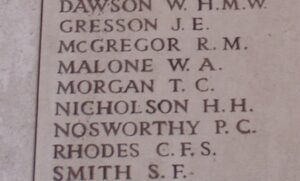
William Llewelyn Morgan, Private, 29469, South Wales Borderers. William was the son of John and Rachel Morgan, of Penybank, Pensarn, Carmarthen. He enlisted at Carmarthen into the army, and was posted to France, where he joined the 11th Battalion, South Wales Borderers. The battalion had been in France since landing in December 1915 as part of 115 Brigade, 38th (Welsh) Division, and had fought at Mametz Wood from 7 July 1916. From August onwards the Division was at Boesinghe, situated on the Yser Canal, and here launched its attack on Pilckem Ridge on 31 July 1917. William was wounded in the head and neck at Langemarck, during an assault on White House, and was admitted to Hospital on 30 August 1917. He was brought to the 7th Canadian General Hospital at Etaples for further treatment, and seemed to be recovering, but had a relapse and died on 2 October 1917. He was 19 years old, and is buried at Etaples Military Cemetery, France.

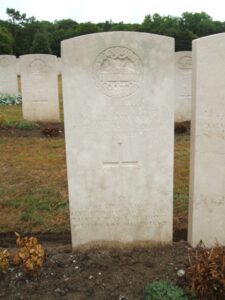
William Morgans, Private, 13359, Royal Welsh Fusiliers. William was born at Carmarthen, and enlisted at Llanelli into the 9th Battalion, Royal Welsh Fusiliers, which was attached to 58 Brigade, 19th (Western) Division. The Division moved to France during July 1915, and moved to positions near Loos, where it took part in the opening attack of the Battle of Loos on 25 September 1915. The following year the Division moved to the Somme, where it took part in the second wave of the attack on Ovillers-La Boiselle on 1 July, capturing the village at heavy cost, and fought throughout the Somme offensive. In 1917 the Division moved north to Ypres, taking part in the Battle of Messines, and fought on the Menin Road and at Polygon Wood, before moving up to Broodseinde, Poelcappelle and Passchendaele Village itself. In 1918 they were caught up in the German Spring Offensive near St. Quentin, where they suffered terrible casualties, and fought at the Battle of Bapaume. They moved to Ypres, but were caught up in the German attack at Messines. William was killed during the Battle of Kemmel, on 29 April 1918. He is buried at Perth Cemetery (China Wall), Belgium.
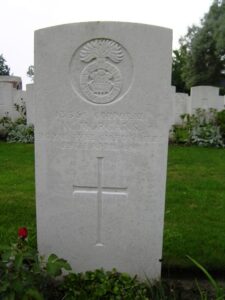
James John Morris, Private, 268205, Royal Welsh Fusiliers. James was the son of James and Jane Morris, of 46, Catherine Street, Carmarthen. He enlisted on 7 January 1915 into the Welsh Regiment, and was posted to the 1/4th Welsh, taking part in the Gallipoli campaign. James was wounded at Gallipoli, and was hospitalised at Cairo before rejoining the battalion at Gallipoli. He then became ill, suffering from exposure and dysentery, and was again evacuated to Egypt. He returned to England on 5 August 1916, and upon recover was transferred into the 9th Battalion, Royal Welsh Fusiliers on 9 April 1918, who were attached to 58 Brigade, 19th (Western) Division. The Division had been in France since July 1915. James joined them in Flanders, where they were rebuilding after being decimated during the German offensive of 21 March 1918 onwards. The Division was caught up in a fresh German attack at Messines in April, and fought a heroic rearguard action over the coming weeks. James was wounded during this period, and died of wounds on 29 April 1918. James was only 19 years old at the time of his death, and had seen three years fighting. He is buried at Esquelbecq Military Cemetery, France.
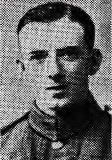
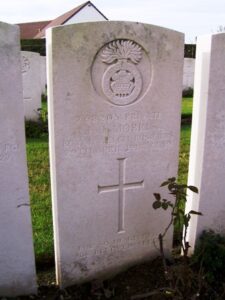
Joseph Morris, Sergeant, 9132, South Wales Borderers. Joseph was the son of John and Charlotte Ann Morris, of Corner House, Little Water Street, Carmarthen. He was a pre-war regular soldier, who had enlisted at London into the South Wales Borderers, joining the 1st Battalion, attached to 3 Brigade, 1st Division. The Division had been one of the first to arrive in France, fighting at the Battle of Mons, and taking part in the retreat to the Marne, where the Germans were stopped. They then fought at the Aisne, and at Chivy, before being moved North to Ypres. Here they fought at the First Battle of Ypres, where they again stopped the German Offensive, before taking part in the Battle of Nonne Boschen, where Joseph was wounded by shrapnel. He died of his wounds at the Hospital at Boulogne on 18 November 1914, aged 32, and is buried at Boulogne Eastern Cemetery, France.
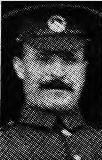
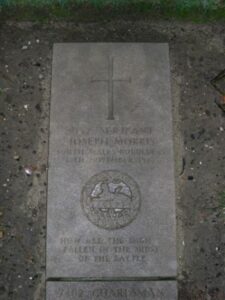
Morgan Morris, Private, 54268, Welsh Regiment. Morgan was the son of William and Anne Morris, of Brynhyfryd, Llangunnor, Carmarthen. He enlisted at Carmarthen into the army, and was posted to France in May 1916 joining the 9th Battalion, Welsh Regiment, part of 58 Brigade, 19th (Western) Division. Morgan would have taken part in the attack at La Boiselle on 1 July 1916, and saw much fighting during his time at war. On 31 January 1917 the Welshmen’s positions were hit by a bombardment of German gas shells, and Morgan suffered severe gas wounds. He died the following day, on 1 January 1917, aged 27, and is buried at Sailly-Au-Bois Military Cemetery, France. Morgan is listed among the Llangunnor men on the County War Memorial roll.

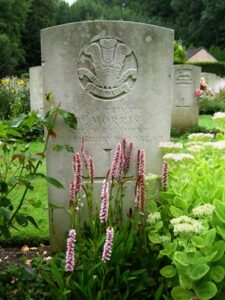
William Archibald Tucker Morris, DCM, Sergeant, 14582, Welsh Regiment. William was the son of Philip and Mary Morris, of Island Wharf, The Quay, Carmarthen. He was an old soldier, who had fought in the Boer War of 1899-1901, and at the outbreak of war went to France with the 2nd Battalion, Welsh Regiment, who were attached to 3 Brigade, 1st Division. William fought with the Division during the retreat from Mons to the Marne, where the Germans were stopped. After a famous action at Chivy sur Aisne, the 2nd Welsh moved to Ypres, and made a famous stand at Ghelulveldt during the First Battle of Ypres, where they again stopped the German Offensive. The following year saw them in action again at the Battle of Aubers, before taking part in the Battle of Loos, and the action at the Hohenzollern redoubt. In 1916 the Division moved south to the Somme, and fought at the Battles of Albert, Bazentin, Pozières, Flers-Courcelette and Morval. William was awarded his Distinguished Conduct Medal for Gallantry on the Somme during the Battle of Pozières, on 25 July 1916, when he remained at his post, although wounded, and helped repulse a German counter-attack. He returned home to Cambridge for treatment, and was presented with his medal in Hospital there. He refused to take up a post as an instructor after recovering, and instead returned to the 2nd Welsh, who had moved to the Flanders Coast during the summer of 1917, prior to taking part in the Second Battle of Passchendaele. After spending another winter in Flanders, they were near Estaires when the German Spring Offensive caught them, and William was severely wounded here. He was brought back to the UK for treatment at the 1st Southern General Military Hospital, Birmingham, but sadly died of wounds there on 2 May 1918. William was 38 years old, and was brought home for burial at Carmarthen (St. David) Churchyard.
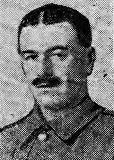
Walter Mugglestone, Private, 20374, Welsh Regiment. Walter was the son of Alfred and Elizabeth Mugglestone, of 15, The Conery, Leicester. He resided at Carmarthen prior to the war, and enlisted there during a recruitment drive into the 15th Battalion, Welsh Regiment, which was known as the Carmarthen Pals battalion. The battalion trained at Rhyl and Winchester, before moving to France on 2 December 1915 attached to 114 Brigade, 38th (Welsh) Division. The entire Division moved to the Fleurbaix sector, where it was initiated into trench warfare. Walter was killed when the Germans exploded a mine beneath a section of the Welshmen’s lines near Cuinchy on 9 March 1916. He was 20 years old, and is buried at Guards Cemetery, Windy Corner, Cuinchy, France. Walter is not commemorated locally.
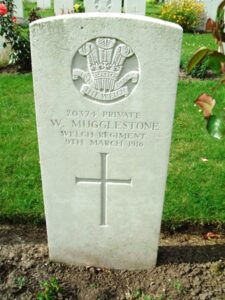
James Alexander Orman, DCM, Sergeant, 200780, Welsh Regiment. James was the son of James Henry and Emily Orman, of Southampton. He married Emma Jane Lewis in 1907, and the couple resided at 6, Glannant Road, Carmarthen. James enlisted into the Welsh Regiment Militia at Carmarthen on 13 February 1906, and in 1908 the battalion was renumbered the 4th Battalion, Welsh Regiment, becoming the local Territorial Battalion, attached to 159 Brigade, 53rd (Welsh) Division. The Division landed at Cape Helles, Gallipoli, on 8 August 1915, and was immediately thrown into action, spending the next few days in isolated pockets, fighting against a Turkish counter-attack during the Battle of Sari Bair, and then at the Attack on Scimitar Hill. James won his Distinguished Conduct Medal at Gallipoli on 11 August 1915, ‘For conspicuous gallantry on 9th August 1915, near Anzac, when, although wounded early in the day, he remained with his Company until dark, displaying great courage and resource.’ On 11 December the Division left Gallipoli for Egypt, and spent the next twelve months in Egypt, before taking part in the invasion of Palestine the following year. They fought throughout the successful campaign in Palestine, capturing Jerusalem in December, 1917. They fought throughout the duration of the war in Palestine, and James was killed in action during further operations in the Jordan Valley, on 9 March 1918, aged 34. He is buried in Jerusalem War Cemetery, Israel.
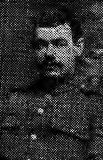
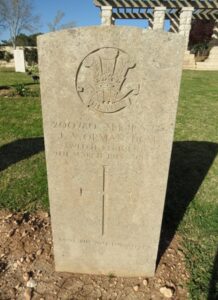
Thomas Owens, Private, 54149, Welsh Regiment. Thomas was the son of John and Elizabeth Owens, of Mount Hill Farm, Llangunnor, Carmarthen. He was residing with his brother-in-law, PC Davies, of Robinson Street, Llanelli when he enlisted at Swansea into the army. Thomas was posted out to France to join the 13th Battalion, Welsh Regiment, which had recently been moved from the Somme area, after the fighting at Mametz Wood, as part of 114 Brigade, 38th (Welsh) Division. Thomas joined the battalion while it was holding the line near Boesinghe. Thomas was wounded while the 13th Welsh were in the line at the Canal Bank. He died of his wounds on 28 February 1917, aged 36, and is buried at Mendinghem Military Cemetery, Belgium.
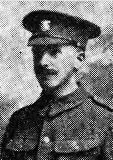
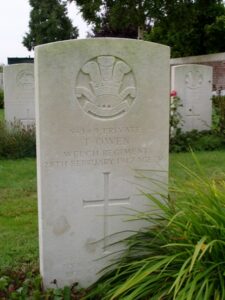
Thomas Parry, Private, 373158, Royal Army Medical Corps. Thomas was born at St. Peter’s, Carmarthen, in July 1886, the son of Doctor Pater Parry and Elizabeth Mary Parry, of Castle Hill House, Carmarthen. He was a Medical Student at the outbreak of war, and enlisted at Carmarthen on 28 September 1914 into the Royal Army Medical Corps. Thomas remained on home service for the duration of the war, attached to the 3rd Western General Hospital. He survived the war, but sadly took ill, and died of pulmonary tuberculosis on 4 March 1919, aged 22. Thomas is buried at Carmarthen Cemetery.
Harold Thomas Peadon, Second Lieutenant, Welsh Regiment. Harold was the only son of Joseph and Annie Peadon, of 2, Wylam Terrace, Shield Row, Stanley, Co. Durham. He had studied at Carmarthen Training College for several years, prior to enlisting there into the 1/4th Battalion, Welsh Regiment. Harold served at Gallipoli with the battalion, which was attached to 159 Brigade, 53rd (Welsh) Division. On 21 October 1915 Harold received a commission into the 1/4th Welsh. He was wounded during the First Battle of Gaza, and died on 27 March 1917. Harold was 26 years old, and is buried at Deir El Belah War Cemetery, Egypt. Harold is not listed on the County War Memorial roll.
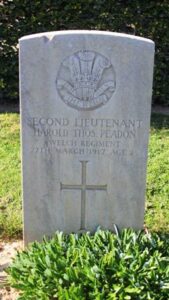
Richard James Penny, Private, 5496, Welsh Regiment. Richard was the son of George and Emma Penny, of 1, The Oaklands, Oakmeadow, Rumney, Mon. He was living in Carmarthen at the outbreak of war and enlisted there into the 1/4th Battalion, Welsh Regiment, which was the local Territorial Battalion, attached to 159 Brigade, 53rd (Welsh) Division. The Division landed at Cape Helles, Gallipoli, on 9 August 1915, and was immediately thrown into action, spending the next few days in isolated pockets, fighting against a Turkish counter-attack during the Battle of Sari Bair, and then at the Attack on Scimitar Hill. Richard was killed in action at Gallipoli on 18 September 1915, aged 20, and is buried in Azmak Cemetery, Suvla. Richard is not commemorated locally.
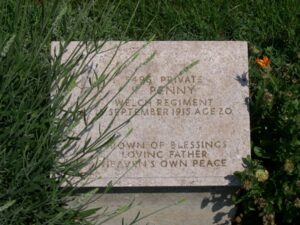
Daniel Arthur Peter, Company Sergeant Major, 200681, Welsh Regiment. Daniel was the son of William and Jane Peter, of 88, Priory Street, Carmarthen. Daniel had fought throughout the Gallipoli and Palestinian campaigns with the 4th Battalion, Welsh Regiment, which was attached to 159 Brigade, 53rd (Welsh) Division. After the cessation of hostilities, the 4th and 5th Welsh were merged to form the 4/5th Battalion, and remained on Garrison duties in the Middle East. Daniel was mysteriously killed by a gunshot wound on the night of 25 April 1919. A court of enquiry was held at Sidi Bishr. Daniel was 34 years old, and is buried at Alexandria (Hadra) War Memorial Cemetery. He is commemorated on the headstone of his sister Emily at Abergwili, who died on 8 November 1918.
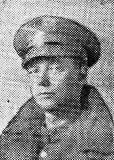
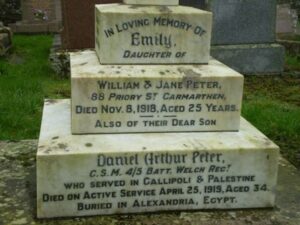
David Phillips, Corporal, 17716, Welsh Regiment. David was the son of Thomas and Rachel Phillips, of Little Water Street, Carmarthen, and the brother of Mrs. L. Evans, of 24 Middleton Street, St. Thomas, Swansea. He lived with his sister at Swansea, where he worked as an engine driver with Studt’s Circus. David was one of the first enlistees at Swansea who joined the 14th Battalion of the Welsh Regiment at its formation, which was the Swansea Pals battalion, which trained at Rhyl before moving to France in December 1915 attached to 114 Brigade, 38th (Welsh) Division. After several months in the trenches at Fleurbaix and Givenchy, the Division marched to the Somme in June 1916, and on 7 July 1916 made its first assault on Mametz Wood. The assault failed, and the division made its second assault on 10 July 1916, throwing its full might into the assault. David was killed that day, aged 35. His body was never identified, and he is commemorated on the Thiepval Memorial, France.
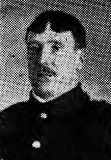
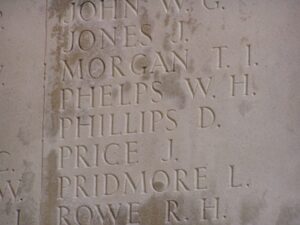
Edwin Phillips, Lance Corporal, 691, Royal Engineers. Edwin was the son of David and Rachel Phillips, of Glannant House, Oxford Street, Pontycymmer, Glam. He worked at Carmarthen for several years prior to the war, and enlisted there into the 2/1st Welsh Field Company, Royal Engineers, which was attached to the 53rd (Welsh) Division. The Division landed at Cape Helles on 9 August 1915, and was immediately plunged into heavy fighting. Edwin was killed during the Defence of Helles, on 4 December 1915. He was 30 years old, and was buried at Lala Baba War Cemetery, Gallipoli by four friends from Carmarthen.
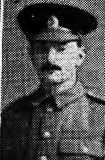
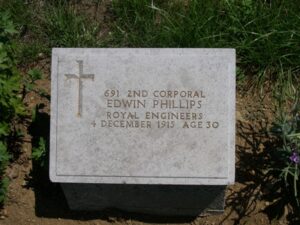
Ishmael Phillips, Sergeant, 13041, Welsh Regiment. Ishmael was the son of George and Rachel Phillips, of Red Lion Yard, Carmarthen. He married Margaret Ann Martin in 1907, and the couple raised three children, at 8, Old Priory, Carmarthen. Ishmael enlisted at the outbreak of war into the 9th Battalion, Welsh Regiment, which moved to France in July 1915 attached to 58 Brigade, 19th (Western) Division. The 9th Welsh took part in a frontal assault on the German lines just north of Givenchy at dawn on 25 September 1915, but was mown down by German machine gun fire just 100 yards from their own trenches. Ishmael was one of well over 200 casualties suffered by the 9th Welsh that day. He was 27 years old, and is commemorated on the Loos Memorial, France.
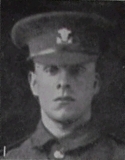
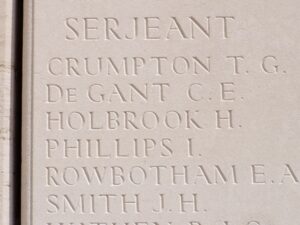
James Howell Phillips, Private, 320314, Welsh Regiment. James was the son of John and Anne Phillips, of Ysgerfa, Talog Road, Abernant. He enlisted at Carmarthen in September 1914 into the Pembroke Yeomanry, which moved to Norfolk as part of the 1st Mounted Division, before sailing for Egypt in March 1916. After twelve months on the Suez Canal Defences, the Pembroke and Glamorgan Yeomanry merged to form the 24th Battalion, Welsh Regiment, and were attached to 231 Brigade, 74th (Yeomanry) Division. The division took part in the advance into Palestine from March 1917, and fought at the Second and Third Battles of Gaza. James was killed during the attack on the Sheria heights on 6 November 1917. He was 23 years old, and is buried at Beersheba War Cemetery, Israel.

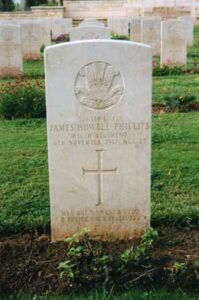
John Clarke Phillips, Private, 790, Australian Imperial Force. John was born at Abergwili in 1874, the son of David and Harriet Phillips. He emigrated to Australia with his wife, Hannah Maria Phillips, and their two children, and the family lived at Stanley Terrace, Leabrook, South Australia, where John worked as a Tram Inspector. John enlisted at Adelaide on 17 February 1916 into the 43rd Battalion, Australian Infantry. He embarked at Adelaide on 9 June 1916 aboard HMAT Afric, and disembarked at Marseilles on 20 July 1916. The battalion then moved to Britain for further training, before moving to the Western Front early in December 1916, joining the 11th Brigade, 3rd Australian Division. The Division moved to Bailleul by 25 November 1916, then to the Armentieres Sector, where it began its routine of trench warfare. John was killed here by a German bombardment on 26 January 1917. He was 45 years old, and is buried at Cite Bonjean Military Cemetery, Armentieres, France. John is not commemorated locally.
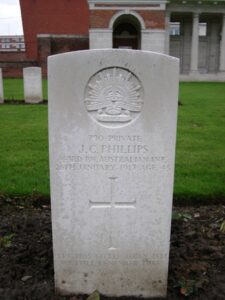
Myrddin Thomas Phillips, Private, G/3440, Royal West Kent Regiment. Myrddin, known as Mervyn, was born at Carmarthen, the son of Samuel and Elizabeth Phillips. The family later resided at 10, High Street, Abergwynfi, but Mervyn often visited his Grandmother, Ann Phillips, Grocer, at 55, Water Street, Carmarthen. He enlisted at the outbreak of war, and joined the 8th Battalion, Royal West Kent Regiment, which was attached to 72 Brigade, 24th Division. The Division had moved to France during August 1915 and marched to positions near Loos, where they took up reserve positions for the main Battle of Loos. They were sent into battle on 26 September 1915 at Loos and suffered terrible casualties. Mervyn died of wounds suffered at Loos on 6 October 1915. He was 18 years old, and is buried at Cabaret Rouge British Cemetery, Souchez, France.

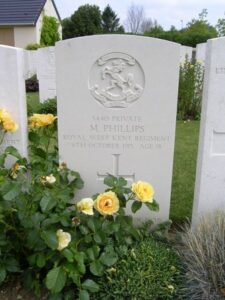
Thomas Harold Phillips, Trooper, 199, Australian Imperial Force. Thomas was born on 14 April 1889, the son of David and Sarah Phillips, of Arfryn, Carmarthen. He joined the Territorials in 1909 and served for three years as Sergeant in the 7th Welsh Cyclists. He emigrated to Australia around 1912, and at the outbreak of the war enlisted at Brisbane on 2 September, 1914, into the 2nd Light Horse, which formed part of the 1st Australian Light Horse Brigade. The regiment sailed from Brisbane on 25 September and disembarked in Egypt on 9 December 1914. The 2nd Light Horse deployed to Gallipoli without its horses and landed there on 12 May 1915, joining the New Zealand and Australian Division. Just two days later, on 14 May 1915, Thomas was badly wounded, suffering gunshot wounds to his back, and was taken aboard the Hospital Ship Gascon. He died at 13.30 that day, and was buried at sea midway between Gallipoli and Alexandria. Thomas was 26 years old, and is commemorated on the Lone Pine Memorial, Gallipoli.
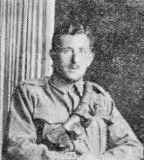
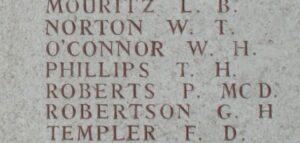
Arthur James Price, Private, 56908, Welsh Regiment. Arthur was the son of Thomas and Caroline Price, of 13, Blue Street, Carmarthen. He enlisted there into the Pembroke Yeomanry on 26 December 1915, and was posted to France on 5 August 1916, where he joined the 13th Battalion, Welsh Regiment. The battalion had just taken part in the capture of Mametz Wood while attached to 114 Brigade, 38th (Welsh) Division, and had just taken up positions at Boesinghe, north of Ypres. Arthur was wounded soon after, but quickly returned to duty. The Division remained here until the opening of the Passchendaele Offensive in July 1917, when it took part in the Battle of Pilckem Ridge on 31 July 1917. Arthur was killed in action during the subsequent Battle of Langemarck on 4 August 1917. He was 24 years old, and is commemorated on the Ypres (Menin Gate) Memorial, Belgium. His brother, Thomas Henry Price (aka Davies), also fell.
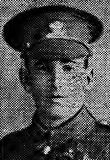
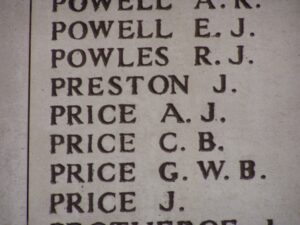
Thomas Henry Price, Private, 47676, Northumberland Fusiliers. Thomas was born as Thomas Henry Davies on 4 April 1889, the illegitimate son of Caroline Davies. Caroline married Thomas Price on 14 September 1889, at Christ Church, Carmarthen. Thomas was raised as Thomas Henry Davies, at 13, Blue Street, Carmarthen. On 28 August 1912 Thomas Henry Davies married Minnie Lewis at St. David’s Church, Carmarthen, and the couple set up home at 34, Hawkes Villas, Carmarthen. He enlisted at Carmarthen into the Royal Field Artillery, but was later transferred into the 21st Battalion (Tyneside Scots), Northumberland Fusiliers, which was attached to 102 Brigade, 34th Division. The Division moved to France between 7 and 15 January 1916, and saw its first major action on the Somme, during the Battle of Albert, where it suffered very severe casualties during its part in the attack on La Boiselle. It then took part in the Battle of Bazentin, Battle of Poziéres and the Battle of Flers-Courcelette. The following year saw them fighting at the Battle of Arras. Thomas was killed on 28 December 1917, and is buried at St. Martin Calvaire British Cemetery, St. Martin-Sur-Cojeul, France. His stepbrother, Arthur James Price, also fell. The headstone is named to T. H. Davies.
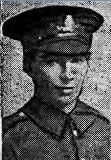
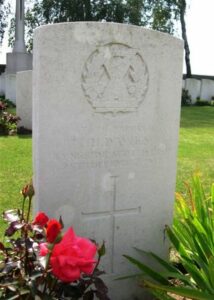
Gwynedd William Llewelyn Pritchard, MC, Captain, Manchester Regiment. Gwynedd was the son of William Jones Pritchard and Emily Caroline Pritchard, of 1, St. Clement’s Avenue, Bloxwich, Walsall, Staffs. He served with the 20th Battalion, Manchester Regiment, which had been in France since November 1915 with the 7th Division, and moved to Italy in November 1917. On 13 September 1918 they joined 7 Brigade, 25th Division in France, and took part in the final offensive. Gwynedd was sadly killed in action soon after arriving back in France, during the Battle of the Selle on 23 October 1918. He was 25 years old, and is buried at Pommereuil British Cemetery, France. Gwynedd was the holder of the Military Cross. The award was listed in the London Gazette of 7 March 1919, and read; ‘On 8th October, 1918, during the advance on Sonia Farm, he displayed great gallantry and initiative in handling his company. Troops on the right having lost direction and a gap resulting, he made good first Bronx Farm and later .Foal Copse, the latter being strongly held by machine-guns, which would undoubtedly have held up the main advance on the left when it came to be proceeded with. He personally led his company in the attack on Foal Copse.’

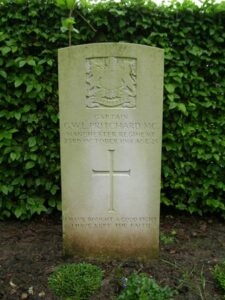
Charles Badam Prosser, Private, 320262, Welsh Regiment. Charles was the son of David and Elizabeth Prosser, of Llechryd, Breconshire. He lived at Carmarthen prior to enlisting there into the Pembroke Yeomanry. During March 1916 the 1/1st Pembroke Yeomanry moved to Egypt, where it merged with the Welsh Border Mounted Brigade and formed the 4th Dismounted Brigade. On 2 February 1917 it merged with the 1/1st Glamorgan Yeomanry to form the 24th Battalion, Welsh Regiment, and became attached to 231 Brigade, 74th (Yeomanry) Division. The Division had formed in Egypt in January 1917 and had fought through the Palestinian Campaign, at the Battles of Gaza. Charles was wounded during the Third Battle of Gaza, and died on 8 November 1917, aged 20. He is buried in Beersheba War Cemetery, Israel. Charles is not commemorated locally.
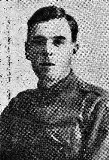
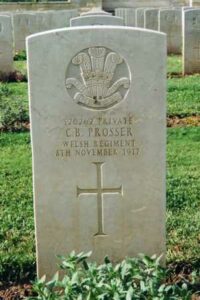
Sydney Carew Puddicombe, Private, 19385, French Foreign Legion. Sydney was the eldest son of Sydney Dunsterville Puddicombe, and Frances Andrews, and the grandson of James Puddicombe. The family were originally from Carmarthen, where James ran the Ivy Bush Inn in King Street, but Sydney had moved the family to Asnieres-sur-Seine, a Suburb of Northern Paris, some years prior to the war, where he married frances Andrews, and their son Sydney was born there in 1890. When war erupted in August 1914, the Germans drove through Belgium and Northern France towards Paris. Sydney enlisted at Paris that month, into the 1st Battalion, French Foreign Legion. After stopping the German drive to capture Paris, the Western Front formed, running from the Belgian coast down to the Swiss Border, and the French held the front south of Arras, all the way to Switzerland, with the BEF on their left. After the catastrophic battles of 1914-1916, the French Army had been devastated with no gains in ground, and a fresh assault was planned for the Spring of 1917 by General Nivelle, which was to be aimed at the German positions along the Chemins-des-Dames in the Champagne Region, in conjunction with a British and Canadian attack around Arras. The French suffered terribly, suffering exceptionally heavy losses, which saw Sydney mortally wounded. He died in a hospital near Chalons sur Marne on 23 April 1917, aged 25, and is buried at the French Military Cemetery at De-L’Est, Chalons-en-Champagne. The attack forced the sacking of General Nivelle, bringing his career to a premature end.
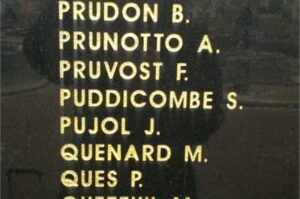
Edgar George Rees, Second Lieutenant, Royal Welsh Fusiliers. Edgar was born in 1891, the son of Thomas Vicary Rees and Annie Mary Rees, of The School House, Llangunnock. He enlisted into the 13th Royal Welsh Fusiliers in October 1914, and served with them in France from December 1915, where they were attached to 113 Brigade, 38th (Welsh) Division. After returning home on leave, when he married Gwenllian Lewis, of 44, Mount Libanus, Treherbert, he was commissioned in 1916, and posted to the 19th Battalion, Royal Welsh Fusiliers, which was attached to 119 Brigade, 40th (Bantam) Division. The Division had moved to France in June 1916, and moved to the front near Loos. Late in 1916 they moved south to the Somme, and fought at the Battle of the Ancre, and remained in the area over the winter. In March, 1917 the Germans withdrew to their shortened line, called the Hindenburg Line, and the 40th Division were one of the Divisions that followed the withdrawal. Later in the year they took part in the Battle of Cambrai, playing an important role in the attack on Bourlon Wood. Edgar was killed in action at Cambrai on 23 November 1917, aged 26. He is commemorated on the Cambrai Memorial, Louverval, France. His three other brothers also served.

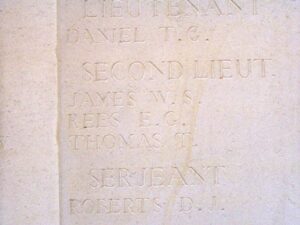
Gwilym Hubert Rees, Signaller, Royal Navy. Gwilym was born in Carmarthen in October 1898, the son of Thomas and Elizabeth Rees, of 19, The Avenue, Carmarthen. He trained as a Wireless Operator at Swansea, before proceeding to Marconi House London, and passed out as a Signaller, joining the Royal Naval Transport Section. Nothing more can be discovered about Gwilym, but a report was published in the Welshman Newspaper of 7 December 1917, which stated that Gwilym had perished on only his second voyage, and that he was 19 years old. There is no record of his death anywhere, neither is he commemorated by the Commonwealth War Graves Commission.
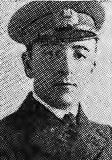
William Oliver Rees, Private, 40262, Welsh Regiment. William was the son of William and Mary Rees, of Trelech. He had lived at Carmarthen for several years prior to the war, working at the Cloth Hall, Carmarthen. He served with the Welsh Regiment, but is not commemorated by the CWGC, so nothing further is presently known of him, except that he died at Carmarthen in the summer of 1919, aged 25.

William Reese, Lieutenant, Welsh Regiment. William was born on 16 September 1884, the youngest son of Abel and Eliza Reese, of Cardiff. He worked at the London City and Midland Bank at Carmarthen before the war, and married the daughter of the manager, Alice Mabel Brockie, awhile on leave in 1915. William was one of the original officers of the 15th Battalion, Welsh Regiment, known as the Carmarthen Pals Battalion, which was trained at Rhyl, before landing in France in December 1915 as part of 114 Brigade, 38th (Welsh) Division. William served with the battalion over the coming months, and took part in the capture of Mametz Wood in July 1916. He sustained concussion at Mametz, and was evacuated back to Britain, where he took up a post at Kinmel Park after recovery. He died at Rhyl of heart failure just three days after taking up his new post, on 2 February 1917, aged 32, and was brought home to be buried at Carmarthen Cemetery. William is not listed on the County War Memorial roll, but is commemorated at Narberth.

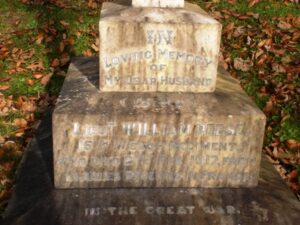
Harry Charles Reeves, Second Lieutenant, Welsh Regiment. Harry was born in Carmarthen on 1 August 1894, the son of Harry and Edith Anne Mary Reeves, of 54a King Street, Carmarthen. The family later moved to 100, Plasturton Avenue, Cardiff. Harry originally enlisted into the Royal Naval Volunteer Reserve, serving as Z/1700 Ordinary Seaman RNVR, but was commissioned into the newly formed 15th Battalion of the Welsh Regiment, known as the Carmarthen Pals Battalion. The battalion was part of 114 Brigade, 38th (Welsh) Division, and moved to the Western Front in December 1915, taking up the line near Fleurbaix in Northern France. Sometime after this Harry was transferred into the 2nd Battalion, Welsh Regiment, attached to 3 Brigade, 1st Division. He was with the Division by the time of the Battle of the Somme, and was killed in action with them during the Battle of Guillemont, on 24 August 1916, aged 22. Harry was buried on the battlefield, but his grave was lost, and he is now commemorated on the Thiepval Memorial, France.
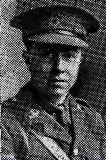
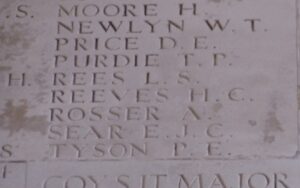
William John Regan, Lance Corporal, 82335, South Wales Borderers. William was the son of Daniel and Mary Anne Regan, of 7, Picton Place, Carmarthen. William enlisted near the end of the war, and was posted to the 2nd Battalion, South Wales Borderers after the war. He was due to move to India with the battalion, but was injured in a motorcycle accident, and moved to Manchester Hospital for treatment. William had a relapse and died at Manchester on 3 December 1919. He was 19 years old, and was brought home for burial at Carmarthen (St. Mary) Roman Catholic Churchyard. William is not listed on the County War Memorial roll.
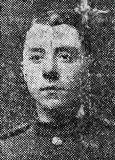
David John Richards, Private, 39507, Royal Welsh Fusiliers. David was the son of David and Elizabeth Ann Richards, of 31, Priory Street, Carmarthen. He enlisted at Cardiff into the Army, and was posted to the 11th Battalion, Royal Welsh Fusiliers, which was attached to 67 Brigade, 22nd Division. The Division crossed to France in early September 1915, but in October 1915 the Division moved to Salonika. It remained in the theatre for the rest of the war, taking part in the Retreat from Serbia during December 1915. During August 1916 the Division fought at the battle of Horseshoe Hill, and in September 1916 at the battle of Machukovo. Between April and May 1917 the Division fought at the battle of Doiran, and then on 18 September 1918 at the Second Battle of Doiran. David was one of many casualties suffered by the Division at Doiran, being killed in action on 18 September 1918. He was 24 years old, and is buried at Karasouli Military Cemetery, Greece.
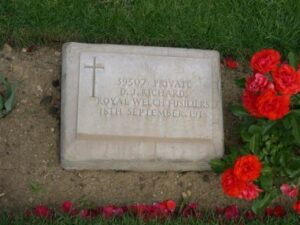
John Hywel Richards, MC, Lieutenant, South Wales Borderers. John was the son of the Rev. Benjamin Frederick Richards and Annie Richards, of Francis Villa, Carmarthen. He studied as a Calvinistic Methodist Student at Aberystwyth and Carmarthen prior to the war, and in 1915 enlisted as a Private with the Army Veterinary Corps. He was commissioned into the 6th Battalion, South Wales Borderers in 1916, which was the Pioneer Battalion to the 25th Division. The Division fought throughout the Battle of the Somme, and then moved to Ploegsteert, where they held the line for the months leading up the Battle of Messines in June 1917. After fighting at Messines, the Division moved north, and fought at Pilckem, before moving south again, where they took up positions around Bullecourt in reserve. Here the Division was used to reinforce the badly depleted British units that were hit in the area by the German Spring Offensive. They moved north to Flanders on the night of 30 March 1918, where they took up positions at Ploegsteert again, where they received reinforcements, and rebuilt. John was awarded the Military Cross for Westhoek Ridge, during Third Ypres. The award was listed in the London Gazette of 8 January 1918, and read; ‘For conspicuous gallantry and devotion to duty when in charge of a convoy. He went forward during a hostile counter-attack and reconnoitred the ground to find the best route for the animals through both the barrage and shell-holes, under heavy shell fire, through which he then led them without hesitation, sustaining only a few casualties. He successfully delivered the stores and ammunition which were urgently required. He has on several occasions shown remarkable initiative and great gallantry during similar journeys.’ John was mortally wounded during the German Spring Offensive on the Lys on 11 April, and died of wounds on 19 April 1918, aged 27. He is buried at Aire Communal Cemetery, France.
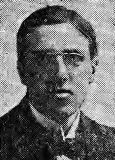
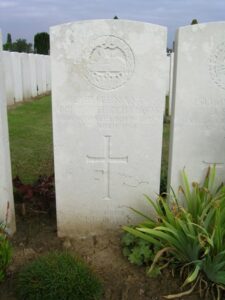
Owen Richards, Private, 9668, Welsh Regiment. Owen was the son of David and Jane Richards, of 62, Priory Street, Carmarthen. He had served with the regular army for several years prior to the war, and moved to France at the outbreak with the 2nd Battalion, Welsh Regiment, as part of 3 Brigade, 1st Division. The Division took part in the retreat from Mons to the Marne, then fought in their famous attack at Chivy-sur-Aisne, where William Fuller gained the VC. The Division then moved to Ypres, where the 2nd Welsh made a gallant stand at Gheluveld, which stopped the German drive towards the Channel. After further fighting in 1915, the 1st Division moved to Loos, and it was during the Battle of Loos, that Owen was killed on 28 September 1915, aged 28. He is buried at Lens Eastern Communal Cemetery, France.
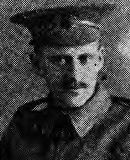
William John Richards, Sapper, 492, Royal Engineers. William was the son of William and Margaret Ann Richards, of Brynmefus, Talog Road, Trevaughan, Carmarthen. He enlisted at Carmarthen into the 1/1st Welsh Field Company, Royal Engineers, which was attached to the 53rd (Welsh) Division. The Division landed at Cape Helles, Gallipoli early in August 1915, and was immediately plunged into desperate fighting. William became ill with dysentery at Gallipoli, and was evacuated by Hospital Ship to Lemnos Island, where he died of wounds on 14 October 1915, aged 31. William is buried at Portianos Military Cemetery, Lemnos. Sadly, just two weeks prior to the news of William’s death reaching Carmarthen, his father and younger brother Bertie drowned whilst bathing at Llanstephan.
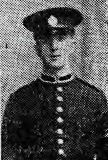
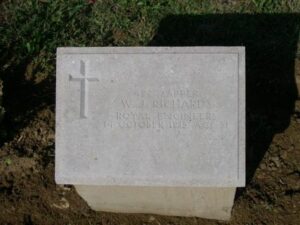
Edward Rogers, Private, 1615, Welsh Regiment. Edward was born in Carmarthen in 1879, the son of James Rogers and Mary Ann Rogers (nee Lewis), of Tabernacle Row. He left Carmarthen to enlist into the Welsh Regiment in December 1897, then returned home on leave to marry Catherine Letitia Hughes in 1899. Letitia then set up the family home at Friar’s Park Lane, Mill Street, Carmarthen. By 1911 Edward had left the army and was working as a Boot Department Store Manager at Abersychan. He re-enlisted at Cardiff into the Welsh Regiment following the outbreak of war, and landed in France on 21 September 1914, with the 2nd Battalion, Welsh Regiment, which was attached to 3 Brigade, 1st Division. Edward fought at Ypres, during the Battle of Gheluvelt, before being invalided home, suffering from a severe case of rheumatism. He died of nephritis at Carmarthen on 1 August 1915. The 36-year-old was buried in Carmarthen (Tabernacle) Baptist Chapelyard.
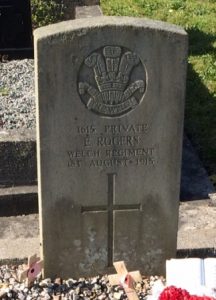
Thomas Humphrey Rogers, Private, 43205, Leicestershire Regiment. Thomas was the son of Herbert and Margaret Anne Rogers, of 2, Reservoir Road, Tanerdy, Carmarthen. He enlisted at Mountain Ash into the Welsh Regiment, but was posted to the 1st Battalion, Leicestershire Regiment, which had been in France since September 1914 attached to 71 Brigade, 6th Division. The Division had fought at Hooge in June 1915, and on the Somme throughout 1916. The following year saw them at Arras, where they fought at the Battle of Hill 70, and then during the Battle of Cambrai later in the year. The Division was one of those hit by the German Offensive on the Somme, which had been launched on 21 March 1918, and took part in the Battle of St Quentin. They were moved from the line, and went to Flanders to rest, but the following month the Germans launched another offensive on the Lys, and the Division again saw heavy fighting. During August 1918 the Allies had recovered sufficiently to be able to launch their own attacks on the Germans, and after a brilliant victory at Villers Brettoneux on 8 August, attacks were launched at Albert. The 6th Division took part in the Advance in Flanders, before moving south, where they took part in the advance on the Hindenburg Line. Thomas was killed in action at the Battle of Epéhy on 19 September 1918. He was just 20 years old, and is commemorated on the Vis-En-Artois Memorial, France.
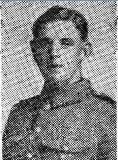
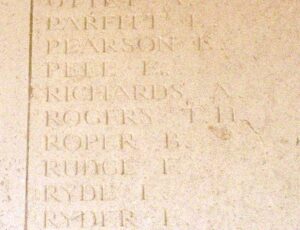
William Henry Russen, Private, 21969, Welsh Regiment. William was born in Marylebone early in 1895, and resided at Cwmmarch, Llandyssul prior to the war. He served with the 3rd Battalion, Welsh Regiment, which was a home service battalion, used for reinforcing the Welsh Battalions on the Western Front. William died of lockjaw on 25 October 1915, after cutting his leg during a riding accident. He was 21 years old, and is buried at Carmarthen Cemetery.
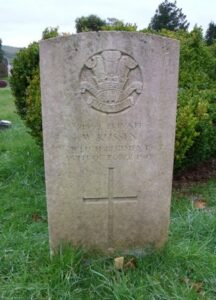
Allan Maxwell Ruston, MM, Second Lieutenant, Lancashire Fusiliers. Allan was born at Daventry in 1887, the son of Reverend Ruston. He was Assistant Master at Carmarthen Grammar School prior to the outbreak of war, and initially served with the 7th Battalion, Northamptonshire Regiment, landing in France on 31 August 1915 with the battalion. Allan was a Sergeant when he won the Military Medal while serving with the Northants, the award of which was gazetted on 2 June 1916. He was commissioned on 28 August 1917 into the 2nd Battalion, Lancashire Fusiliers, which was attached to 12 Brigade, 4th Division. Allan was killed during the First Battle of Kemmel, on 23 April 1918. He was 30 years old, and is buried at Mont-Bernanchon British Cemetery, Gonnehem, France.
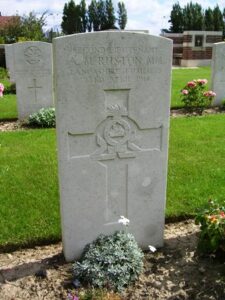
Mark Rutherford, Captain, Tank Corps. Mark was the son of Mark and Isabella B. Rutherford, of Union St., Carmarthen. He trained as a Solicitor, and married Annie Addison Proudfoot at Shepton Mallet in 1912. Annie sadly died in 1915. Mark was commissioned on 26 January 1917, and joined the 9th Battalion, Tank Corps, soon rising to Captain. The Battalion was initially designated as “I” Battalion, and comprised the 25th, 26th and 27th Tank companies. It fought through the Hindenburg line, at the opening stages of the Battle of Cambrai, near La Vacquerie, in support of 61 Brigade, 20th (Light) Division. The battalion was re-designated the 9th Battalion in January 1918, and from July 1918 onwards took part in the great advance. Mark was killed when his tank was destroyed at Moreuil, on 23 July 1918. He was 34 years old, and is buried at Roye New British Cemetery, France, alongside the crew of his tank.
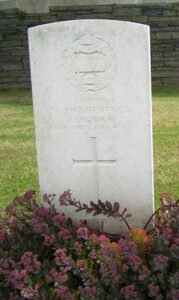
Frederick Charles Savage, Private, 266577, Northumberland Fusiliers. Frederick was the son of Charles Wesley and Jane Savage, of Mental Hospital Lodge, Carmarthen. He was married prior to the war, and lived with his wife, Laura Savage, at Mansfield Road, Rotherham, Yorkshire. Frederick enlisted at Rotherham into the army, and was posted to the 11th Battalion, Northumberland Fusiliers, which was attached to 68 Brigade, 23rd Division. The Division had been in France since August 1915, and had fought at the Somme. In May 1917 they took part in the Battle of Messines, before moving further north to Ypres, and fighting at the Battles of the Menin Road, Polygon Wood, and the First and Second Battles of Passchendaele. On 23 October 1917 orders were received to prepare to move, and the division entrained for Italy, where it assembled by 16 November 1917. On 4 December the Division took over a section of front line on the Montello, relieving the 70th Italian Division. Frederick was killed during the Battle of The Piave River on 15 June 1918. He was 34 years old, and is buried at Magnaboschi British Cemetery, Italy.
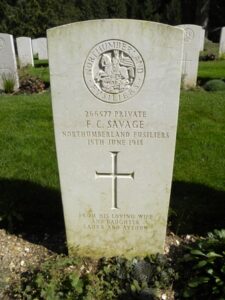
Henry Scourfield, Private, 44039, Royal Garrison Artillery. Henry was the son of Henry and Eliza Scourfield, of Hawkes Villa, Carmarthen. He was working at Gilfach Goch by the turn of the century, and married Hannah Beatrice Nicholas, of 10, Bryn Teg Terrace, Gilfach Goch on 24 July 1906. The couple had three daughters prior to Henry enlisting into the Royal Artillery. Henry served in France with 133 Heavy Battery, Royal Garrison Artillery from 24 June 1915, until being discharged on 15 January 1919. His time in France had taken a toll on his health, and Henry died on 4 April 1919, aged 35. He was buried with full military honours, four days later, at Glyn Ogwr Cemetery, Glamorgan. Henry is not commemorated by the CWGC.

John Clement Sharman, Private, 1373, 3rd County of London Yeomanry (Sharpshooters). John was born at Paddington in 1894, the son of Charles William and Mary Ann Sharman. He served at Gallipoli with the 3rd County of London Yeomanry, which was nicknamed the Sharpshooters. John was wounded at Gallipoli, and was evacuated by Hospital Ship to England. He died of his wounds at Carmarthen Infirmary on 14 April 1916, aged 21, and is buried at Hampstead Cemetery, London.
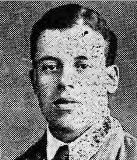
Benjamin Beattie Shaw, Private, 201069, Welsh Regiment. Benjamin was the son of Mrs. Annie Louisa Baggaley, of 8, Well Street, Castle Street, Leeds. He had worked as a farm servant at Cillefwr Farm, near Carmarthen for at least three years prior to the war, and enlisted at Carmarthen into the 1/4th Battalion, Welsh Regiment, which was the local Territorial Battalion, attached to 159 Brigade, 53rd (Welsh) Division. The Division landed at Cape Helles, Gallipoli, on 9 August 1915, and was immediately thrown into action, spending the next few days in isolated pockets, fighting against a Turkish counter-attack during the Battle of Sari Bair, and then at the Attack on Scimitar Hill. The Division remained here throughout the coming months, and suffered severe losses in manpower strength during the great November 1915 blizzard on Gallipoli, when its total strength was reduced to less than that of a full-strength Brigade. On 11 December 1915 the Division was evacuated to Mudros, and by 23 December 1915 were moved to Egypt. They remained on the Suez Canal Defences for the next twelve months, where it took part in operations against the Sultan of Darfur, and in March 1917 took part in the advance into Palestine. Benjamin was killed in action during the First battle of Gaza, on 26 March 1917, aged 24. He has no known grave, and is commemorated on the Jerusalem Memorial, Israel. Benjamin does not appear to be commemorated locally.
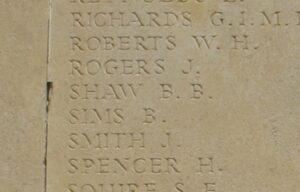
Stanley Short, Air Mechanic, 406173, Royal Air Force. Stanley was the son of Mr. and Mrs. Morgan Short of Abertillery. He married Esther Ann Lane at Carmarthen in 1912, and the couple lived at 20, Orchard Street, Carmarthen. Stanley served during the war with the 119th Squadron, Royal Air Force. He died at Staines on 3 November 1918, aged 25, and was brought home for burial at Carmarthen Cemetery. Stanley is not named on the County War Memorial roll.
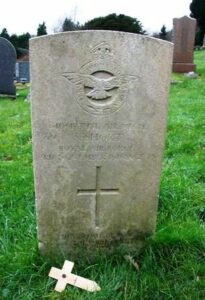
William Arthur Singer, Lance Corporal, 11123, Royal Fusiliers. William was born at Holloway in London, the son of William Arthur and Jessie Eliza Singer. He worked at the New Cross Hands Colliery, and married Elizabeth Jessica Rowlands, at Llandilofawr in 1910. The couple moved to 15, Cambrian Place, Carmarthen. William was a reservist, and returned to London to enlist at Woolwich into the Royal Garrison Artillery. He moved to France at the outbreak of war, but was wounded on the retreat to the Marne. Upon recovering, William was posted to the 32nd Battalion, Royal Fusiliers, who were attached to 124 Brigade, 41st Division. This Division was formed in September 1915, and moved to France by 6 May 1916, concentrating near Steenwerck, where they began familiarisation with trench warfare in the areas of Ploegsteert and the Douve valley, south of Ypres. They remained here until August 1916, when they moved to the Somme, and took part in the Battle of Flers-Courcelette. William was killed during the following Battle of Le Transloy on 15 September 1916. He is commemorated on the Thiepval Memorial, France.
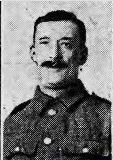
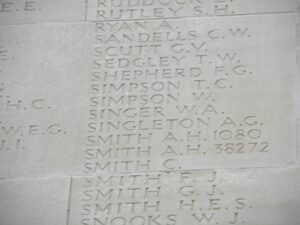
John Herbert Somers, Rifleman, 554020, London Regiment. John was the son of Mary Somers, of Hackney. He married Gwladys Evans, of King Street, Carmarthen, and the couple lived in the town before moving to 33, Drummond Road, Little Bromwich, after John had found work at Yardley Road Hospital, Birmingham. He enlisted in Birmingham into the army, and was posted to the 16th Battalion, London Regiment (Queen’s Westminster Rifles). The battalion was attached to 169 Brigade, 56th (London) Division. John joined the battalion in France at the end of 1916, and was with the battalion when it followed the German retreat to the Hindenburg Line in March 1917. The division then took part in the Battle of Arras, before moving north and taking part in the Third Battle of Ypres later that year. The Division was in the Arras sector when the German Spring Offensive was launched on 21 March 1918. In August it took part in the great offensive, and it was during this period that John was wounded in the stomach. He died of his wounds in hospital on 6 September 1918, aged 32, and is buried in St. Sever Cemetery Extension, Rouen. John is not commemorated locally.

Patrick Sullivan, Gunner, 71714, Royal Garrison Artillery. Patrick was the stepson of Samuel Lane, of 7, Spring Gardens, Carmarthen, and the brother of John Sullivan, of 6, Mason’s Yard, Lammas Street, Carmarthen. He resided at 12, Buckingham Place, Carmarthen prior to the war and enlisted at Carmarthen into the Royal Garrison Artillery on 10 December 1915. Patrick was posted to the 49th Siege Battery in France on 3 September 1916. Patrick was killed during the Battle of Passchendaele, on 14 October 1917. He was 34 years old, and is buried at Minty Farm Cemetery, Belgium. His step-brother, Samuel Collins Lane, also fell. Patrick is not named on the County War Memorial Roll.

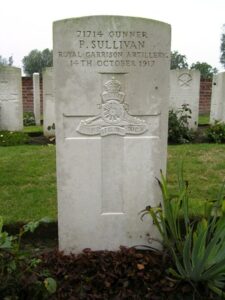
Frederick George Tansill, Private, 42156, East Yorkshire Regiment. Frederick was the son of George and Catherine Tansill, of 1, Towy Villa, Station Road, Carmarthen. He worked at the GWR Depot at Carmarthen prior to enlisting at Carmarthen into the army. He was posted to the 1/4th Battalion, East Yorkshire Regiment, which was attached to 150 Brigade, 50th (Northumbrian) Division. The Division had been in France since April 1915, and had fought at Ypres and on the Somme. During 1917 they fought at the Battle of Arras, then at Third Ypres. During March 1918 they were stationed near St. Quentin, and were hit here by the German Spring Offensive of 21 March 1918, taking part in a gallant rearguard action during the Actions at the Somme Crossings, and then at the Battle of Rosieres. After suffering terrible casualties, the Division moved north to Flanders to rest and rebuild, but in April the Germans launched an attack in Flanders, around the Lys, and the Division saw much fighting again. The battered Division was moved to a quiet sector on the Aisne to rebuild, but unfortunately the Division was hit hard by a surprise enemy attack, suffered heavy casualties. Frederick was killed on the Aisne on 8 September 1918. He was 19 years old, and is buried at St. Erme Communal Cemetery Extension, France. His elder brother William also fell.

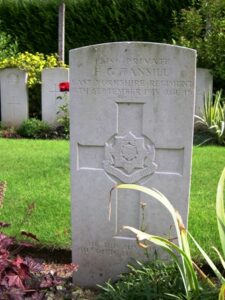
William James Tansill, Sapper, 448488, Royal Engineers. William was the son of George and Catherine Tansill, of Towy Villa, Old Station Road, Carmarthen. He worked as an Engine Cleaner at the GWR Depot at Carmarthen prior to the war. And enlisted at Carmarthen into the Welsh Field Company, Royal Engineers. The Company served at Gallipoli with the 53rd (Welsh) Division, before being evacuated to Egypt in January 1916, where it was renamed the 437th Field Company. It remained on the Suez Canal defences for a year, then in March 1917 took part in the advance into Palestine. William became ill and died of dysentery on 29 July 1917, aged just 22. He is buried at Alexandria (Hadra) War Memorial Cemetery, Egypt. His brother Frederick also fell.

Dudley Elliston Taylor, MSM, Corporal, 12222, Cavalry. Dudley was the son of Frank and Lavinia Taylor, of 23, Francis Terrace, Carmarthen. He enlisted at Carmarthen into the army, and served with the 2nd Dragoon Guards, attached to the 1st Cavalry Division. Dudley married Edith Bennett, of Llanelli while on leave in 1915. He was wounded in France during April 1917, and was brought back to England for treatment. Upon his return to the front, he was awarded the Meritorious Service Medal in the London Gazette of 14 June 1918 for valuable services in France. He took ill during the final stages of the war, and died on 10 November 1918, aged 25. Dudley is buried at Carmarthen Cemetery.
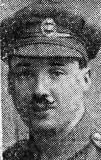
David Thomas, Private, 54182, Welsh Regiment. David was the son of George and Maria Thomas, of 28, Orchard Street, Carmarthen. He was a collier at Ponthenry prior to the war, and enlisted at Carmarthen into the army. He was posted to France to join the 13th Battalion, Welsh Regiment, which was attached to 114 Brigade, 38th (Welsh) Division. David probably joined the battalion at Boesinghe, after the Divisions mauling in the capture of Mametz Wood. David was killed during a wiring patrol near the Hill Top trenches on 30 November 1916. He is buried at Essex Farm Cemetery, Belgium. His brother Robert fell on 30 July 1918.
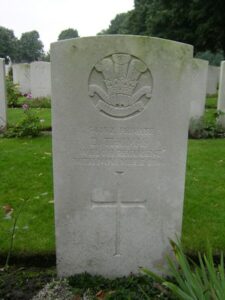
David Lewis Thomas, Private, 320496, Welsh Regiment. David was the son of John and Mary Thomas, of Tyrdu, Llangunnor. He enlisted at Carmarthen into the Pembroke Yeomanry, which moved to Norfolk attached to the 1st Mounted Division. In March 1916 the Division moved to Egypt, and took over the Suez Canal Defences. In March 1917 the Pembroke and Glamorgan Yeomanry merged to form the 24th Battalion, Welsh Regiment, and became part of 231 Brigade, 74th (Yeomanry) Division. The Division fought through the Palestinian Campaign, at the Battles of Gaza and the Battle and capture of Jerusalem. David was killed during the attack on the Sheria heights on 6 November 1917. He was 25 years old, and is buried at Beersheba War Cemetery, Israel.

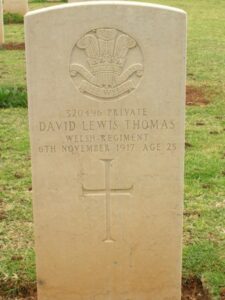
David Lodwig Thomas, Private, 1470, Monmouthshire Regiment. David was the son of John and Mary Thomas, of 27, Market Street, Tredegar. He was the Grandson of Evan Thomas, of 64, Lammas Street, Carmarthen, and spent a considerable time in the town, prior to enlisting at Tredegar into the 3rd Battalion, Monmouth Regiment. The battalion landed in France on 14 February 1915, and joined 83 Brigade, 28th Division. On 2 September 1915 it was transferred as Pioneer Battalion to 49th (West Riding) Division, which was at the Canal Bank, Ypres. David was at Elverdinghe with the battalion on 29 December 1915, when the Germans shelled the area, causing 69 casualties to the battalion. He was 20 years old when was killed in the shelling, and is buried at Ferme-Olivier Cemetery, Belgium. David is not named on the County War Memorial Roll.
Edward Thomas, Private, 25991, Welsh Regiment. Edward was born at Carmarthen, and resided at Penygraig prior to the war. He enlisted at Tonypandy into the Welsh Regiment, and was posted to the 2nd Battalion, Welsh Regiment, which was in France attached to 3 Brigade, 1st Division. Edward probably joined the battalion before its move to the Somme, and would have taken part in the Somme offensive of July 1916. They followed the German retreat to the Hindenburg Line in early 1917, and then moved to the Flanders Coast during the summer of 1917, but were moved to Ypres, where they fought at the Second Battle of Passchendaele. After spending another winter in Flanders, they were near Estaires when the German Spring Offensive caught them, and saw heavy fighting over the coming weeks. Edward was wounded sometime after this, and died on 5 May 1918. He is buried at Lapugnoy Military Cemetery, France.
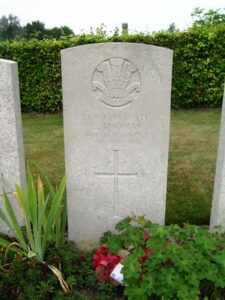
Edwin Isaac Thomas, Corporal, 200457, Welsh Regiment. Edwin was the son of John and Mary Thomas, of 52, Little Water Street, Carmarthen. He worked as a Time and Store Keeper at the GWR Depot at Llanelli prior to the war. Edwin lived at 75, Priory Street, Carmarthen, with his wife and two young children. He enlisted into the army, and served as a sergeant-instructor in a signalling section for several months, prior to going to Egypt in February 1917, where he joined the 1/5th Battalion, Welsh Regiment. The battalion was attached to 159 Brigade, 53rd (Welsh) Division, and was preparing for the advance into Palestine. Edwin was killed in action during the Third Battle of Gaza, on 3 November 1917. He was 27 years old, and is buried at Beersheba War Cemetery, Israel.

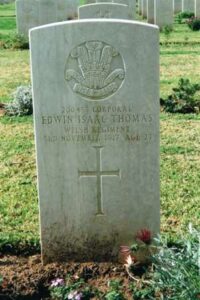
Emrys Thomas, Gunner, 83236, Canadian Field Artillery. Emrys was born on 12 November 1890, the son of James and Anne Thomas, of Brynhyfryd, Carmarthen. He had emigrated to Canada prior to the war, and took up work as a book-keeper, but enlisted into the Canadian Expeditionary Force at Toronto on 16 February 1915. Emrys was posted to the Canadian Field Artillery. It is not presently known if Emrys served on the Western Front, but he took ill with appendicitis after the war, and died in Canada on 6 June 1919. Emrys was 28 years old, and is buried at Toronto (Prospect) Cemetery, Canada.
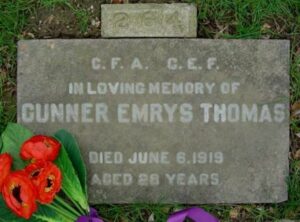
Henry Thomas, Rifleman, 7089, Rifle Brigade. Henry was born at Carmarthen. He lived at Abercynon prior to the war and enlisted at Cardiff into the 3rd Battalion, Rifle Brigade. The battalion moved to France on 10 September 1914 attached to 17 Brigade, 6th Division. The division reinforced the BEF on the Aisne, and then moved to positions in Flanders. Henry was killed in action during the time of the Battle of Langemark, on 27 October 1914. He is buried in Y Farm Military Cemetery, Bois-Grenier, France. Henry is not commemorated locally.
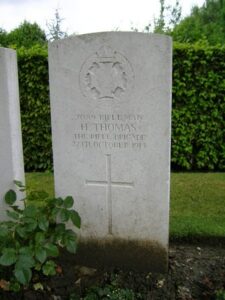
Hugh Spencer Thomas, Second Lieutenant, Royal Air Force. Hugh was the son of John Henry and Elizabeth Anne Thomas, of 7, Spilman Street, Carmarthen. He gained a commission into the Royal Flying Corps in November 1917, where he trained as a pilot. After his training, Hugh was posted to 27 Squadron, Royal Air Force, which was based in France flying the DH4. On 29 September 1918, Hugh was piloting DHP, Serial D3172 on a bombing run over Busigny, when his aircraft came under attack from a German fighter from Jasta 5, piloted by Unterofficer K. Treiber. At 08.45, Hugh’s aircraft was shot down and crashed, killing Hugh, and his Observer, Thomas Brown. Hugh was 19 years old, and is buried at Esquelbecq Military Cemetery, France. His Observer, Second Lieutenant Thomas Brown, is buried at Escaufourt Communal Cemetery, France.
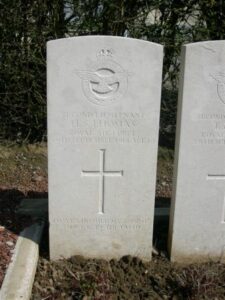
James Lloyd Thomas, Private, 285170, Gloucestershire Regiment. James was the son of Arthur and Maria Thomas, of Little Newcastle, Letterston, Pembrokeshire. He probably worked at Carmarthen prior to the war, and enlisted there into the army. James was posted to the 2/6th Battalion, Gloucester Regiment, which was attached to 183 Brigade, 61st (2nd South Midland) Division. The Division moved to the Western Front on 21 May 1916, moving to positions at Fromelles, where it was decimated during the 19 July 1916 attack on Fromelles, a subsidiary action to the Somme offensive. In March the Division followed the German withdrawal to the Hindenburg Line, and fought at the Battle of Langemarck later that year. The Division then moved south, and took part in the Battle of Cambrai, between 20 November and 7 December 1917. James died near La Vacquerie on 2 December 1917. He was 20 years old, and is commemorated on the Cambrai Memorial, Louverval, France.
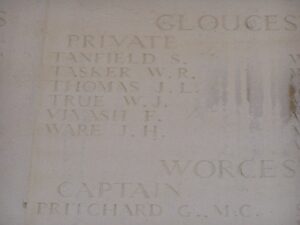
John Thomas, Private, G/20838, East Kent Regiment. John was born at Northampton in 1894, the son of David and Margaret Thomas. He resided at Llangynin prior to the war, and enlisted at Carmarthen into the army. John was posted to the 1st Battalion, East Kent Regiment, which was in France attached to 16 Brigade, 6th Division. The Division had been on the Western Front since 10 September 1914, and had fought on the Aisne. It had fought in Flanders until 1916 when it took part in the Somme offensive. In 1917 it had fought at Arras and Cambrai. In the spring of 1918 the Division was one of those hit by the German Offensive on the Somme, which had been launched on 21 March, and took part in desperate fighting. John was killed on the first day of the offensive, on 21 March 1918. He has no known grave, and is commemorated on the Arras Memorial, France.
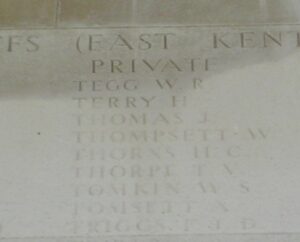
John Edward Thomas, Corporal, 40215, Royal Welsh Fusiliers. John was the son of Samuel and Sarah Thomas, of 64, Priory Street, Carmarthen. He enlisted at Carmarthen into the army, and was posted to France, where he joined the 17th Battalion, Royal Welsh Fusiliers, who were attached to 115 Brigade, 38th (Welsh) Division. John probably joined the battalion at Boesinghe, after it had taken part in the capture of Mametz Wood, and would had taken part in the attack on Pilckem Ridge on 31 July 1917. The Division took up positions around Armentieres over the winter, before being moved to the Somme in April 1918, and held the line around Aveluy Wood for several months. On 21 August 1918, elements of the 38th Division crossed the flooded River Ancre, and began a drive across the old battlefields over the coming days. The Division captured High Wood on 26 August, and then made towards Longueval. John was killed near Delville Wood on 30 August 1918. He was 29 years old, and is commemorated on the Vis-En-Artois Memorial, France.
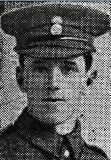
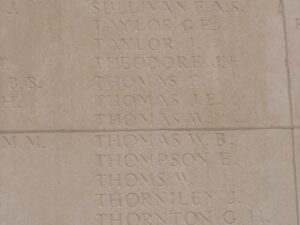
Joseph Lewis Thomas, Private, 20659, Welsh Regiment. Joseph was the son of David and Sarah Thomas of Tawelan, College Road, Carmarthen. He enlisted during March 1915 at Carmarthen, into the 15th Battalion, Welsh Regiment, which was known as the Carmarthen Pals battalion, attached to 114 Brigade, 38th (Welsh) Division. On 2 December 1915 the battalion moved to France, and the entire Division moved to the Fleurbaix sector, where it was initiated into trench warfare. During June 1916 the Division marched south to the Somme, and on 7 July 1916 attacked Mametz Wood. The initial attack failed, and it was three days later, on 10 July, that a fresh attack was mounted. After two days of heavy hand to hand fighting within the wood, the Germans withdrew, and the battered Welshmen moved via Hebuterne to Boesinghe, on the Yser Canal, where it remained until launching its attack on Pilckem Ridge on 31 July 1917. Joseph was killed at Pilckem on 1 August 1917. He was 21 years old, and is commemorated on the Ypres (Menin Gate) Memorial, Belgium. Joseph does not seem to be commemorated locally.
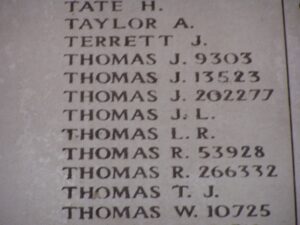
Lewis William Marles Thomas, Second Mate, Mercantile Marine. Lewis was the son of Reverend William Marles Thomas and Mary Marles Thomas of Llandyssul, Cardiganshire. He served with the Mercantile Marine as Second Mate on the SS Daleby, a West Hartlepool registered steamer. On 29 April 1917, Daleby was 180 miles off Fastnet Rock when she was struck by two torpedoes from the German submarine U-70, and sank with the loss of 28 lives. Lewis was 40 years old when he died that day, and is commemorated on the Tower Hill Memorial, London.
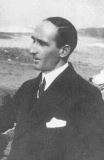
Rhys Ivor Thomas, MC, Lieutenant, Connaught Rangers. Rhys was born on 2 November 1890, the son of Lt. Col. George Tucker Thomas and Sarah Mary Thomas. He was Gazetted into the Connaught Rangers on 20 April 1910, and promoted Lieutenant on 23 October 1912. At the outbreak of war, Rhys was serving with the 1st Battalion, Connaught Rangers, which was at Ferozepore, India, as part of 7th (Ferozepore) Brigade, 3rd (Lahore) Division. The division sailed from Karachi on 28 August 1914 as part of the Indian Corps and moved to France, landing at Marseilles on 26 September 1914, moving to support the BEF on the Aisne. Rhys was awarded the Military Cross in the London Gazette of 29 September 1914. He was one of the first men to have ever gained this new award. Sadly he was killed during the Battle of the Aisne on 14 September 1914, and is buried at Vailly British Cemetery, France. He was 24 years old. Rhys is not named on the Carmarthen County War Memorial Roll, but is commemorated on an individual plaque within St. Peters Church.
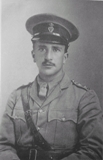
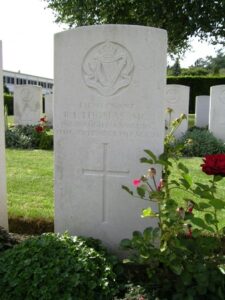
Robert Thomas, Private, 201073, Welsh Regiment. Robert was the son of George and Maria Thomas, of 28, Orchard Street, Carmarthen. He worked as a collier at Ponthenry prior to the war, and enlisted at Carmarthen into the 1/4th Battalion, Welsh Regiment, which was the local Territorial Battalion, attached to 159 Brigade, 53rd (Welsh) Division. The Division landed at Cape Helles, Gallipoli, on 9 August 1915, and was immediately thrown into action, spending the next few days in isolated pockets, fighting against a Turkish counter-attack during the Battle of Sari Bair, and then at the Attack on Scimitar Hill. The Division remained here throughout the coming months, and suffered severe losses in manpower strength during the great November 1915 blizzard on Gallipoli, when its total strength was reduced to less than that of a full-strength Brigade. On 11 December 1915 the Division was evacuated to Mudros, and by 23 December 1915 were moved to Egypt. They remained on the Suez Canal Defences for the next twelve months, where it took part in operations against the Sultan of Darfur, and in March 1917 took part in the advance into Palestine. Robert was wounded in Palestine, and died on 13 July 1918. He was 25 years old, and is buried at Jerusalem War Cemetery, Israel. His brother David had fallen on 30 November 1916.
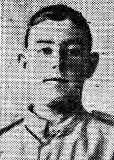
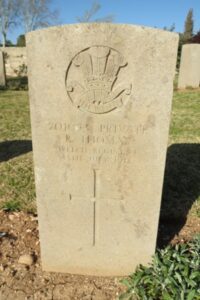
William Thomas, Private, 2539, Welsh Regiment. William was born at Carmarthen, and enlisted at Ferndale into the 10th Battalion, Welsh Regiment. The battalion moved to France during December 1915 attached to 114 Brigade, 38th (Welsh) Division, and took up positions in the Nursery Sector near Fleurbaix. William took ill soon after landing in France, and returned to England, where he died in hospital at Portsmouth on 10 March 1916, aged 43. William is buried at Portsmouth (Eastney or Highland Road) Cemetery, Hampshire.
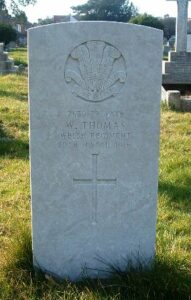
William Thomas, Private, 13830, Welsh Regiment. William was the son of David and Catherine Thomas, of 36, Water Street, Carmarthen. He enlisted at Carmarthen at the outbreak of war into the 9th Battalion, Welsh Regiment, which moved to France during July 1915 attached to 58 Brigade, 19th (Western) Division. The 9th Welsh moved to positions north of Givenchy. On 25 September 1915 the Battle of Loos was launched. The 9th Welsh rose from their trenches and began their assault on the opposing German lines, but were mown down by machine-gun fire. William was one of over 200 casualties suffered by the battalion that morning. He was 28 years old and is buried at Brown’s Road Military Cemetery, Festubert, France.

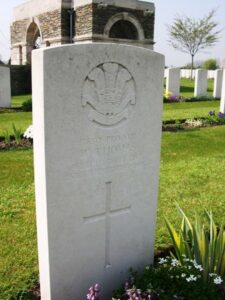
William Thomas, Sapper, 145553, Royal Engineers. William was the son of David and Margaret Thomas, of 9, St. David Street, Carmarthen. He enlisted at Carmarthen on 11 December 1915 into the Royal Engineers, and on 9 October 1916 moved to Salonika with the 99th Field Company, attached to the 22nd Division. William took ill with emphysema at Salonika, and was evacuated to one of the military hospitals at Malta, where he died during an operation on 12 June 1918. William was 33 years old, and is buried at Pieta Military Cemetery, Malta.
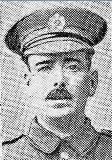
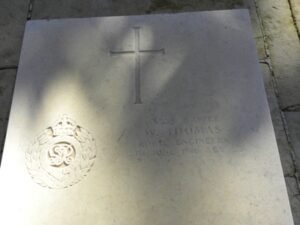
William John Thomas, Driver, T/261582, Royal Army Service Corps. William was born at Carmarthen in 1899, the son of Reverend William Edgar Thomas and Ellen Ann Thomas. William’s father died in 1904, and his mother married Charles Knight, moving the family to 26, Mark Street, Riverside, Cardiff. William enlisted at Cardiff into the Army Service Corps. He probably remained on home service, and died at Cannock Chase Military Hospital on 11 July 1918, aged just 18. William is buried at Cardiff (Cathays) Cemetery. William is not commemorated locally.
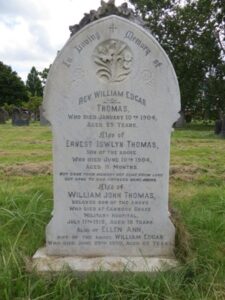
Donald Robert Keys Wallace, Private, 49811, Royal Fusiliers. Donald was born at Carmarthen in 1884, the only son of Edmund Tilbury Russell Wallace and Alice Wallace. He married Hilda Margaret Bushell at West Ham in 1916, and she set up home at 32, Price’s Avenue, Cliftonville, Margate, Kent. Donald had enlisted at Whitehall into the Royal Fusiliers. Donald was posted to the 26th Battalion (Bankers), Royal Fusiliers, which was attached to 124 Brigade, 41st Division. This Division moved to France by 6 May 1916, and began familiarisation with trench warfare in the areas of Ploegsteert and the Douve valley, south of Ypres. They remained here until August 1916, when they moved to the Somme, and took part in the Battle of Flers-Courcelette. The Division remained in the line, pushing on to Courcelette over the next few days before coming out for a rest and re-fit. They then fought at the Battle of Le Transloy, before moving to positions south of Ypres in 1917. Here they took part in the Battle of Messines. Donald was killed at Messines on 19 June 1917. He was 33 years old, and is commemorated on the Ypres (Menin Gate) Memorial, Belgium. Donald is not commemorated locally.
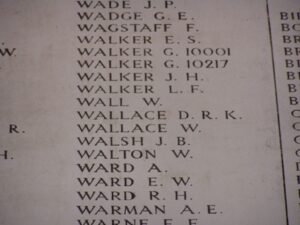
Edward Bertram Walters, Private, 4275, Welsh Regiment. Edward was the son of Adam and Margaret Walters, of Pengam, Cardiff. He was a Student at the South Wales Training College, Carmarthen at the outbreak of war, and enlisted there into the 1/4th Battalion, Welsh Regiment, which was the local Territorial Battalion, attached to 159 Brigade, 53rd (Welsh) Division. The Division landed at Cape Helles, Gallipoli, on 9 August 1915, and was immediately thrown into action, spending the next few days in isolated pockets, fighting against a Turkish counter-attack during the Battle of Sari Bair, and then at the Attack on Scimitar Hill. Edward was killed here on 10 August 1915. He was 23 years old, and is buried at Green Hill Cemetery, Gallipoli. Edward is not named on the County War Memorial roll.
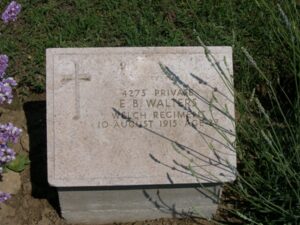
Frederick George Walters, Private, 11965, South Wales Borderers. Frederick was born at Carmarthen in 1882, the son of Robert and Ann Walters. Ann later resided at 573, Neath Rd., Morriston, and Frederick enlisted at Kidwelly into the 1st Battalion, South Wales Borderers, which was attached to 3 Brigade, 1st Division. The Division had been one of the first to arrive in France, fighting at the Battle of Mons, and taking part in the retreat to the Marne, where the Germans were stopped. They then fought at the Aisne, and at Chivy, before being moved north to Ypres. Here they fought at the First Battle of Ypres, where they again stopped the German Offensive, before wintering in Flanders. The following year saw them in action again at the Battle of Aubers, before moving South to Loos, where they fought during the Battle of Loos, and the action at the Hohenzollern redoubt. Frederick was killed at Loos the following year, on 31 March 1916. He was 33 years old, and is commemorated on the Arras Memorial, France. Frederick is not commemorated on the County War Memorial roll.
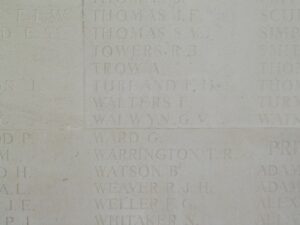
George Herbert Walton, Private, 200940, Welsh Regiment. George was the son of William Harrison Walton and Mary Walton, of 73A, Lammas Street, Carmarthen. He enlisted at Carmarthen on 1 November 1913 into the 4th Battalion, Welsh Regiment, which was the local Territorial battalion. George doesn’t seem to have served overseas, but took ill while in camp at Dale, and was discharged with a pension from the 4th Welsh as unfit on 13 September 1917. He died on 5 November 1918, aged 25, and is buried at Carmarthen (St. David) Churchyard.
Richard Henry Watson, Leading Mechanic, F/3307, Royal Naval Air Service. Richard was born in Hong Kong on 10 September 1895, the son of H. J. Watson and Emmeline Watson. After his father’s death, Emmeline moved the family back to 47, Lammas Street, Carmarthen. Richard and his brother Arthur attended Carmarthen Grammar School prior to the war, and were both members of Carmarthen Harlequins Rugby Club. At the beginning of the war they both enlisted, and Richard joined the Royal Naval Air Service as a Mechanic. Richard was posted to the Dunkerque Air Station, and in April 1917 a report appeared in the Carmarthen Journal that both brothers had been reported missing during that month. Arthur turned up as a Prisoner of War in Germany after having been shot down whilst serving with the Royal Flying Corps, but Richard was discovered to have been shot down whilst flying a HP 0/100 off Nieuport, and taken prisoner. He died of wounds on 26 April 1917, aged just 22, and is commemorated on the Chatham Naval Memorial, Kent.
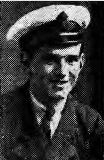
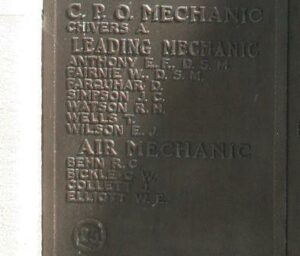
Henry Thompson White, Lieutenant, Welsh Regiment. Henry was the son of John Davies White and Lucy Thompson White, Chemists, of Guildhall Square, Carmarthen, and was the brother-in-law of the Vicar of Llangunnor. He worked for the London and County Bank in London as a Bank Clerk prior to the war, and married Kathleen Marion Vereker in London on 16 August 1911. Henry enlisted into the 19th Battalion, Royal Fusiliers. On 6 April 1915 Henry was commissioned into the 3rd Battalion, Welsh Regiment, and was then posted to the 1st Battalion, Welsh Regiment, which was attached to 84 Brigade, 28th Division. On 28 September the 1st Welsh launched an attack at Loos against the Hohenzollern Redoubt. Henry was wounded during the fighting, and after a brief spell in hospital was posted to the 2nd Battalion, Welsh Regiment, which was attached to 3 Brigade, 1st Division. The division was by then on the Somme, and was caught up in heavy fighting around High Wood and Munster Alley. On 8 September 1916 the 2nd Welsh moved through Munster Alley towards High Wood, where 3 Brigade had been tasked with the capture of the wood. The Welsh lost heavily in the attack, with seven officers and 66 other ranks killed or missing. Henry was among the officers posted as missing during the assault on High Wood that day, and was 37 years old. For some strange reason, he is commemorated on the Jerusalem Memorial, Israel! As of today (28 August 2013) the CWGC have accepted my evidence that Henry was wrongly commemorated, and his name will be added to the new France 1914-1918 Memorial when it is built.
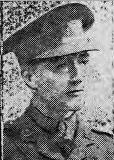
James Wightman, DSO, MC, Major, East Surrey Regiment. James was the son of James and Sarah Wightman, of Harras Moor, Whitehaven, Cumberland. He was a Student at Carmarthen College when he met his future wife, Eleanor Gertrude Morris, the daughter of William and Hetty Morris, of 2, Tabernacle Terrace, Carmarthen, and they married at Carmarthen in 1915. James was a promising footballer before the war, and was Captain of Barry Town FC during their final pre-war season of 1913-1914. At the outbreak of war, James was a Teacher at Troedyrhiw, and enlisted as a Private. He gained rapid promotion, and by 1915 was a Captain with the 8th Battalion, East Surrey Regiment. The battalion was attached to 55 Brigade, 18th (Eastern) Division, and landed in France on 25 May 1915. The Division saw its first major action during the Battle of the Somme. On the first day of the battle, 1 July 1916, the 8th East Surreys attacked at Montauban, famously by kicking two footballs out into no man’s land. On 30 September the battalion attacked the Schwaben Redoubt, and William gained the award of the Military Cross for his bravery there; ‘For conspicuous gallantry in action. He led a bombing party with great courage and determination, and repulsed the enemy. He acted as leading thrower, and threw bombs continuously for two hours. He has previously done fine work to advance the attack.’ In March 1917 the division followed the German Retreat to the Hindenburg Line, and in May took part in the Third Battle of the Scarpe, which was part of the Arras Offensive. July 1917 saw the Division at Ypres, where they took part in the Battle of Pilckem, where they helped capture Westhoek, and then they fought at Langemarck, and at Passchendaele. The Division then moved to the St. Quentin sector over the winter, where they were hit by the German Spring Offensive of 21 March 1918, and took part in heavy fighting, which led to the award of the Distinguished Service Order to James. James sadly became injured by a hand grenade around this time, and died on 9 April 1918. He was 25 years old, and is buried at Picquigny British Cemetery, France.
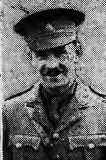
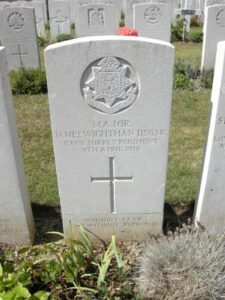
George Wilby, Private, 18681, Wiltshire Regiment. George was born at York, and married Elizabeth Lovelock at Carmarthen in 1914. They set up home at 63, Catherine St., Carmarthen. George enlisted at Carmarthen into the army, and was posted to the 5th Battalion, Wiltshire Regiment, which was attached to 40 Brigade, 13th (Western) Division. . On 13 June 1915 the Division sailed for Alexandria, and moved to Mudros before being landed at Cape Helles, Gallipoli from 6 July 1915, relieving the 29th Division. They left and returned to Mudros at the end of the month, and the entire Division landed at ANZAC Cove from 3 August 1915. George was killed here during the Battle of Sari Bair, on 10 August 1915. He was 27 years old, and is commemorated on the Helles Memorial, Gallipoli. Elizabeth married Daniel McCarthy at Carmarthen in June 1918.
John Wilcox, First Engineer, Mercantile Marine. John was born at Carmarthen in the summer of 1886, the son of William and Mary Wilcox. He married Florence Roberts at Swindon in 1912, and the couple lived at 61, Kent Rd., Swindon. John served with the Mercantile Marine, aboard the cargo steamer SS Antinoe. On 28 May 1917 Antinoe was on route from Seville for Newport with a cargo of ore, when she was torpedoed and sunk by the German submarine U-86. John was 31 years old when he died that day, and he is commemorated alongside his ship mates on the Tower Hill Memorial, London. John is not commemorated on the County War Memorial roll.
Wenden Ray Wilde, Lance Corporal, 10059, Royal Fusiliers. Wenden was born in 1893, the son of William and Susannah Eliza Wilde, of Carr Lane, Greenfield, Yorks. He had gained the BSc, 1st Class Honours, and served with the O.T.C. prior to taking up a position as Senior Mathematics Master at Carmarthen Grammar School. He enlisted on 10 January 1916 into the 20th Battalion (3rd Public Schools), Royal Fusiliers, which was in France attached to 19 Brigade, 33rd Division. Wenden saw action at High Wood later that year. He had been recommended for a commission on the field, but was killed during the First Battle of the Scarpe, on 16 April 1917, before he could accept it. He was 24 years old, and is commemorated on the Arras Memorial, France. Wenden is not named on the County War Memorial Roll.
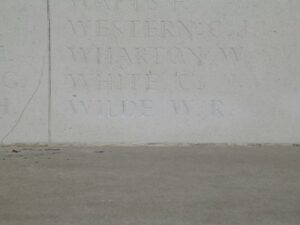
Aled Williams, Wireless Operator, Royal Navy. Aled was born in Patagonia, the son of Mr J. S. Williams. The family was originally from Carmarthen, and in May 1912 moved back to the town, buying Merlin Lodge. Aled and his brother Elfed enlisted into the Royal Navy at the outbreak of war, and both trained as Wireless Operators. Aled served for two and a half years aboard a hospital ship, but returned to Carmarthen after his health broke down. He died at home on 12 February 1918, aged 21, and was buried in Nantgaredig Methodist Chapelyard. Aled is not commemorated by the CWGC.

Arthur Charles Williams, Air Mechanic 3rd Class, 111633, Royal Air Force. Arthur was the son of Henry and Margaret Williams, of St. Peters, Carmarthen. He married Minnie Lissette Emmerson at Newport in 1901, and the couple later lived at 78, St. Stephen’s Avenue, Shepherd’s Bush, London. Arthur served during the war as an Air Mechanic with the Royal Air Force. He became ill, and died at Hendon on 12 December 1918, aged 49, and is buried at Hendon Cemetery, Middlesex.
Charles Williams, Private, 6523, Royal Welsh Fusiliers. Charles was the son of James and Margaret Jones Williams, of Lammas Street, Carmarthen. He enlisted at Wrexham on 28 January 1915 into the Royal Welsh Fusiliers, and was posted to the 1st Garrison Battalion, Royal Welsh Fusiliers, which was stationed at Gibraltar. Charles fell ill, and died at Gibraltar on 23 August 1917. He was 56 years old, and is buried at Gibraltar (North Front) Cemetery, Gibraltar. Charles is not named on the County War Memorial roll.
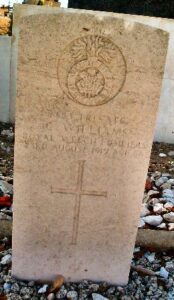
Ernest John Williams, Private, 18242, Notts & Derby (Sherwood Foresters). Ernest was born at Carmarthen, and enlisted at Matlock into the 12th Battalion, Sherwood Foresters, which was attached to the 24th Division, as the Pioneer battalion. The Division moved to France during August 1915 and marched to positions near Loos, where they took up reserve positions for the main Battle of Loos. In 1916 they took part in the Battle of the Somme, and fought at Delville Wood and Guillemont, before moving north of Arras in early 1917. In April and May 1917 they fought at the Battle of Vimy, alongside the Canadian Corps, and in June they moved to positions south of Ypres, where they fought during the Battle of Messines. After the successful capture of Messines Ridge, the Division moved further north, and fought at the Battles of Pilckem and Langemarck during Third Ypres. Ernest was killed at Langemarck on 11 August 1917. He is commemorated on the Ypres (Menin Gate) Memorial, Belgium. Ernest is not names on the County War Memorial roll.
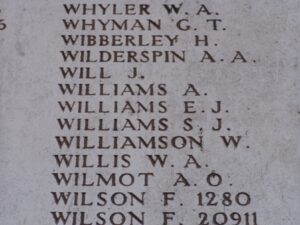
John Williams, Private, 12731, Welsh Regiment. John was the son of Griffith and Mary Gwen Williams, of 63, Miskin Street, Treherbert (Rhondda). He worked at Carmarthen prior to the war, and enlisted there into the 8th Battalion, Welsh Regiment. The battalion landed at Anzac Cove, Gallipoli on 5 August 1915 as Pioneers to the 13th (Western) Division. They were thrown into desperate fighting soon after landing. John was killed on 8 August 1915, just three days into his war. He was 21 years old, and is commemorated on the Helles Memorial, Gallipoli. John is not named on the County War Memorial Roll.
John Henry Williams, Private, 3135, Welsh Regiment. John was the son of John and Amelia Williams, of 3, Mason’s Yard, Lammas Street, Carmarthen. He enlisted at Carmarthen in 1909 into the 1/4th Battalion, Welsh Regiment, which was the local Territorial Battalion, attached to 159 Brigade, 53rd (Welsh) Division. The Division landed at Cape Helles, Gallipoli, on 9 August 1915, and was immediately thrown into action, spending the next few days in isolated pockets, fighting against a Turkish counter-attack during the Battle of Sari Bair, and then at the Attack on Scimitar Hill. John was posted was missing, believed killed in action here on 10 August 1915. He was 34 years old, and is commemorated on the Helles Memorial, Gallipoli.
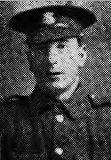
Kenneth George Williams, Second Lieutenant, Machine Gun Corps. Kenneth was the Eldest son of William E. Williams, Traffic Manager for the Great Western Railway, Northern Ireland, and of Annie Williams of Belfast. He was the Grandson of Eliza Williams, of 24, Richmond Terrace, Carmarthen, and was well known in the town, where he spent all of his school holidays. He enlisted in September 1915, and was commissioned in March 1915. Kenneth went to France in March 1916 with the 74th Company, Machine Gun Corps, which was attached to the 25th Division. He was killed on the Somme on 21 October 1916, during a German attack near Stuff Redoubt. He was 19 years old, and is commemorated on the Thiepval Memorial, France. Kenneth is not named on the County War Memorial Roll.
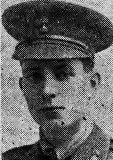
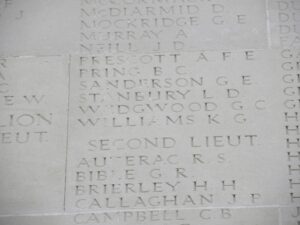
William James Minister Williams, Second Lieutenant, Royal Welsh Fusiliers. William was the son of William James Williams and Gertrude Elizabeth Williams, of Cambray House, Carmarthen. In 1915 both William and his elder brother Harold were commissioned into the Royal Welsh Fusiliers, and William joined the 2nd Battalion, which had been in France since the outbreak of war. Over the winter of 1915/1916 the Battalion was attached to 19 Brigade, 33rd Division, and had taken part in the Battle of Loos, being based just north of the town, near Cambrin. William was killed in action during a routine spell in the trenches here on 7 February 1916. He was just 21 years old, and is buried at Cambrin Churchyard Extension, France.
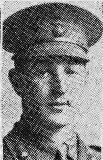
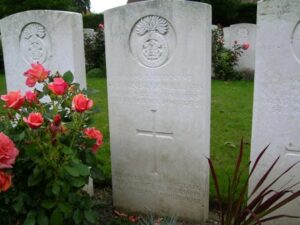
William John Williams, Private, 11669, Welsh Regiment. William was the son of John and Alice Williams, of 4, Woods Row, Carmarthen. He enlisted at Carmarthen into the 8th Battalion, Welsh Regiment, which was formed at Cardiff in August 1914, moving to Parkhouse, Salisbury Plain in 40 Brigade, 13th Division. In January 1915 they became the Pioneer Battalion to the 13th Division, and on 15 June 1915 sailed from Avonmouth for Mudros, landing at Anzac Cove, Gallipoli on 5 August 1915. The Division was plunged almost immediately into the Battle of Sari Bair, and this is where William was killed in action just days later, on 8 August 1915, aged 26. He has no known grave, and so is remembered on the Helles Memorial, Gallipoli.

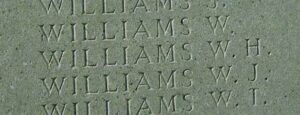
David George Wilson, Private, 1932, Welsh Regiment. David was the son of David and Ann Wilson, of 20, Mill Street, Carmarthen. He was a reservist, and was called up at the outbreak of war, embarking for France with the 2nd Battalion, Welsh Regiment, as part of 3 Brigade, 1st Division. David took part in the retreat from Mons to the Marne, and in the famous attack at Chivy-sur-Aisne. The Division was then sent to defend the City of Ypres, and the 2nd Welsh made a famous stand at Gheluveld, which stopped the German drive on the city. David was killed at La Bassee on 21 December 1914. He was 33 years old, and is commemorated on the Le Touret Memorial, Richebourg L’Avoue, France.
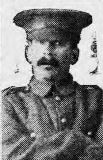
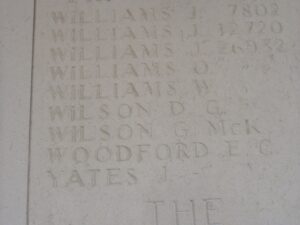
William Wilson, Private, 45603, South Wales Borderers. William was the son of George and Margaret Wilson, of 3, Towy-Side, Carmarthen. He lived with his wife, Jane Wilson, at 32, Glangwm Terrace, Abercynon prior to the war, and served with the 12th Battalion, South Wales Borderers. The Battalion formed part of 119 Brigade, 40th (Bantam) Division, and moved to France during June 1916, taking up the line near Loos. Late in 1916 they moved south to the Somme, and fought at the Battle of the Ancre, remaining in the area over the winter. In March 1917 the Germans withdrew to their shortened line, called the Hindenburg Line, and the 40th Division were one of the Divisions that followed the withdrawal. Later in the year they took part in the Battle of Cambrai, playing an important role in the attack on Bourlon Wood. William was killed in action here on 25 November 1917, aged 23. His body was never found, and so he is commemorated on the Cambrai Memorial, Louverval, France.

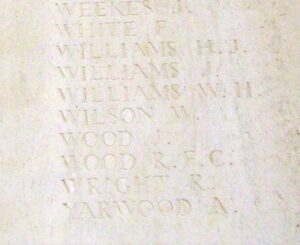
George Edgar Wright, Private, 355512, Royal Welsh Fusiliers. George was born at Leeds, the son of John Richard Wright and Isabella Wright. He worked for the GWR prior to the war, as a Blacksmiths Striker, in their Engineering Department at Carmarthen. He married Mary Louisa Jones at Carmarthen Methodist Chapel on 3 December 1915, and they lived at 10, Church Street, Carmarthen. George enlisted at Carmarthen on 15 January 1916 into the Montgomeryshire Yeomanry. They had been in Egypt since April 1916. George arrived there on 30 January 1917, just before they were merged with the Welsh Horse, to form the 25th Battalion, Royal Welsh Fusiliers. The new battalion was attached to 231 Brigade, 74th (Yeomanry) Division, and took part in the advance into Palestine. After fighting at the Battles of Gaza, and the capture of Jerusalem the Division was recalled to the Western Front, and arrived at Marseilles on 7 May 1918. George came home for two weeks leave before returning to the front. The Division then fought at the Second Battle of Bapaume during the great offensive, and fought in Flanders before returning to the Somme and fighting at the Battle of Épehy, as part of the offensive towards the Hindenburg Line. George was killed near Épehy on 18 September 1918. He is buried at Templeux-Le-Guerard Communal Cemetery Extension, France. George is not commemorated locally.
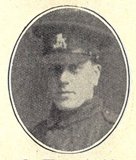
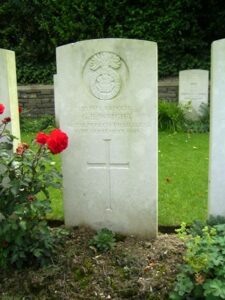
David John Yeo, MM, Private, 63131, Welsh Regiment. David was the third son of James Henry Yeo and Lydia Yeo, of 7 St. Catherine Street, Carmarthen. He was one of the four sons who served during the Great War, having enlisted at Carmarthen on 16 November 1914, and served at Gallipoli with the 1/4th Welsh. David returned home in January 1916, after succumbing to malaria, and served with the 533rd Agricultural Company, Labour Corps for two years. On 2 August 1918 David was sent to France to join the 14th Battalion, Welsh Regiment. He was awarded the Military Medal with the 14th Welsh, but was then posted to the 9th Battalion, Welsh Regiment, which was attached to 58 Brigade, 19th (Western) Division. David was killed during the Battle of the Sambre, on 4 November 1918, aged 20. He has no known grave, and is commemorated on the Vis-En-Artois Memorial, France.
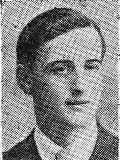
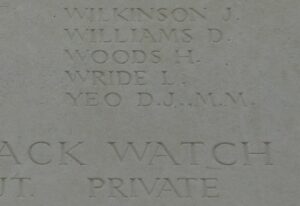
Herbert Sydney Zoller, Rifleman, 653079, London Regiment. Herbert was the son of Hester Zoller of Wandsworth. He married Flora Constance G. Thomas, of Castle Hill Villa, at Carmarthen in 1907, and the couple later resided at 34, Verdant Lane, Catford, London. Herbert enlisted at Camberwell into the London Regiment, and was posted to the 1/21st Battalion (First Surrey Rifles), London Regiment. On 16 March 1915 the battalion landed at Le Havre, where it became attached to 142 Brigade, 47th (2nd London) Division. The Division fought at the Battle of Aubers, and the Battle of Festubert during May 1915 and in September fought at the Battle of Loos, and subsequent Action of Hohenzollern Redoubt. They were north of Arras when the Germans attacked Vimy Ridge, and then moved south to the Somme, where they fought at the Battle of Flers-Courcelette, and then at the Battle of Le Transloy, where the Division captured Eaucourt l’Abbe, and took part in Attacks on the Butte de Warlencourt. Early in 1917 the Division moved north to Belgium, and took part in the Battle of Messines. Herbert was killed here during the capture of White Chateau on 7 June 1917. He was 36 years old, and is commemorated on the Ypres (Menin Gate) Memorial, Belgium. A bundle of his letters home were sold at Strides Auction House, July 2010.
